Don’t want the usual tourist trip to Rome? See the other side of the Eternal City with these unique ways to experience the best things to do in Rome and unique ways to see some of Rome’s top attractions that aren’t on your list…yet!
There are so many unique things to do in Rome. It’s not only one of the oldest but the most beautiful and fascinating cities in the world. A place where you can literally walk amongst the ruins of its two-and-a-half thousand-year-old history. Sometimes called “Roma Aeterna” (The Eternal City) and “Caput Mundi” (Capital of the World), these two names communicate the two central notions of ancient Roman culture.
My affection for Rome all started when I first visited the Italian capital back when I was 22. Not only was it my first trip abroad, but it was also a sort of pilgrimage to travel back to the country where my dad and his family had emigrated from. My two-week trip set the wheels in motion for what eventually led to me learning Italian and moving to Rome.
Don’t miss my guide to Rome Tips and Tricks: 27 Things You Should Know Before You Go to Rome
I cringe whenever people tell me they are only visiting Rome for only a couple of days. Don’t let the relatively small size of the historic centre fool you. There is so much more to Rome than the Trevi Fountain and Colosseum. Be aware that all these typical tourist hotspots are swarming with other like-minded tourists which makes for a rather stressful experience. What’s more, the surrounding restaurants take advantage of making a quick tourist buck by serving mediocre food, that’s why you’ll hear mixed reviews from people after their experience in Rome. Luckily, you’ve stumbled across my website where I’ll continue to share further insights on Rome. Be sure to subscribe to my newsletter in the footer so you don’t miss a beat.
That being said, promise me that you will stay in Rome for at least three days (Check out my 3 day Rome itinerary here). That’s me being lenient, too! By all means, go ahead and see the attractions Rome is famous for, but make sure you allow enough time to go off the beaten track and visit these must-see beauties that will make your experience even more memorable. If you can, allow at least one day for a day trip from Rome.
When choosing where to stay in Rome I recommend basing yourself in a central location to make accessing each of the places easier. As for when to visit Rome, that will depend on your priorities. Use my guide on the best time to travel to Italy to help you decide when is best for you.
Watch unique things to do in Rome video guide!
Map of the unique things to do in Rome
To help you locate each place included in this guide to Rome, I created this handy map which also includes images for each pin. Zoom in and click each pin for more details.
1. Step Inside Santo Stefano Rotondo, the First Circular Church in Rome.
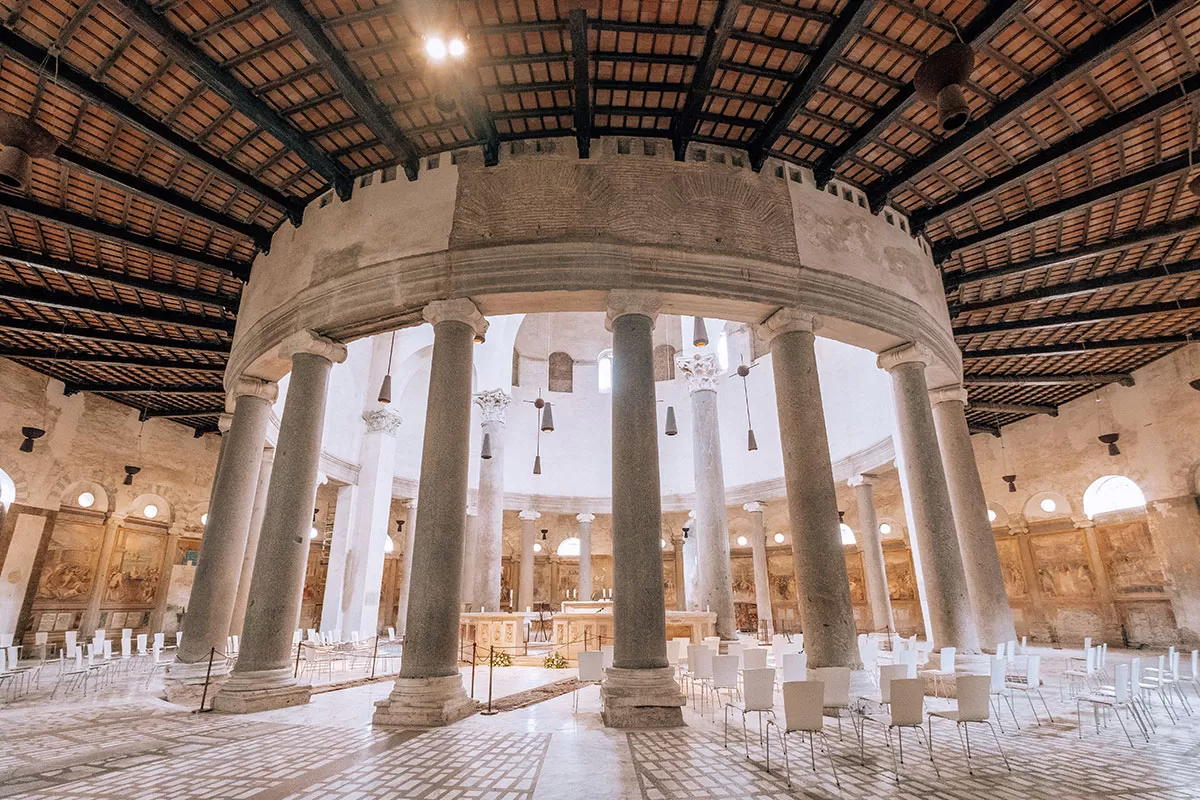
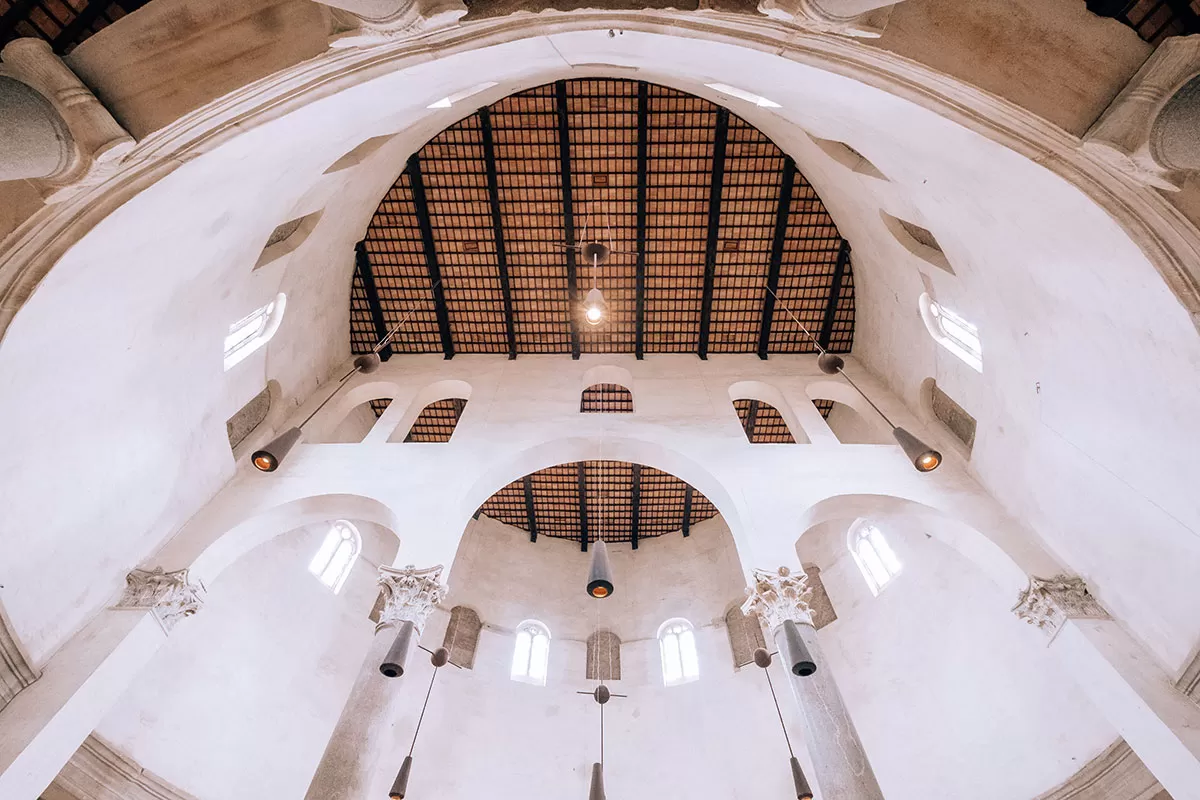
On a crisp autumn day, I accompanied my landlady Rosaria on a long walk. She took the opportunity to show me one of the largest and oldest circular churches in existence, Santo Stefano Rotondo. Upon stepping into this church, I immediately fell in love with its spiraling columns.
Built on top of a 2nd-century Mithraic temple, this church dates back to the 5th century A.D. and is dedicated to St. Stephen, the first martyr.
The altar in the centre of the church was ordered by Pope Gregory XIII (1572-85), along with the frescoes on outer arcade walls, painted by Antonio Tempesta and Niccolo Circignani, which portray the grisly deaths of 34 martyrs.
Take this guided tour of Santo Stefano Rotondo as part of this Secret Rome tour. Opening times are Tuesday-Sunday 10:00-13:00 / 14:00-17:00 and closed Mondays.
2. Visit a Three-Tiered Complex at St Clement Basilica Dating Back to 64 AD (Basilica of San Clemente al Laterano)
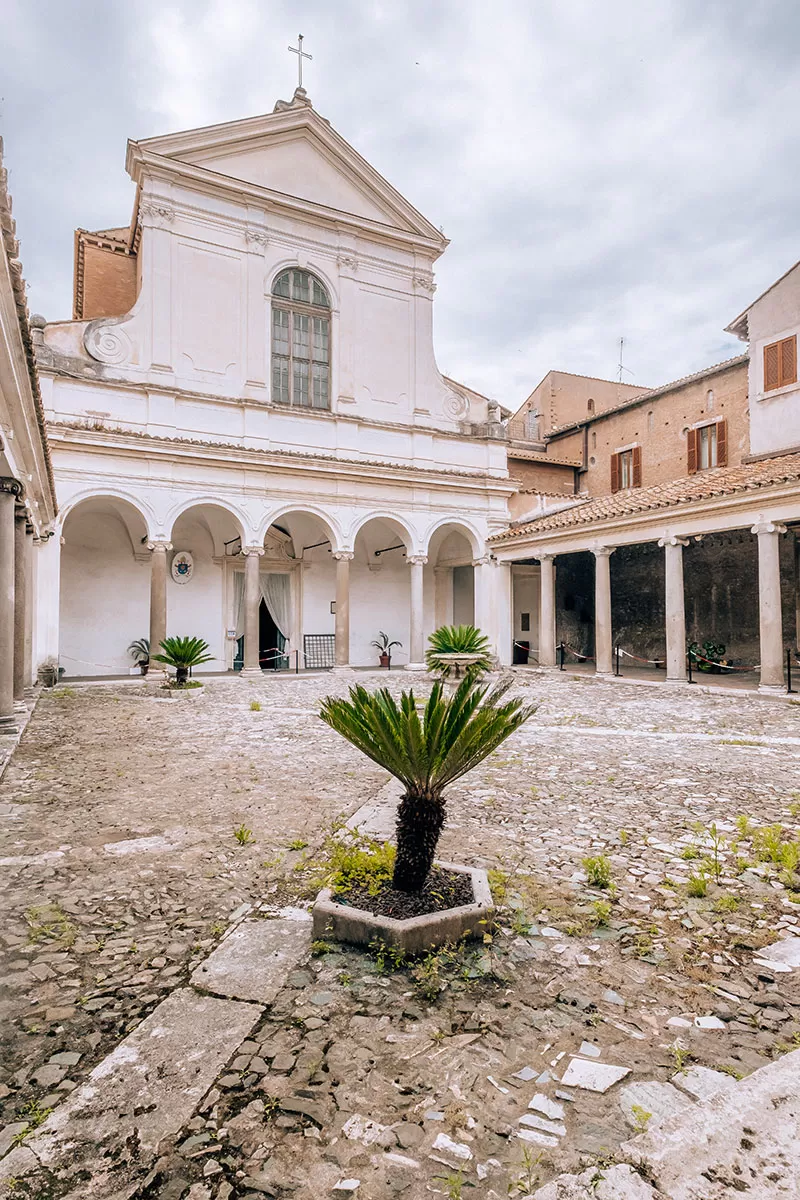
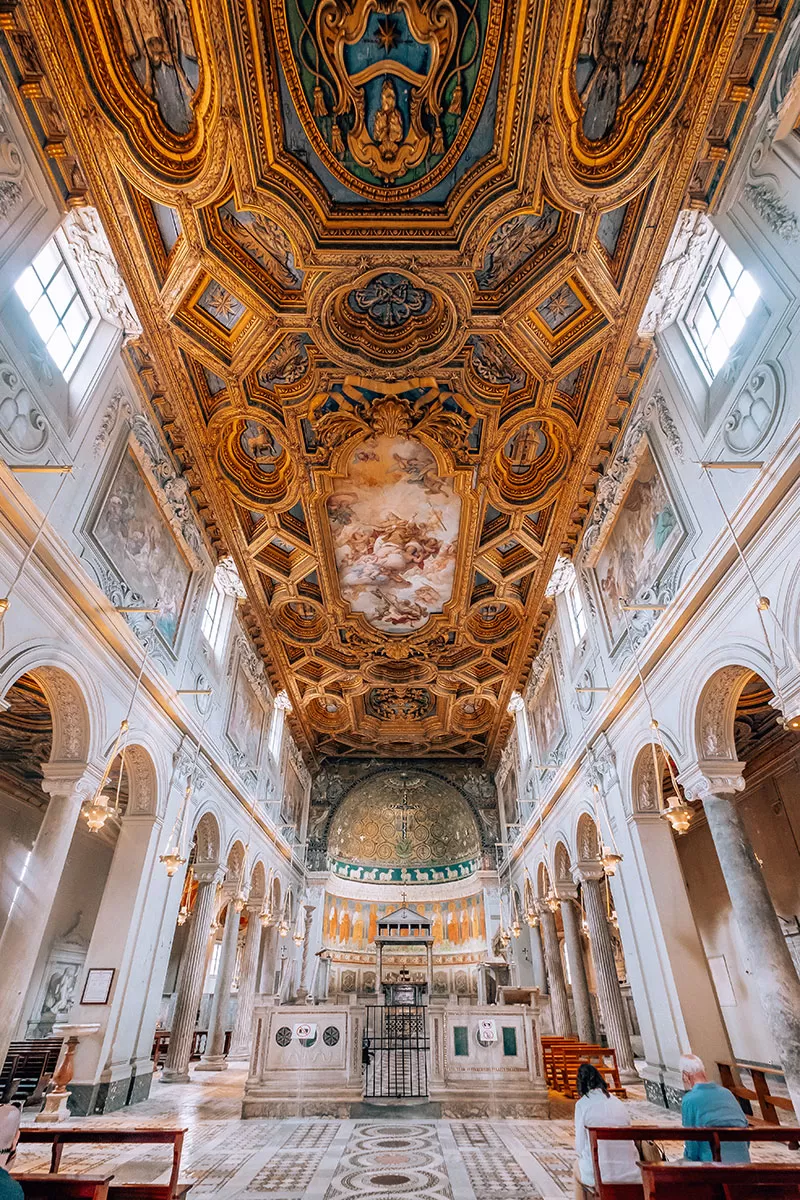
In 1857, the Dominican Friar Mullouly who lived in the monastery at San Clement began excavating beneath the relatively modern church, which dates back to the 1200s. He was rewarded with one of the most interesting discoveries of his time; an early Christian basilica dating back to 350 A.D. Mullouly continued digging and discovered yet another, more ancient, layer from 1 A.D. All of this is located just a short walk from the Colosseum!
Upon entry, you will see the beautiful interior of St Clement Basilica which features a marvelous 12th-century apse mosaic depicting the “Trionfo della Croce” (Triumph of the Cross) and wonderful Renaissance frescoes in the Chapel of St Catherine.
For a small admission fee, you can explore the excavations of the lower two levels. Take the steps down to the 4th-century basilica which was mostly destroyed by Norman invaders in 1084. Look out for the faded 11th-century frescoes illustrating the life of San Clement.
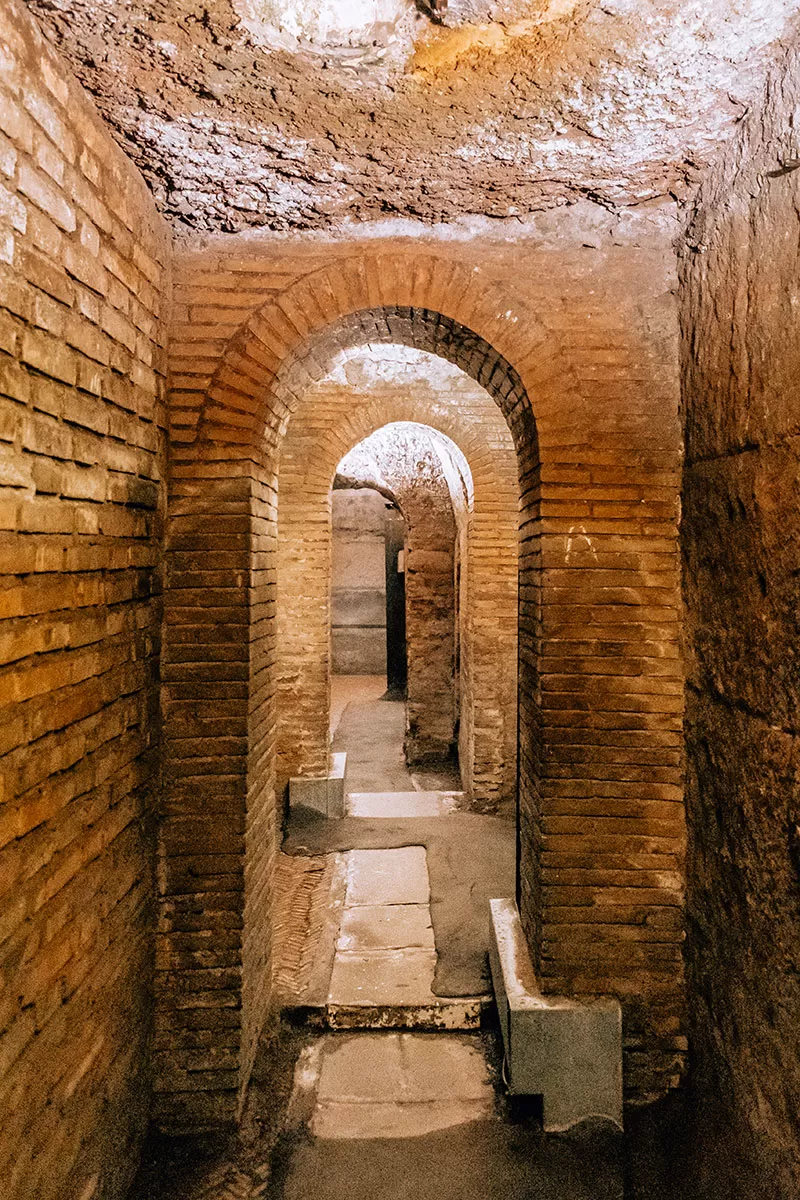
Continue down another level to see a 1st-century Roman house and a dark, 2nd-century temple to Mithras which features an altar showing the god slaying a bull. To add to the atmosphere, you will hear the eerie sound of a subterranean river flowing through a Republic-era drain. This place is NOT to be missed!
Book your private tour of St Clement Basilica here.
3. See the Magical Optical Illusion of St Peter’s Dome
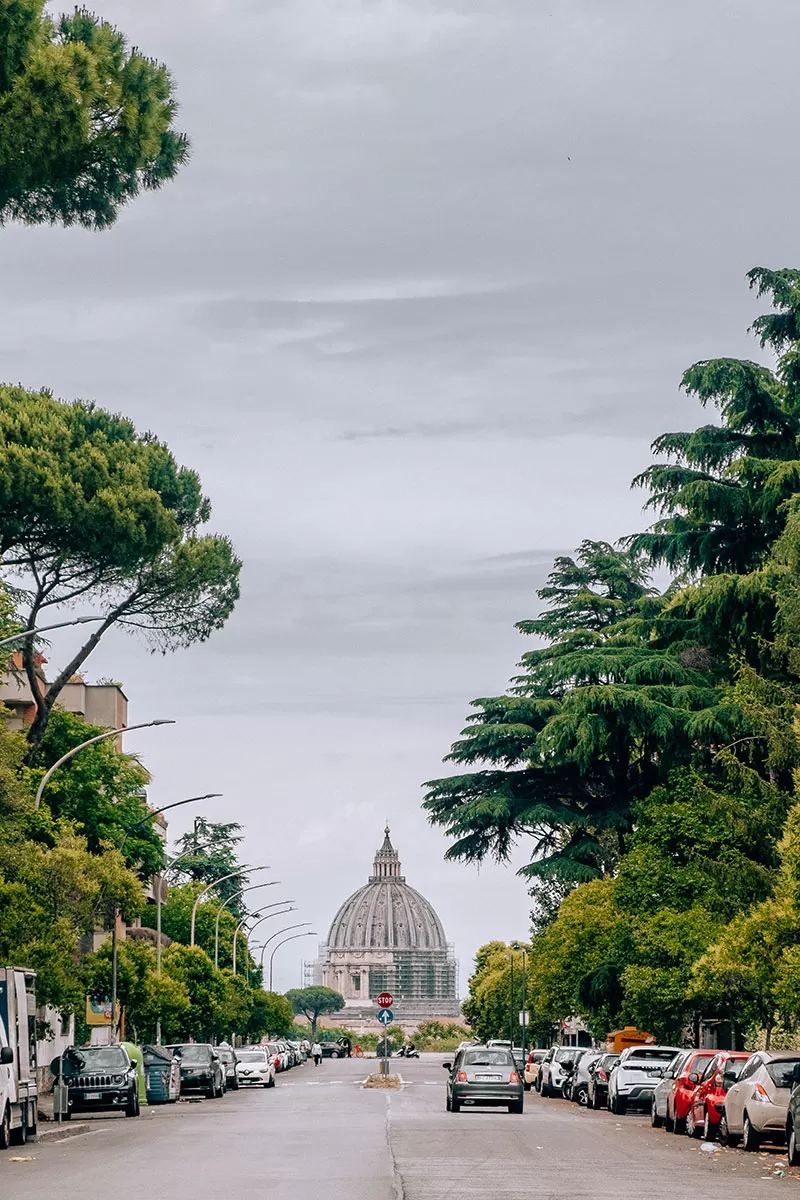
From the far end of this long hilltop road, the dome appears large and imposing, but as you walk towards the dome you’ll begin to see the optical illusion. The nearer you get, the smaller the dome appears to the point where it looks tiny. Wondering how the illusion works? Well, it’s said to be attributed to the layout of the buildings in the street.
The illusion is best enjoyed and more dramatic when viewed from a moving vehicle. It’s an ideal spot to end your day out in the city centre. Via Niccolò Piccolomini is located here.
Click here for my detailed guide to the best views in Rome.
4. Wander Through Ancient Thermal Baths at the Baths of Caracalla (Le Terme di Caracalla)
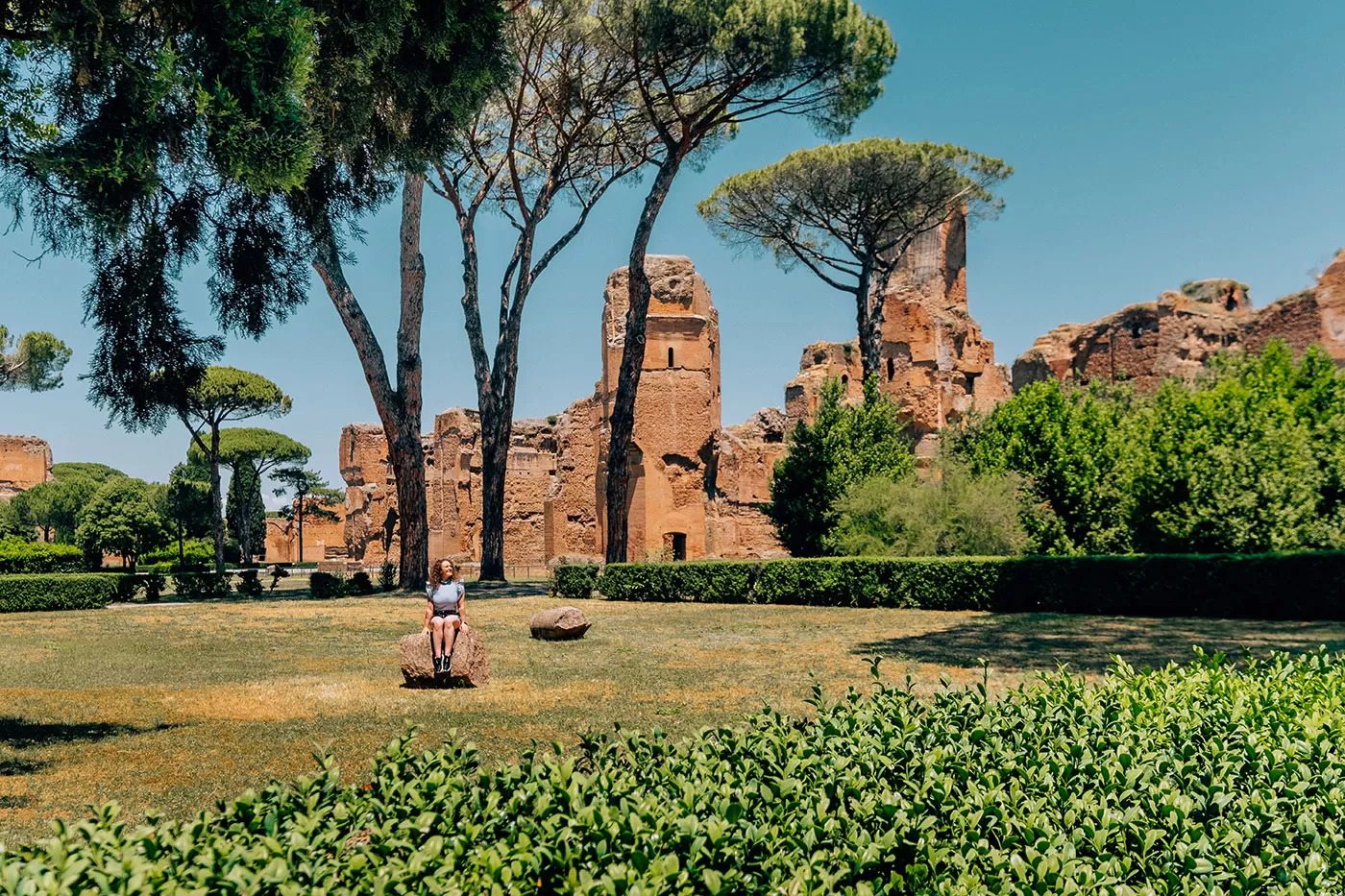
Granted, this one may have made its way onto your list, but it’s worth mentioning. The Baths of Caracalla are the largest surviving ruins of an ancient bath complex in Rome. This is a must-add item to your list of things to do in Rome. The crumbling complex of brick walls, broken archways, and the remains of floor mosaics extends over an impressive 33 acres.
Commissioned by Septimius Severus before his death, the baths were named after his son, emperor Caracalla who reigned from AD 211-221. Caracalla is remembered as one of the most notorious of emperors due to the massacres and persecutions he authorised and initiated throughout the Empire. Despite his threatening demeanour, Caracalla proved to be a strong administrator evidenced by his granting Roman citizenship to all freemen throughout the Roman Empire.
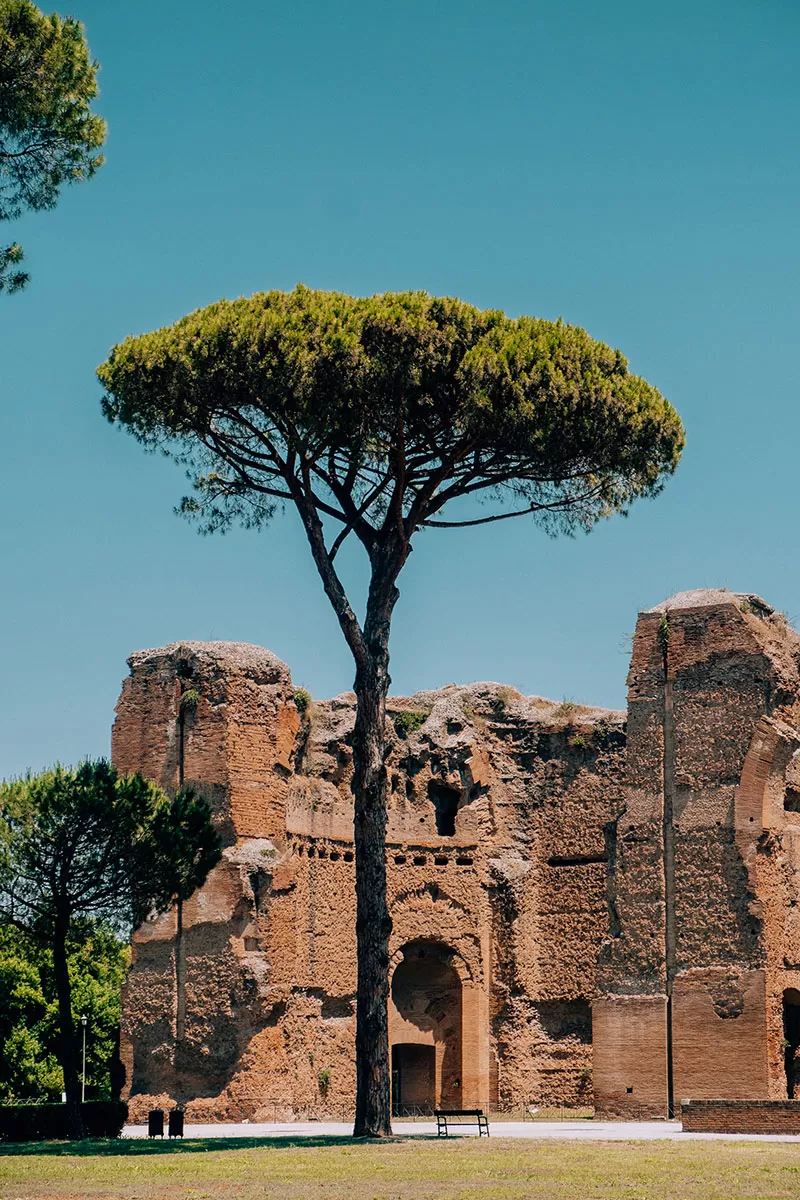
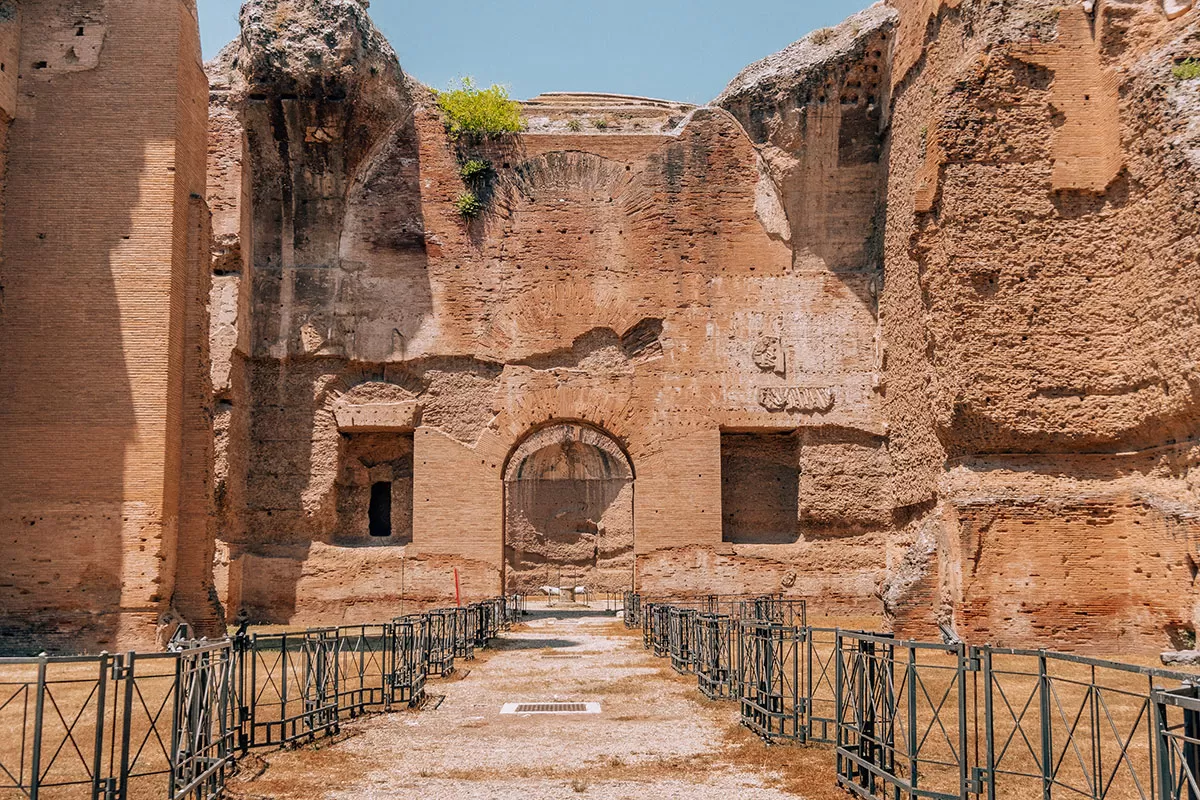
Be sure to have a guided tour of this marvel. You’ll be fascinated to learn how the temperature of the water was controlled, and how each of the three major baths (tepidarium, calidarium, and frigidarium) were used.
If you’re visiting during the summer months you can even see live performances. The baths create a superb and dramatic backdrop while watching an opera.
Book your guided tour of the Baths of Caracalla here
5. Take Stroll Along the Oldest and Longest Road of Rome, Via Appia Antica
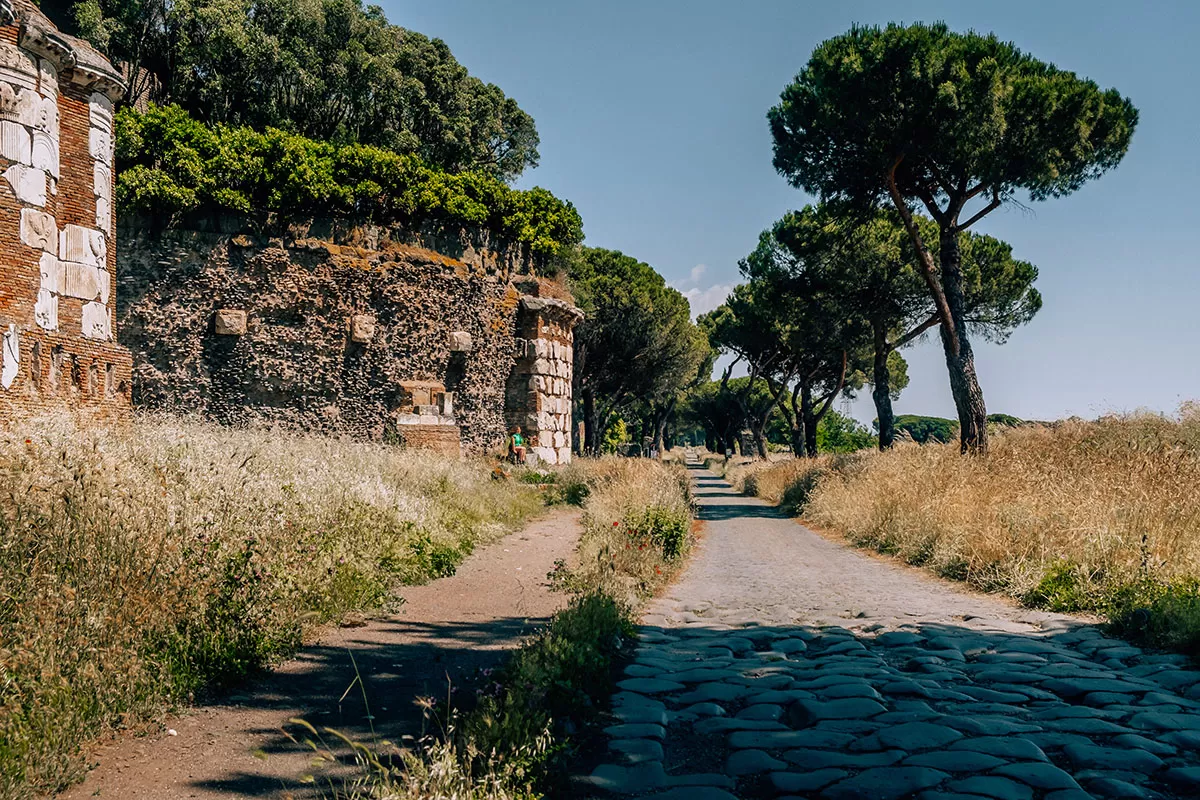
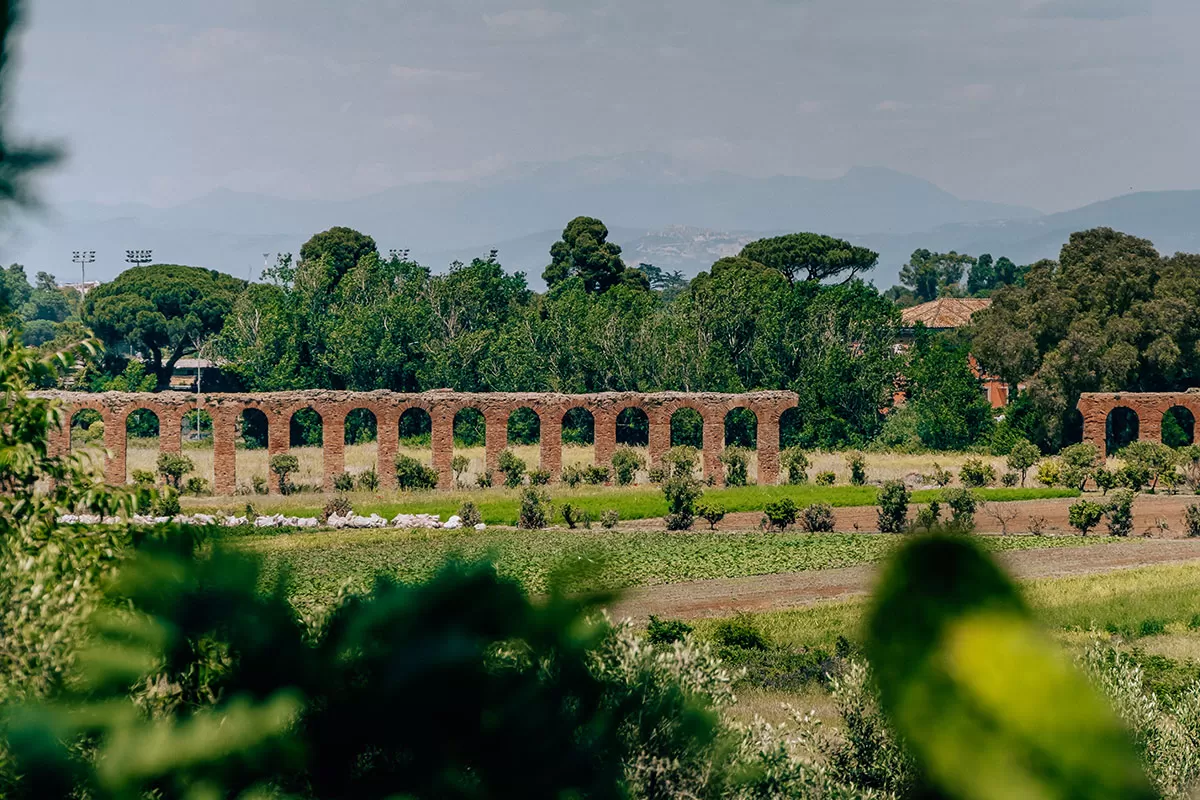
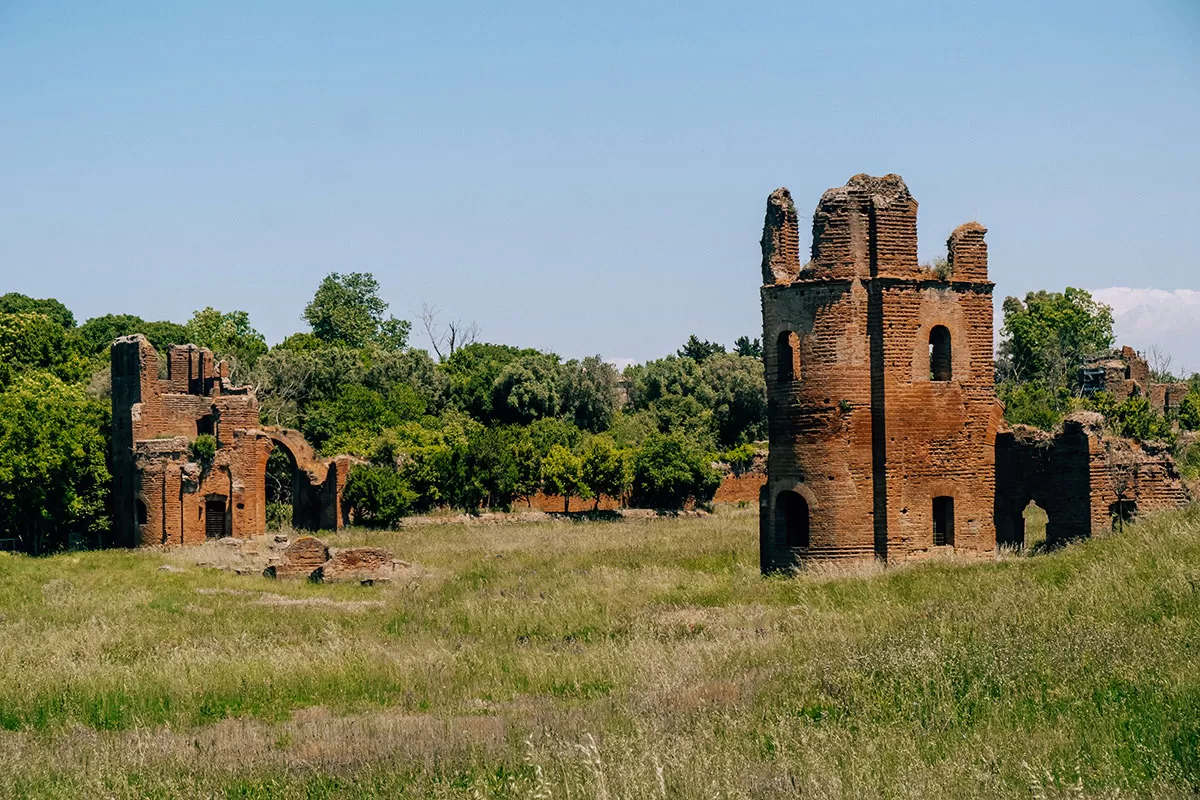
It was named after Appius Claudius Caecus, a Roman censor who began and completed the first 90 kilometres as a military road to the south in 312 BC during the Samnite Wars. The Appian Way was the first long road built specifically to transport troops outside the smaller region of greater Rome.
Via Appia Antica is a gorgeous cobbled road surrounded by towering pine trees, grassy fields, and dotted with ancient wonders. While you may not be able to visit all 300km, three major catacombs (San Callisto, San Sebastiano and Santa Domitilla) are open for guided tours. Wondering why there are so many catacombs here? Well, Roman law forbade burial places within city limits so the early Christians buried their dead in 300km of underground catacombs.
Another interesting fact is that Spartacus and six thousand of his slave rebels were crucified here in 71 BC. After the catacombs is Circus Maxentius which is much better-preserved compared to Circus Maximus. From here is the Tomb of Cecilia Metella, a round mausoleum that was later converted into a fortress.
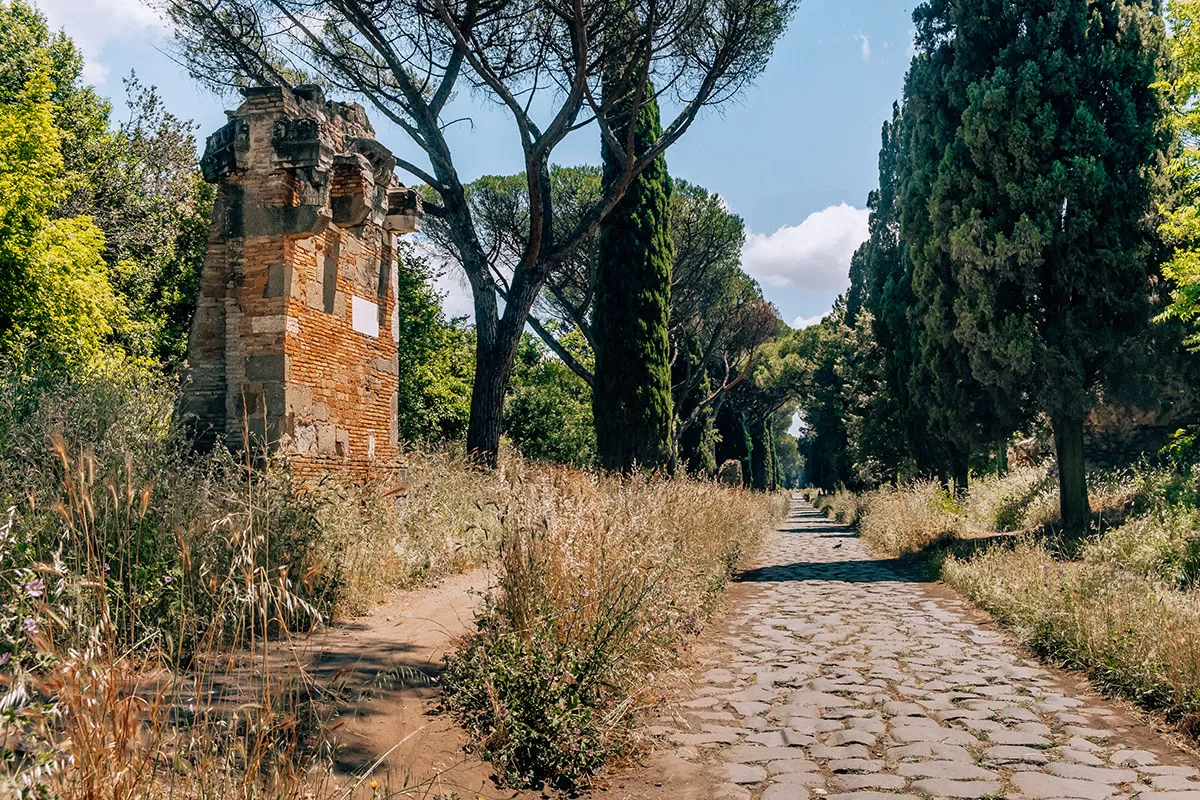
Since the Appia Antica is long, joining this small tour group like this electric bike tour is a great idea. This is another top rated-tour.
6. Take the Pope’s Secret Escape Route at Il Passetto di Borgo
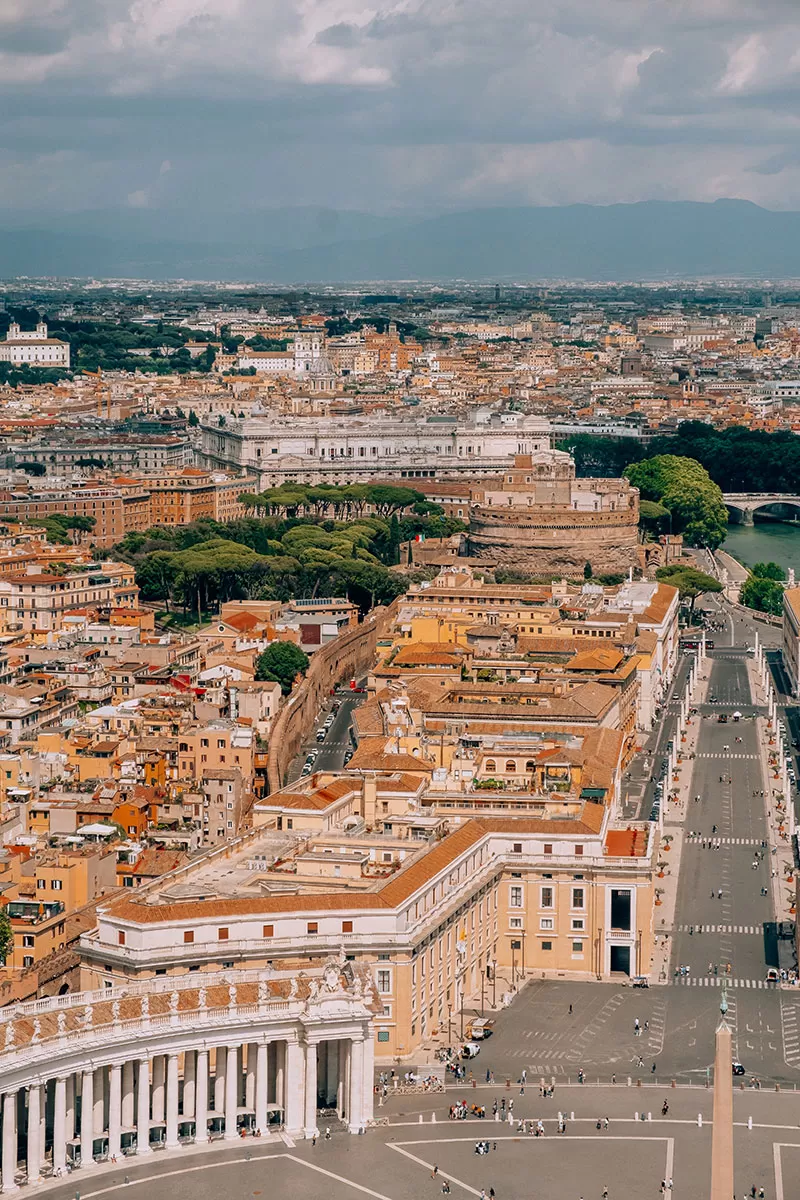
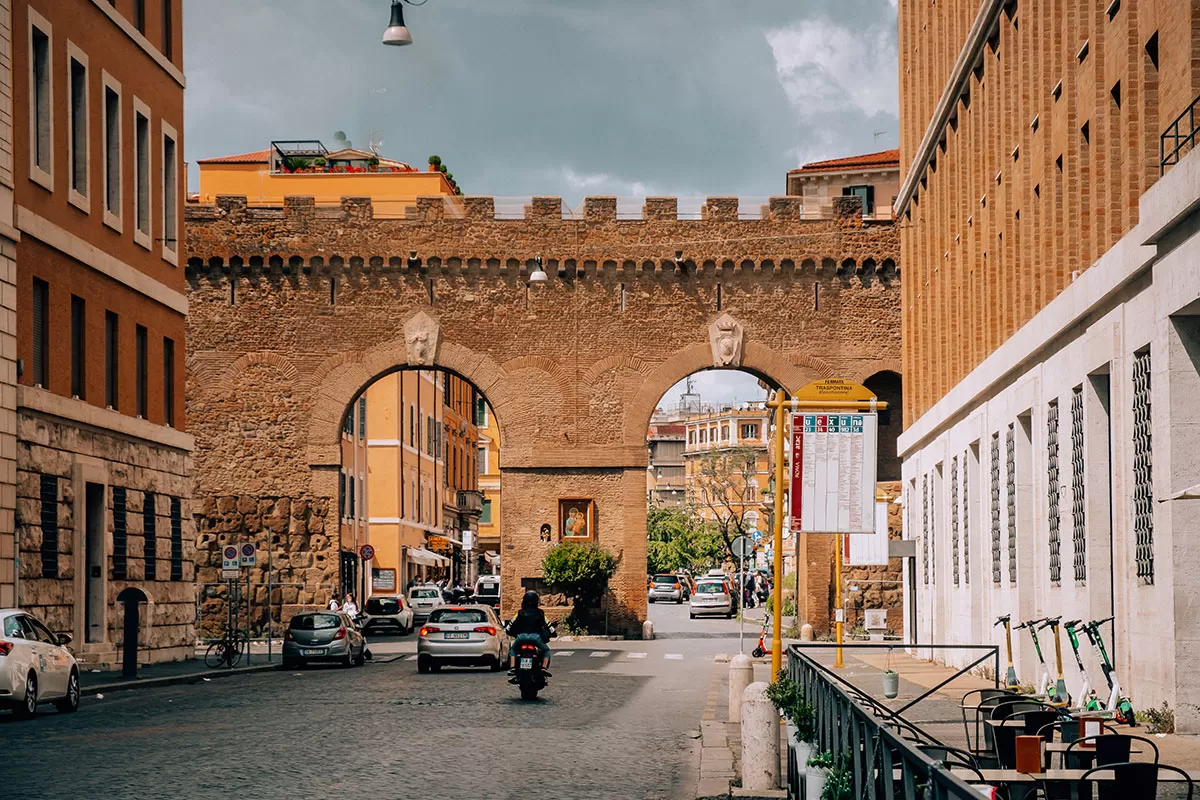
The Passetto di Borgo, or simply Passetto meaning small passage, is an elevated passage that links the Vatican City with Castel Sant’Angelo. This corridor, located in the district of Borgo, was erected in 1277 by Pope Nicholas III and extends for approximately 800 metres (2,600 ft.). On several occasions, it served as an escape route for Popes in danger.
In 1494, Pope Alexander VI crossed it when Charles VIII invaded the city. Then in 1527 during the Sack of Rome, Clement VII escaped to safety through this passage when troops of the Holy Roman Emperor massacred almost the entire Swiss Guard on the steps of St Peter’s Basilica.
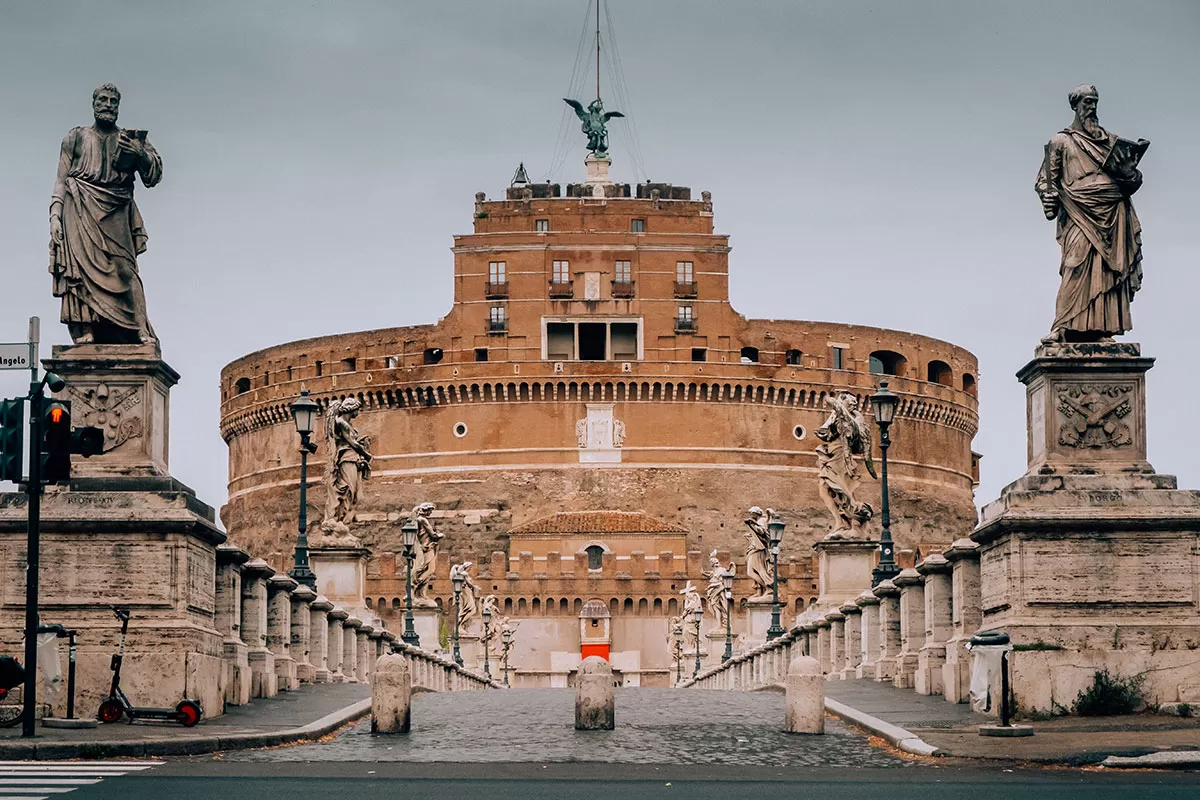
This has to be one of the coolest things I’ve done in Rome. By walking in the footsteps of Pope’s who sought safety when Rome was under threat, you get a sense of how they must’ve felt as they fled along this passageway. Unfortunately, Il Passetto is only open in the summer for guided tours during the event “Notti d’Estate a Castel Sant’Angelo” (Summer Nights at Castel Sant’Angelo). Be sure to book your tickets here!
7. Marvel at the Best Private Art Collection at Galleria Borghese
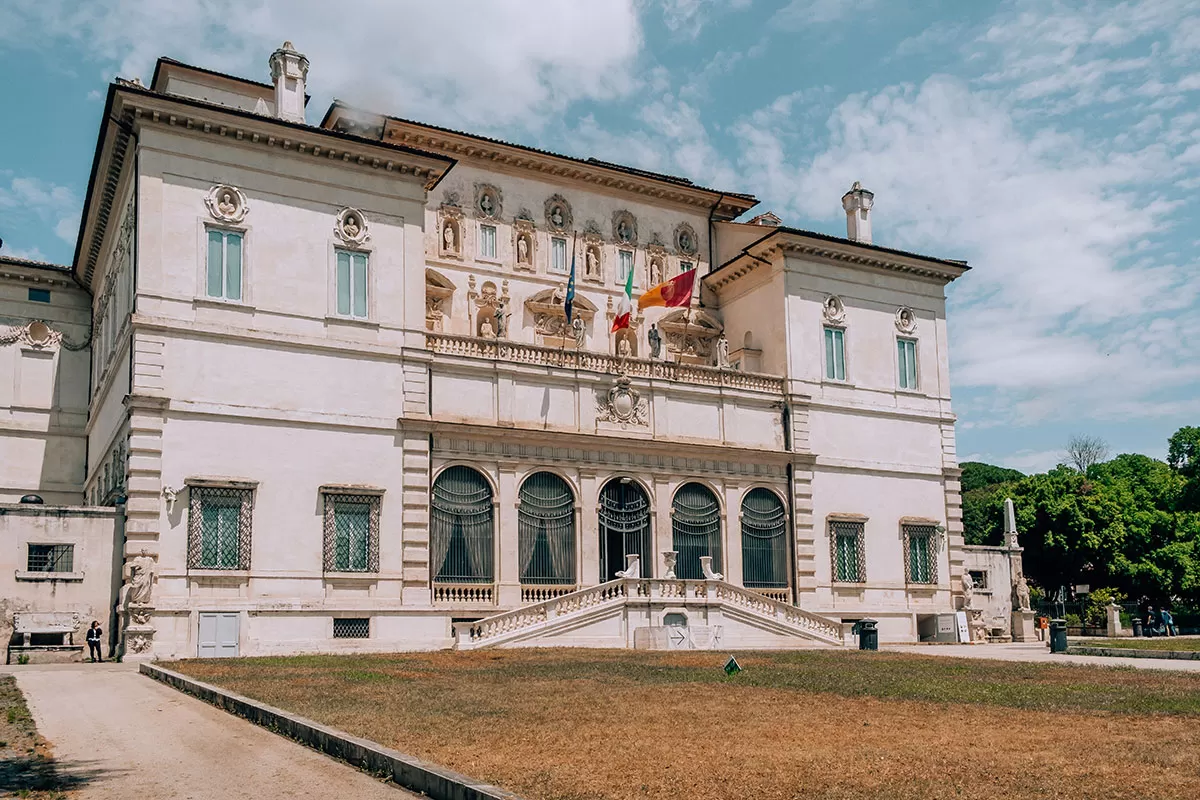
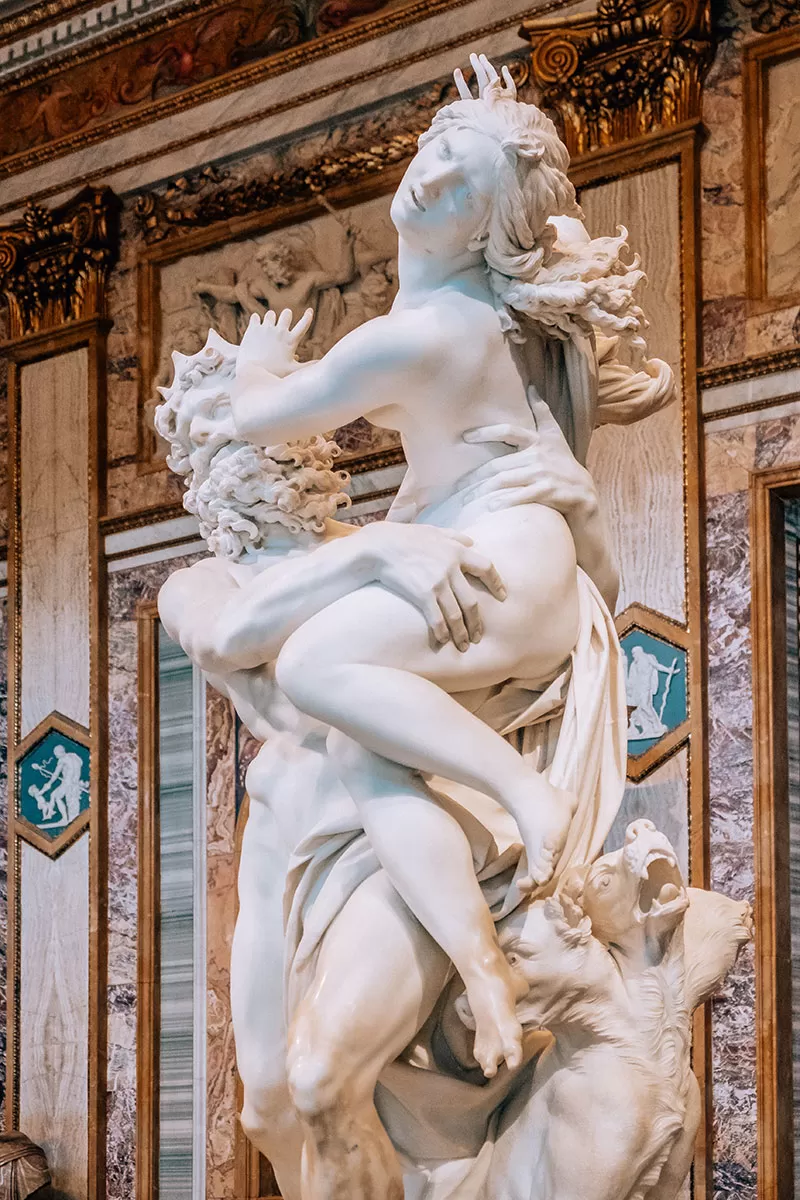
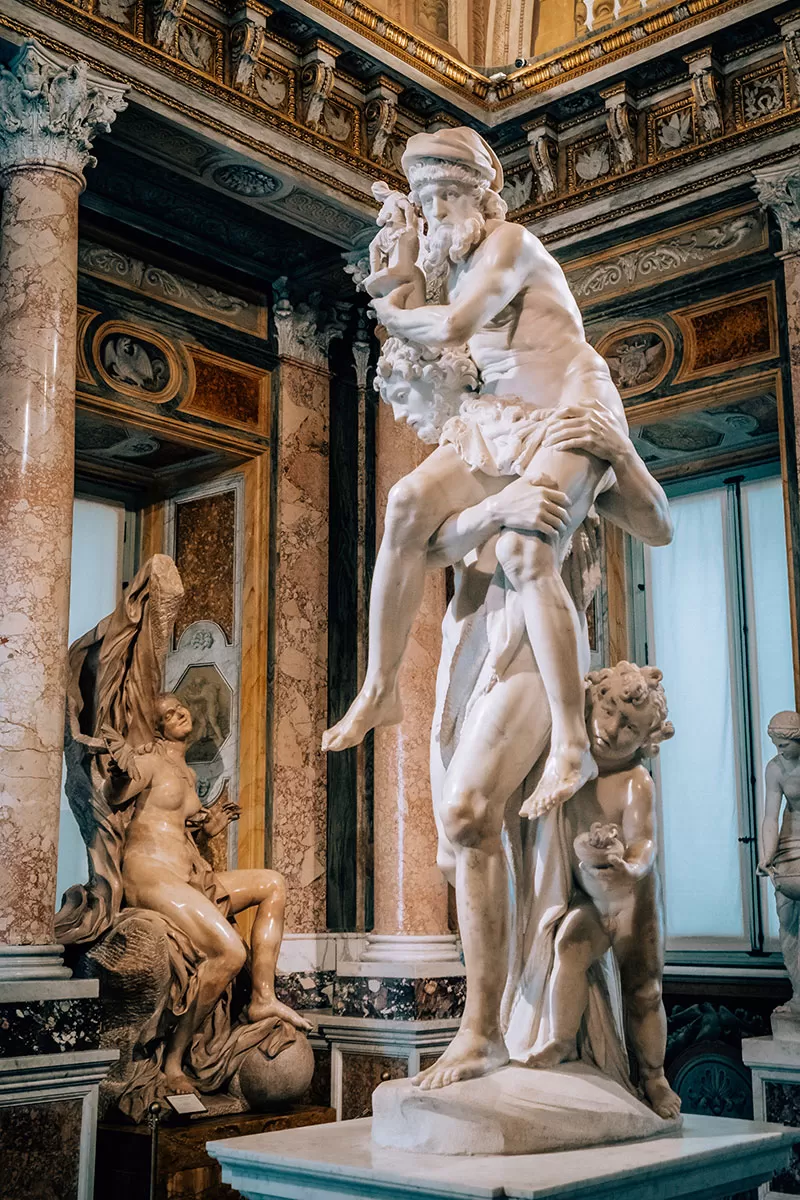
The collection was begun by Cardinal Scipione Borghese, the most knowledgeable and ruthless art collector of his day. Scipione Borghese was an early patron of Gian Lorenzo Bernini and an ardent collector of works by Caravaggio. Amongst the gallery’s gems are paintings by Caravaggio including Boy with a Basket of Fruit and St Jerome Writing and Sacred and Profane Love by Titian.
My personal favourite part of the collection is the sensational sculptures by Bernini. Look out for Bernini’s “Ratto di Proserpina” (Rape of Proserpina) and “Apollo e Dafne” (Apollo and Daphne).
Closed on Monday’s, the Galleria Borghese must be booked in advance as admittance is set at two-hourly intervals and time slots fill up quickly. This ensures you’ll have the pleasure of wandering around without having to navigate through the crowd. Reservations are essential, as visitor numbers are regulated. Check availability and book your timed entrance here. Skip the queue and buy your tickets here or if you’re like me, pay a little bit more for a small group guided tour here.
8. Savour the spectacular city views from Villa Borghese
Residents and visitors are drawn to Villa Borghese for the bellissimi giardini (beautiful gardens.) But the crowning glory is the views over Rome from the statue-lined promenade, the Passeggiata del Pincio.
Add to the mix famous villas, a picturesque lake, and 80 hectares of green space, and you’ve got the perfect al fresco lunch setting.
That’s not all. I’ve picked out a few other illuminating facts that mark Villa Borghese as one of the most unique things to do in Rome, worthy of putting aside an afternoon.
The cosmic views from the Villa Borghese gardens
The panoramic vistas atop Pincian Hill in the Villa Borghese gardens are worth the climb. Looking out over the rooftops of Rome, you can see the Vatican City and, directly below, the lively Piazza del Popolo (another must-visit for fountain fans.)
The Spanish Steps adjoin the park
You can enter the park from one of the leading attractions in Rome, the Spanish Steps. For an idyllic walk, start at the Spanish Steps and wind your way through the English-style landscape gardens. Stop to take in the views from Passeggiata del Pincio before leaving via Piazza del Popolo.
Haven’t booked your accommodation yet? Staying close to the Spanish Steps is one of the best locations in the city. Check out my guide on where to stay in Rome for ideas on where to stay and recommendations for hotels and apartments for all budgets. Don’t miss my complete guide to the best apartments and hotels near the Spanish Steps.
There are 90 points of interest in the gardens
The original Villa Borghese is well-known. Yet numerous statues and monuments are peppered throughout the park, plus several other museums in and around the gardens. There is even a zoo, the Bioparco di Roma.
The Galleria Borghese is a joy for art lovers
Art lovers are clearly spoilt for choice in Italy’s capital. But if you can’t get enough art, then the Borghese art gallery is one of the top things to do in Rome. The villa (full name: Villa Borghese Pinciana) is a pristine, gleaming example of Baroque architecture. Its collection includes exceptional art from lesser-known artists, alongside world-class sculptures of Gian Lorenzo Bernini. Reservations are essential, as visitor numbers are regulated. Check availability and book your timed entrance here.
The Villa Medici is as impressive as Villa Borghese
The Villa Medici is a fine example of Renaissance architecture and is also found in the gardens.
Hosting the French Academy in Rome, the villa boasts its own picturesque gardens, intriguing history, and art exhibitions. It makes a compelling alternative if you can’t find a conveniently timed slot for Villa Borghese.
Distance from the Sistine Chapel: 1.5 miles / 30 mins walk
Metro Stops nearby: Metro Line A (orange) – Spagna / Flaminio – Piazza Del Popolo (for Galleria Borghese) You can also catch the tram direct into the park on line 2
When to visit Villa Borghese: The park never closes. As the capital’s third largest park, there is never a bad time to visit. Villa Medici’s opening hours are: Monday, Wednesday, Thursday, and Sunday – 10am to 7pm. Closed on Tuesdays. Friday and Saturday – 10am to 7.30pm.
Galleria Borghese’s opening hours are Tuesday to Sunday – 9am to 7pm Final entrance is at 5.45pm.
Visitor numbers are limited. Save time and book your slot with skip-the-line tickets.
9. Walk in the Steps of Gladiators Under the Colosseum Arena Floor and Access the Third Tier
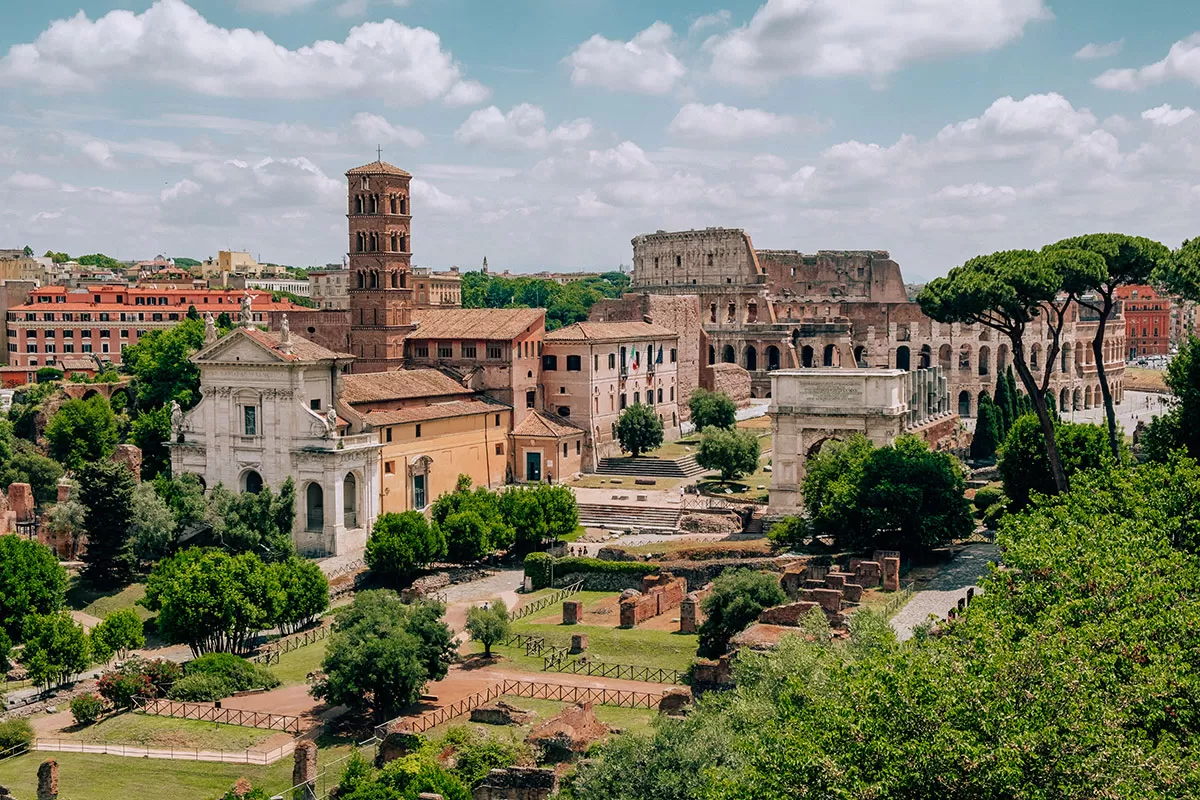
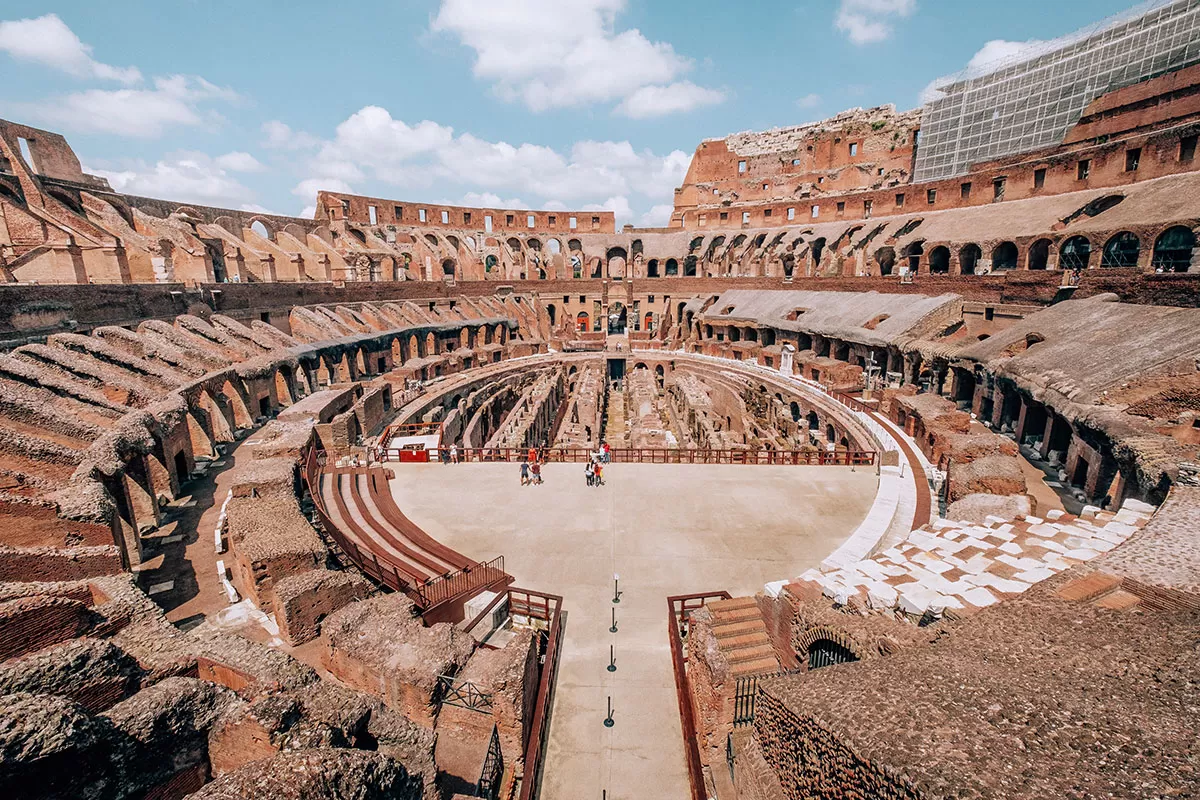
Below the arena floor you’ll see the subterranean backstage that was completely filled in during the 5th century AD, as a result, has preserved the area considerably. On the tour, you’ll see where slaves worked, where wild animals such as lions, tigers, hyenas, and bears were kept and see where gladiators rested, ate, and prayed.
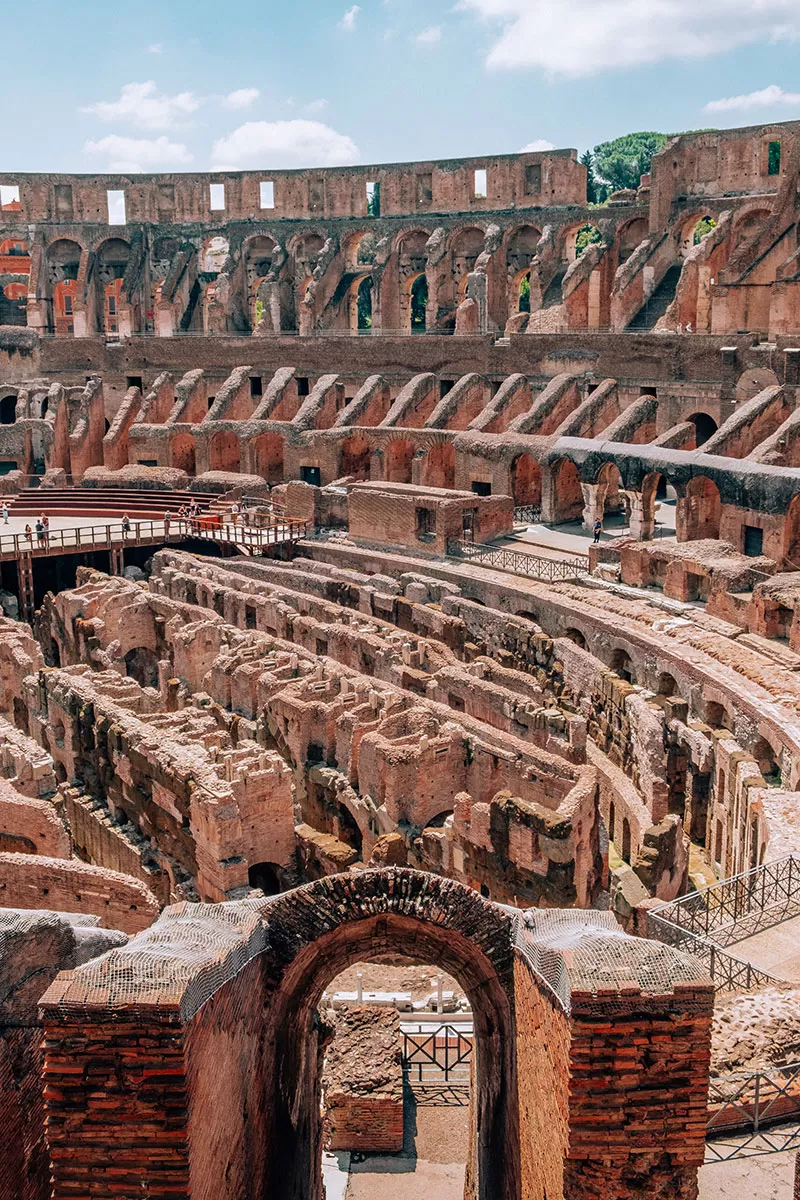
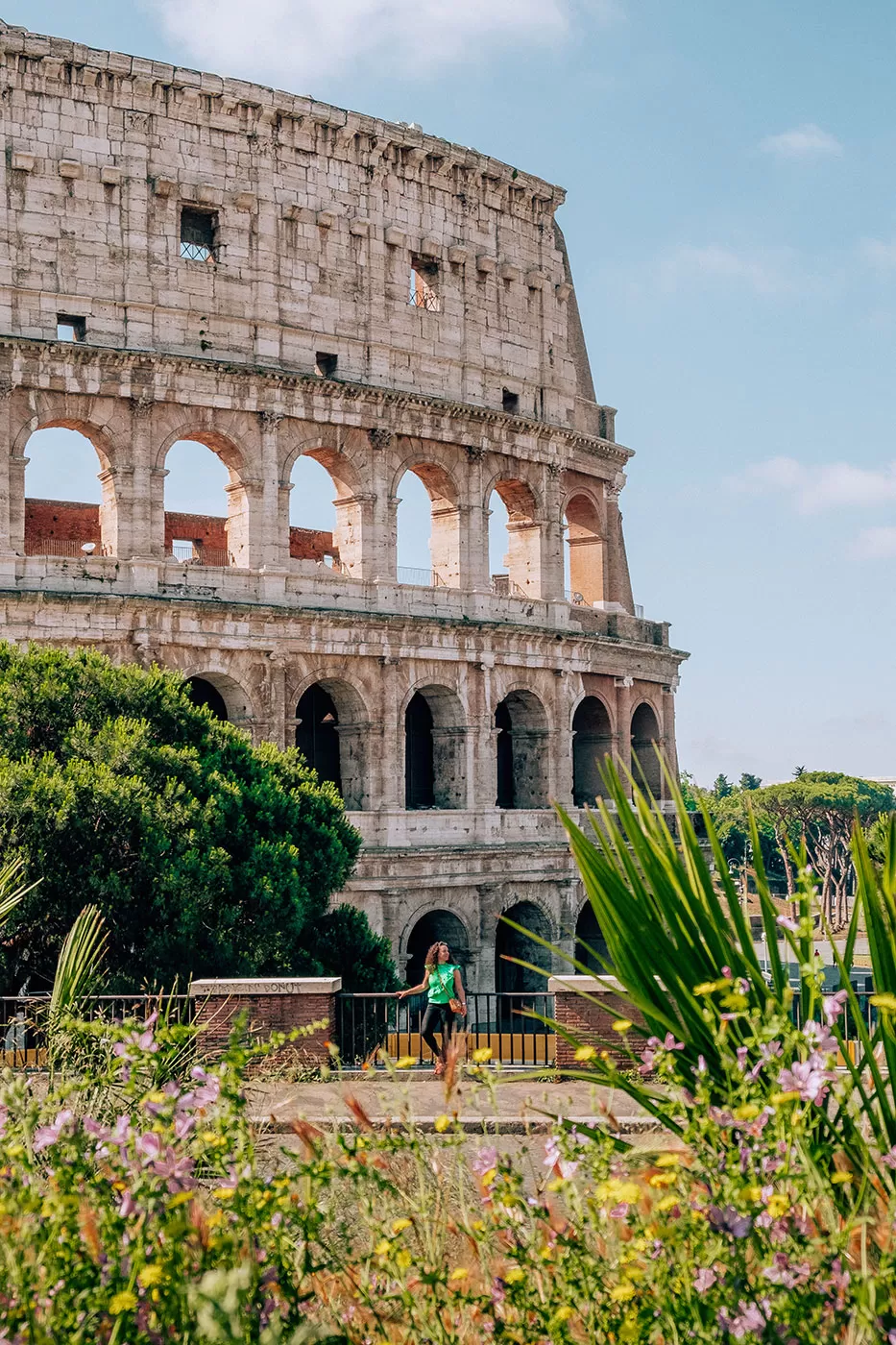
I also recommend visiting the hidden underground palace of Emperor Nero, called Domus Aurea or Nero’s “Golden Palace” located just opposite the Colosseum. Check times and book your tour here.
10. Visit Quartiere Coppedè, a Hidden Fairy-Tale Neighbourhood
Unknown to most tourists and even the locals, Quartiere Coppedè gets its name from Gino Coppedè, a Florentine architect who designed and built the quarter between 1913 and 1926.
Upon entering this tiny neighbourhood from Via Tagliamento and Via Dora, you’ll see Tuscan turrets, Liberty sculptures, Moorish arches, Gothic gargoyles, frescoed façades, and palm-fringed gardens.
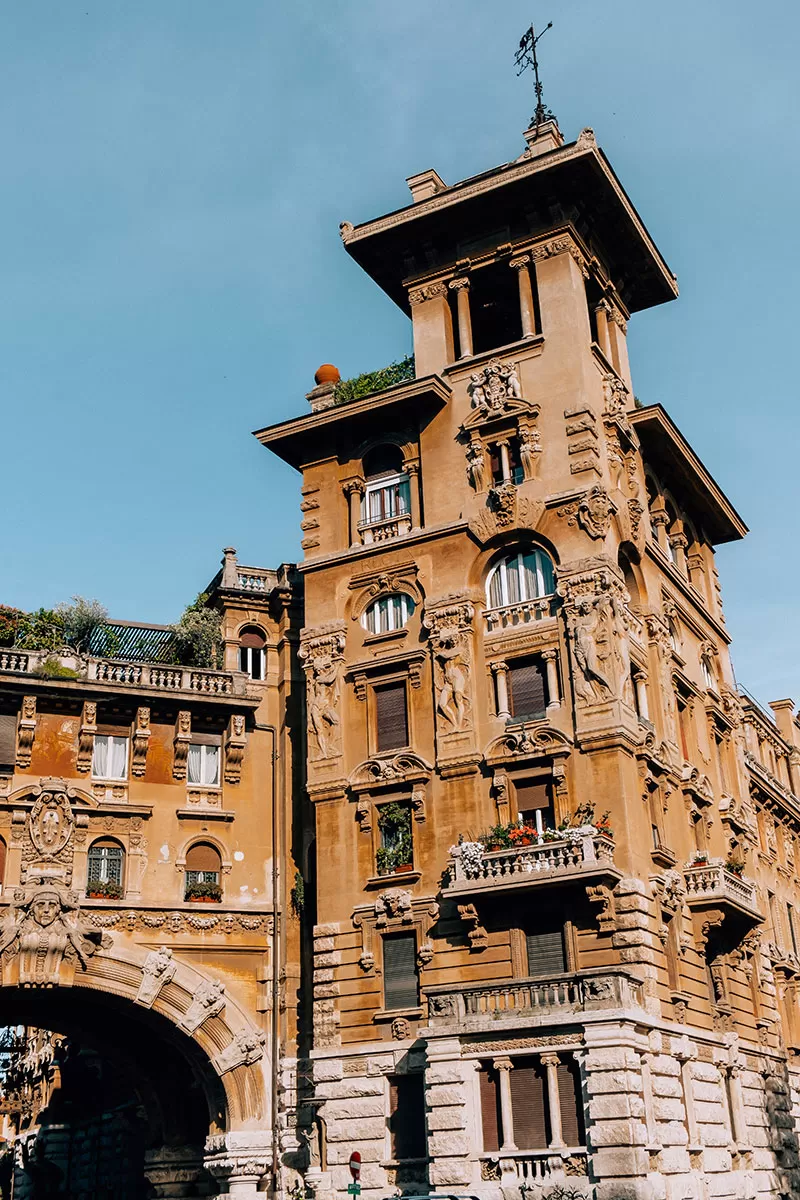
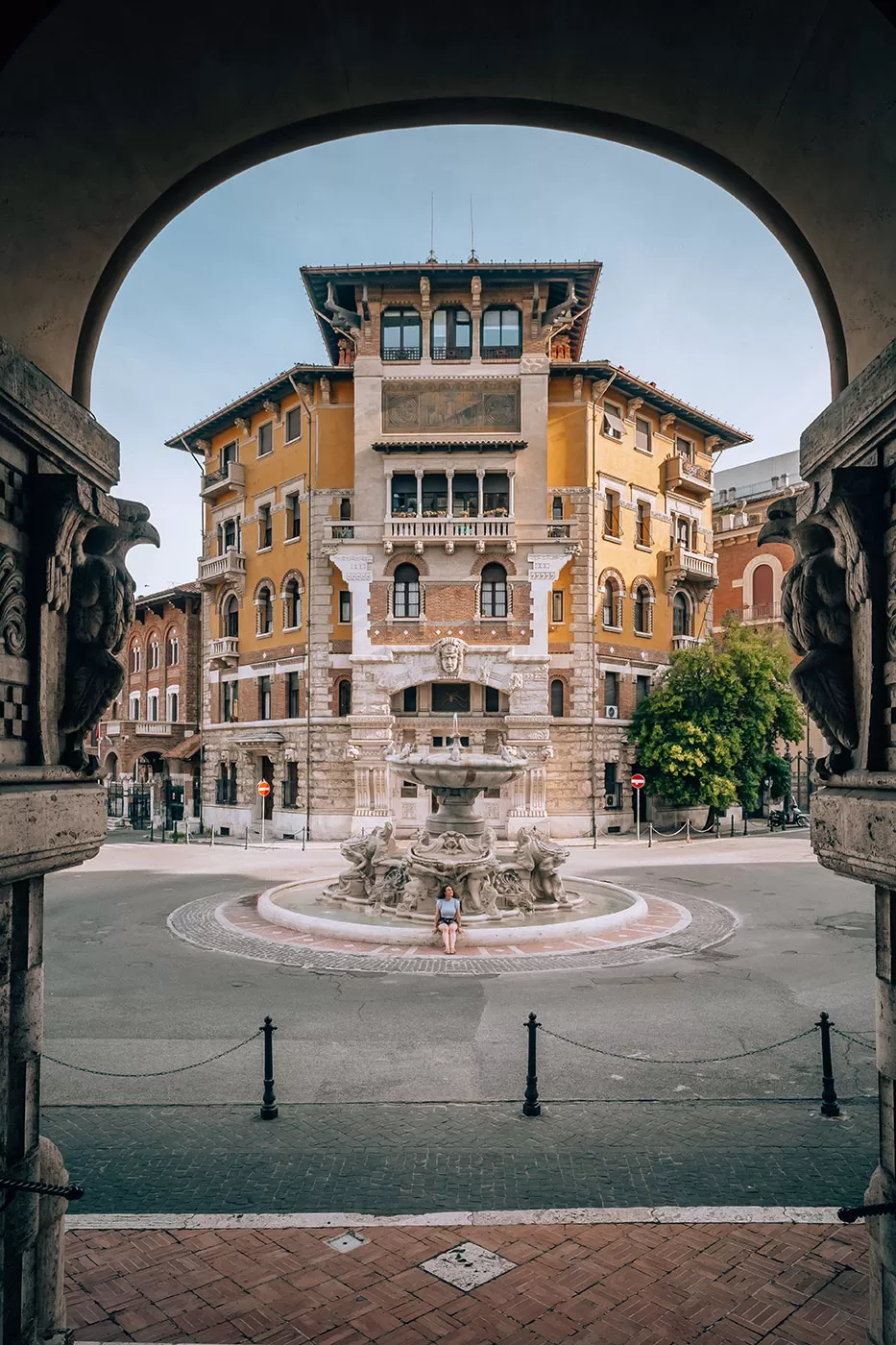
Book your walking tour of this area here.
11. Explore a Baroque Palace at Palazzo Barberini
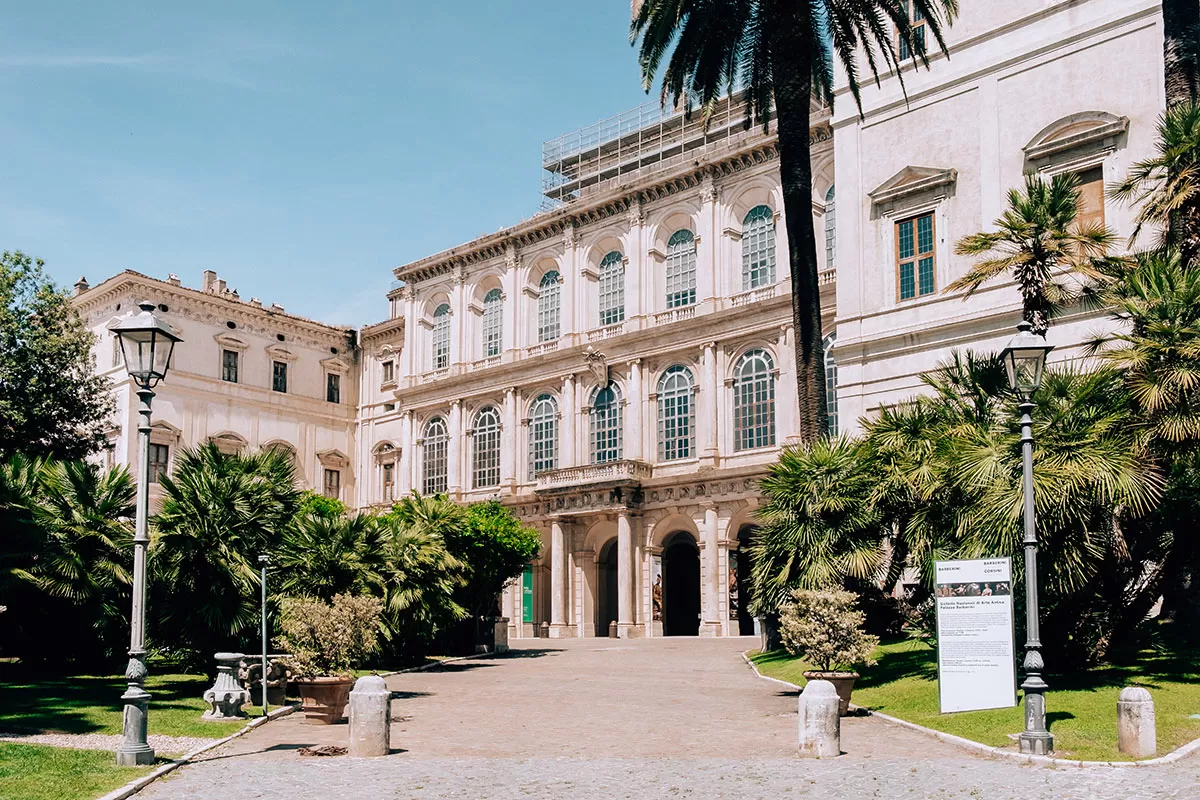
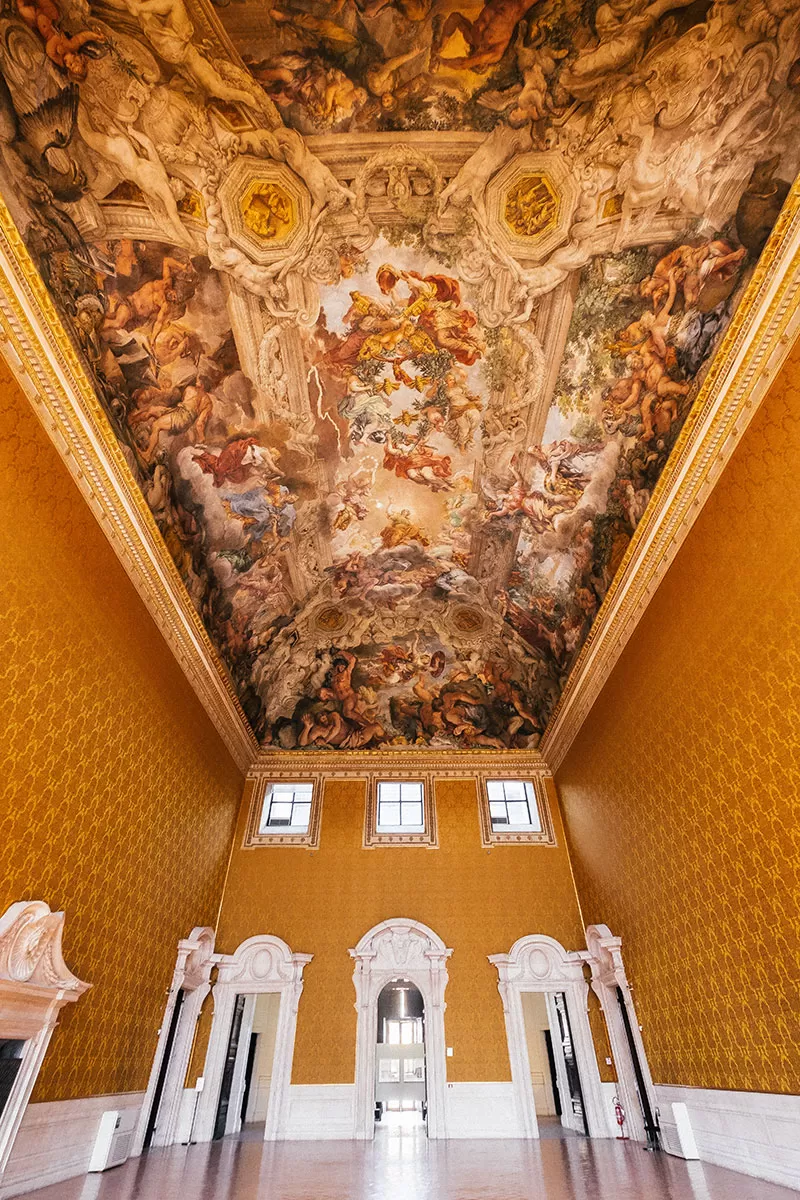
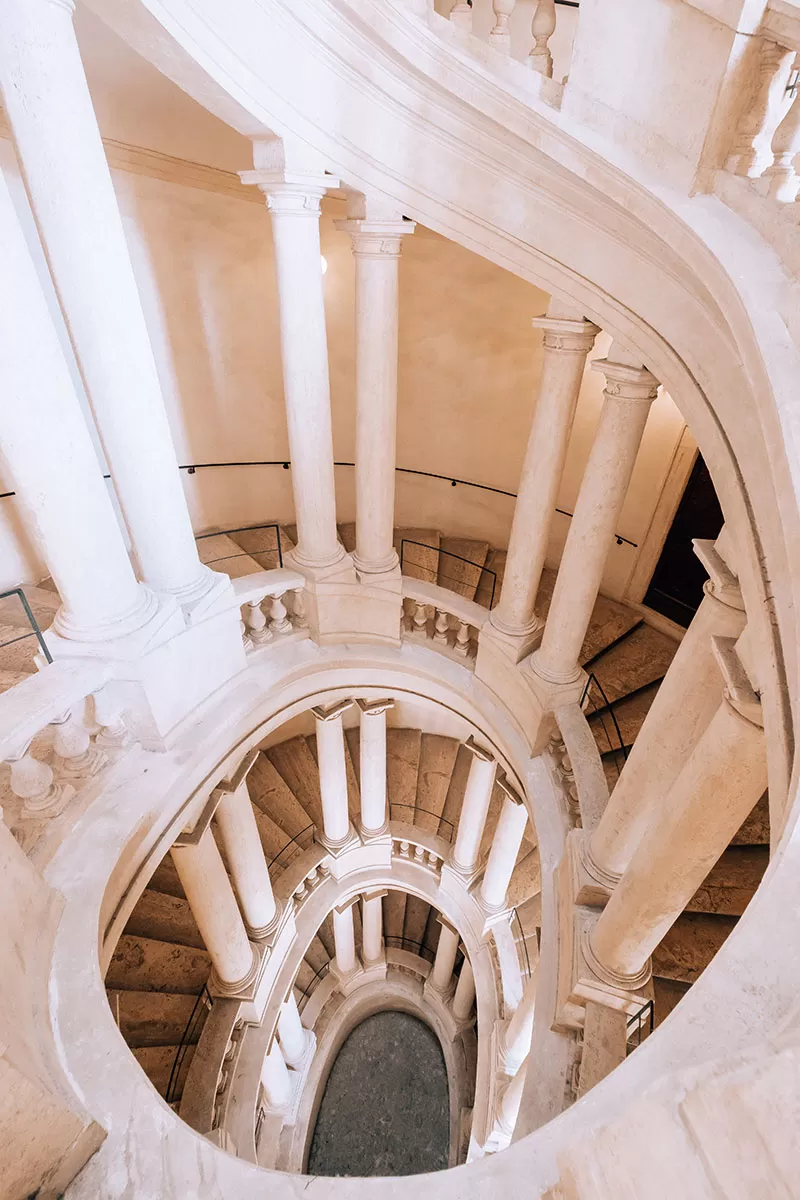
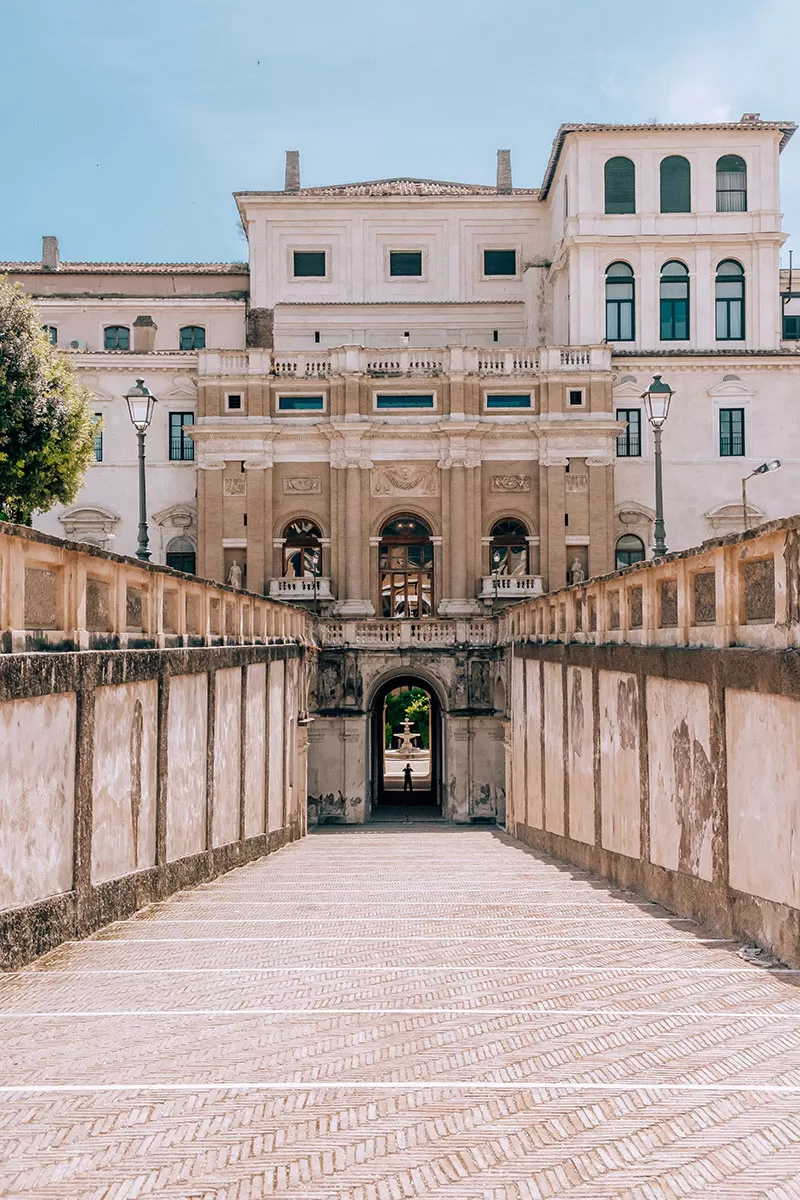
Perhaps the most famous of paintings here is Raphael’s “La Fornarina” (The Baker’s Girl), a portrait of his mistress who worked in a bakery in Rome’s Trastevere neighbourhood.
Book your private tour of Palazzo Barberini here.
12. Walk around the prettiest streets in Rome
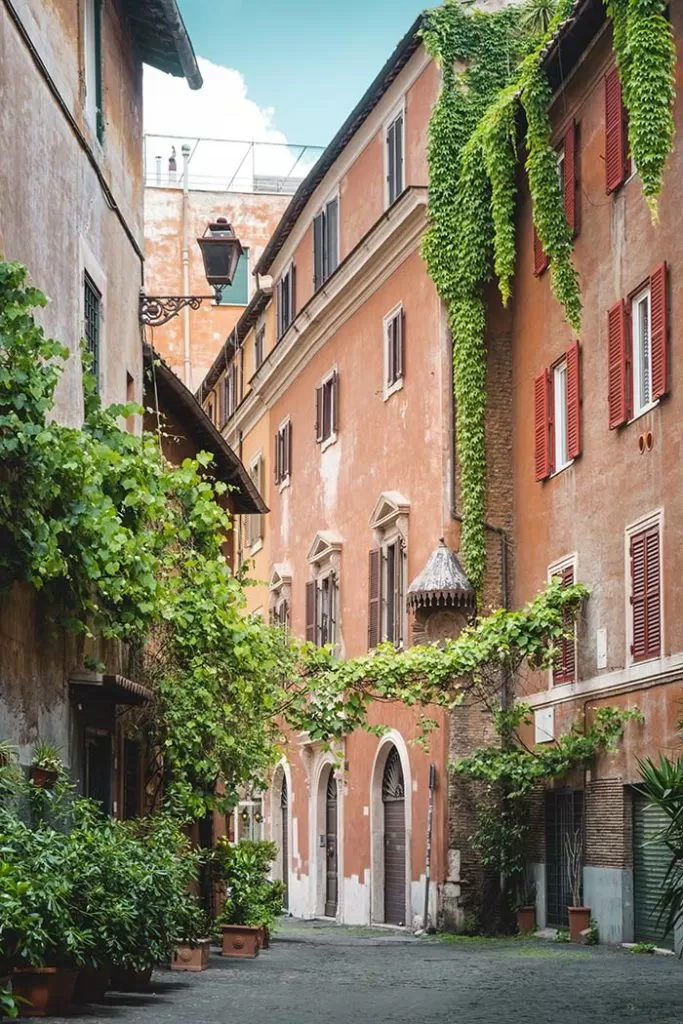
13. See the Trevi Fountain without the crowds
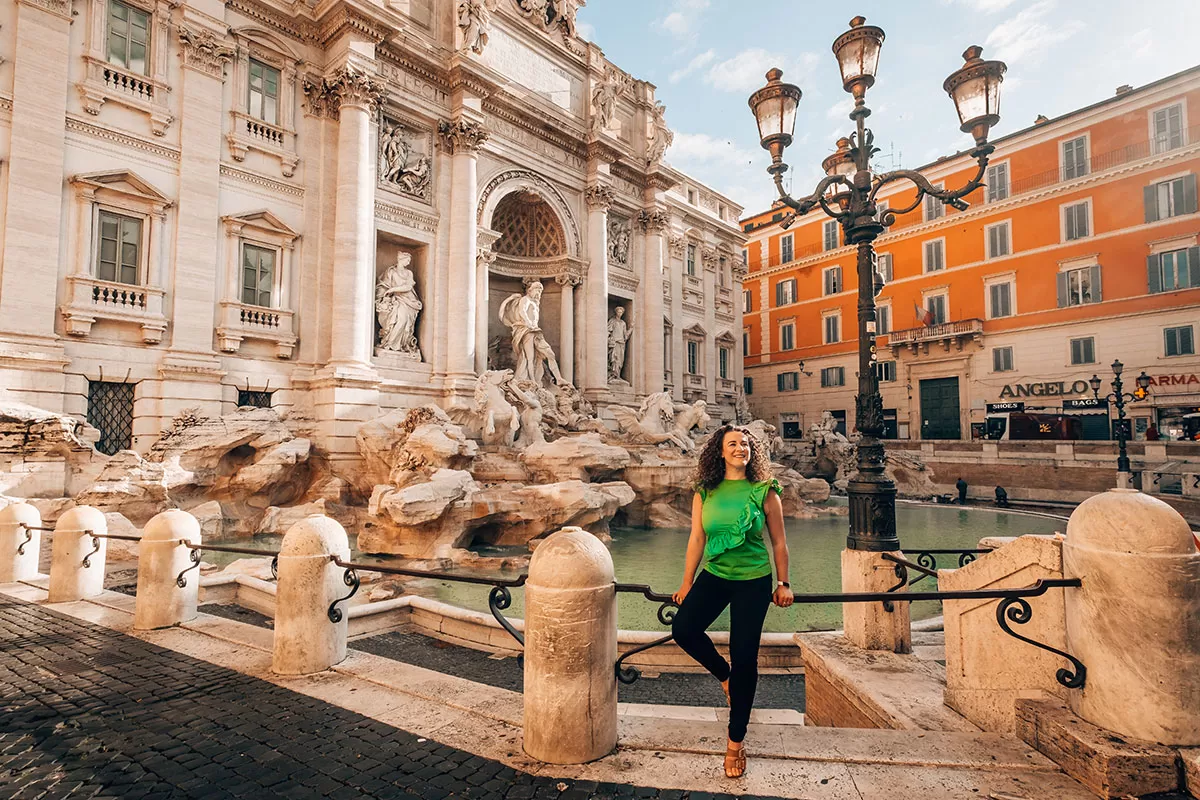
In fact, around 2.16 million gallons (8.2 million liters) of water flow through the fountain every day. Don’t worry, the water is continually recycled to reduce waste. This is why you can’t scoop up the water to drink. Inevitably, such a defining fixture in the Eternal City has a fascinating backstory. Here are some fun facts about the Trevi Fountain that prove a visit is always one of the best things to do in Rome.
A Breathtaking Design
Commanding attention is Oceanus, father of the river gods and son of Uranus (sky) and Gaia (earth.) The hydro theme is completed by horses and Tritons (half-man, half-merman.) The horses, one angry and one calm, represent the changing state of the seas. The striking image is set against the resplendent Palazzo Poli, from which space was cleared to accentuate the fountain in the foreground. The addition of soaring Corinthian pilasters and a triumphal arch to the façade completes the iconic image.
An origin story that stretches back to ancient Rome
The Trevi Fountain marks the terminal point of an aqueduct originally constructed in 19 BC by Marcus Agrippa during the reign of Emperor Caesar Augustus. At the time, the Aqua Virgo was one of 11 aqueducts serving ancient Rome.
Legend claims the aqueduct was named after a virgin who led Roman engineers to the water source 8 miles (13 km) outside the city. The resulting aqueduct, ‘Virgin Water’ in English, eventually snaked over 14 miles (22 km) to the Trevi Fountain.
After a long period of disuse following the fall of the Roman Empire, the aqueduct was revived in 1453 and renamed Acqua Vergine. It still provides the city with clean water.
The Trevi Fountain is tucked away in one of Rome’s oldest neighborhoods
The Trevi Fountain takes its name from the Trevi district, the second rione (administrative district) of Rome. The name refers to the three streets (trivium in Latin) that converge on Piazza dei Crocifer, a square adjacent to the modern Trevi square.
The Trevi Fountain took 30 years to complete and was almost built by a Florentine (gasp!)
In 1730, Pope Clement XII demanded something decidedly more impressive for this legendary water source. The story tells that the design competition was originally won by a relative of Galileo. But there was a problem: he was a Florentine, an insult few in Rome could accept. The gig was instead given to a native Roman, Nicola Salvi. Sadly, it took 30 years to complete the Trevi Fountain, 1732-1762, and he did not live to see his masterpiece finished. After he died in 1751, four other sculptors realized his vision.
The Trevi Fountain was lottery funded
Even the papacy needed a cash injection to pay for such monumental work. Those funds were conveniently found when the lottery was reintroduced to Rome, allowing the citizens to gamble again and enabling the morally flexible pope to finance his grand project.
Around €3,000 of loose change is deposited every day
I doubt Pope Clement XII imagined his lottery-funded jewel would generate an income one day. But every day good luck seekers chuck around €3,000 into the fountain. This practice replaced the unsanitary practice of drinking from the fountain for luck.
Keeping the gods of luck onside, the money is cleaned and donated to the Catholic charity Caritas Rome. That practice only started in 2001 and the idea of using the money for less noble purposes does resurface from time to time.
Even less honorably, there has been a long tradition of theft from the fountain. Thankfully, hefty fines and police patrols put paid to that.
If you’re wondering how to maximize your good luck returns, tradition demands you throw the coin over your left shoulder with your right hand. If you fancy getting tacking on a few extra wishes, all coins should be thrown individually. Not my rules, probably not the fountain’s rules. But it is an established tradition, probably due to Hollywood.
The joy of launching coins into the clear waters of the Trevi Fountain went global following screenings of the 1954 romance, Three Coins in the Fountain. Here’s Frank Sinatra singing the theme tune.
Since then, the Trevi Fountain has racked up several cameos, from the Lizzie McGuire Movie to its distinguished role in Federico Fellini’s 1960 classic, La Dolce Vita.
When to visit: Day or night, there are always crowds at the Trevi Fountain and you should definitely aim to see it both during the day and night, as the night lights transform the fountain into an other-worldly apparition. The most magical time to visit is between 3 am – 7 am when there is almost no one around.
Don’t miss my complete guide to the best apartments and hotels near the Trevi Fountain
14. See Piazza Navona from above
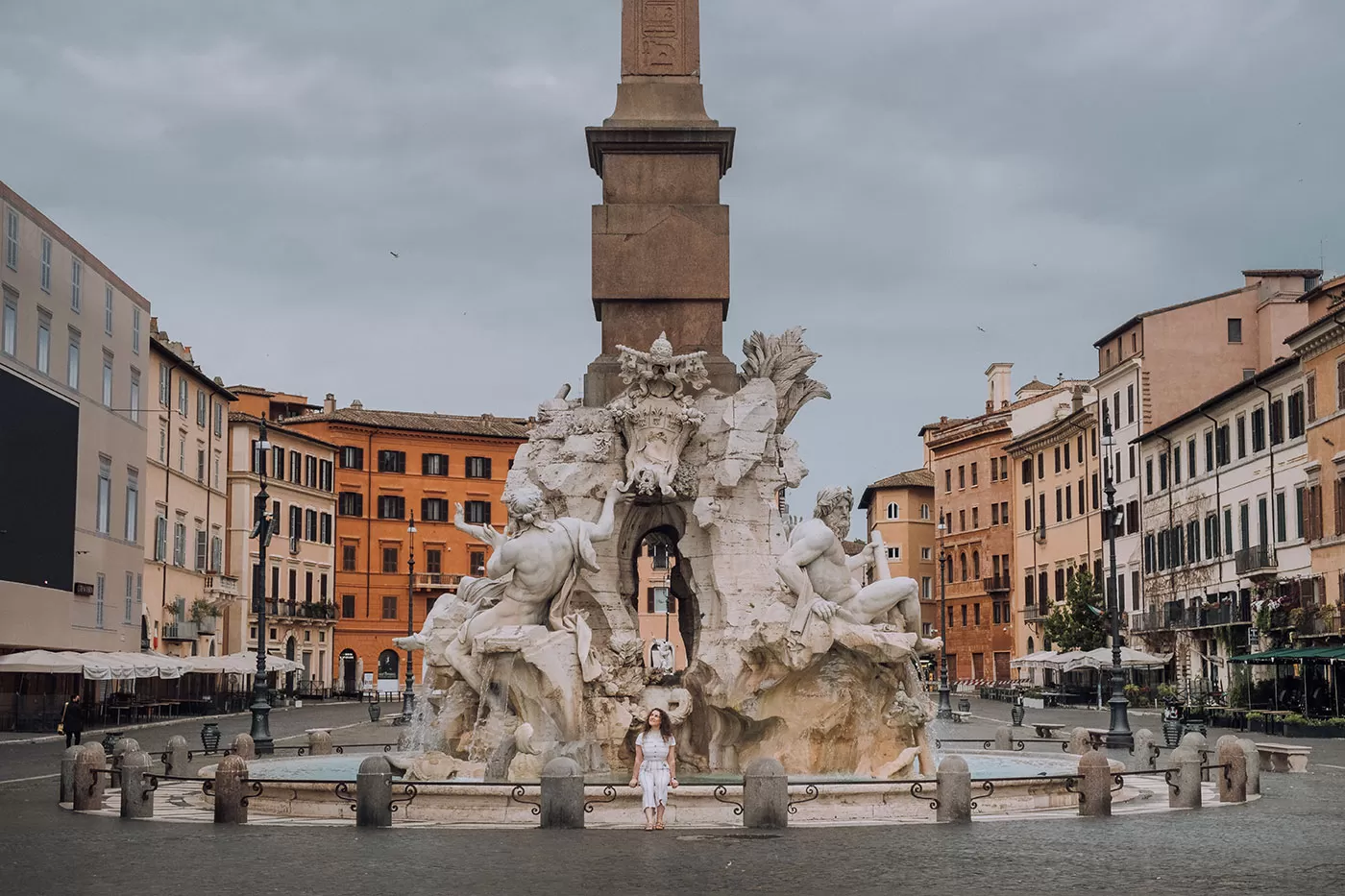
If you thirst after more fountains — who can ever tire of them in Rome? — then stopping for coffee in Piazza Navona is one of the top things to do in Rome. This immense square started life as a public space in ancient Rome. Today, it is renowned for its three charming fountains, impressive sculptures, and shining examples of Baroque architecture.
Within walking distance of the Trevi Fountain, here are a few facts to convince you that the Piazza Navona should be the next step in your Roman adventure.
The square once hosted naked sporting festivals
The Piazza Navona follows the outline of a sporting amphitheatre gifted to the city in AD 86 by Emperor Titus Flavius Domitianus, Stadio di Domiziano. The stadium has since crumbled away, although parts of the structure were still visible until the Renaissance age before finally being stolen.
It is believed the sporting arena was initially used for athletic agones (games.) Even if they lacked the blood and guts of gladiatorial games (which may have come later), the games were pretty spicy as they featured naked Greek athletes. It must have entertained the mob, as the stadium was believed to hold 30,000 spectators.
Known as the Circus Agonalis, the name morphed over time into avone, navone, before settling on Navona, from which the piazza takes its name.
There are three delightful fountains on Piazza Navona
The Fontana dei Quattro Fiumi (Fountain of the Four Rivers) is the most striking water feature in the square. Designed in 1651 by Gian Lorenzo Bernini, the structure was built to impress Pope Innocent X, whose palace overlooked the square.
Depicting river gods at the base of a replica Egyptian obelisk (albeit an ancient Roman replica), it contains allegories that reflected a worldview at the time. The four gods represent major rivers on the four known continents of the period: the Nile, Rio de la Plata, the Danube, and the Ganges.
Clues are hidden within the intricate designs of what those four continents meant to Renaissance Rome. The Rio de la Plata god, for example, holds coins, believed to intimate that riches await explorers of the New World. A threatening snake carved into the sculpture may reflect fears that those riches could lead to danger.
At the northern end of the square sits the Fontana del Nettuno, Fountain of Neptune. Upon completion of the revived Aqua Virgo aqueduct in 1570, an undecorated fountain was constructed to serve locals with fresh water.
In 1878, recognizing the increasingly symbolic role of the city’s fountains, the statue of ‘Neptune fighting with an octopus’ and smaller sculptures were added to create a more impressive structure.
At the southern end of the piazza, the understated Fontana del Moro (Fountain of the Moor) portrays an African wresting a dolphin accompanied by four Tritons.
There is a ‘talking’ statue nearby
You might find the occasional ‘living statue’ on Piazza Navona, but just south of the square on Piazza Pasquino is the famous statue the square is named after. The statues are for talking to, and they’re good listeners. Citizens got a free pass to complain about anything, including the pope.
Dating to the third century BC, Pasquino was the first of six ‘talking’ statues across the city. The statue was probably once a decoration in Stadio di Domiziano before being lost for centuries. Unearthed in its current location in the 15th century, some say he is still listening if you need a rock-solid shoulder to cry on.
When to visit Piazza Navona: If you want to dodge crowds and take some memorable photos, mornings are the quietest. As lunchtime rolls around, the cafés and restaurants of the area fill up, as does the square.
Top Tip: If you want the best views of Piazza Navona in a refined setting, I recommend booking a table at Eitch Borromini, a hotel with an intimate rooftop bar and restaurant. The hotel sits inside Palazzo Pamphili, the home of the pope who transformed the square. If you’re looking for unique things to do in Rome, the unrivalled views are worth every centime you spend on dinner.
Distance from Trevi Fountain: 0.6 miles / 12 mins walk
15. Visit inside the Pantheon for Pentecost AND when it rains
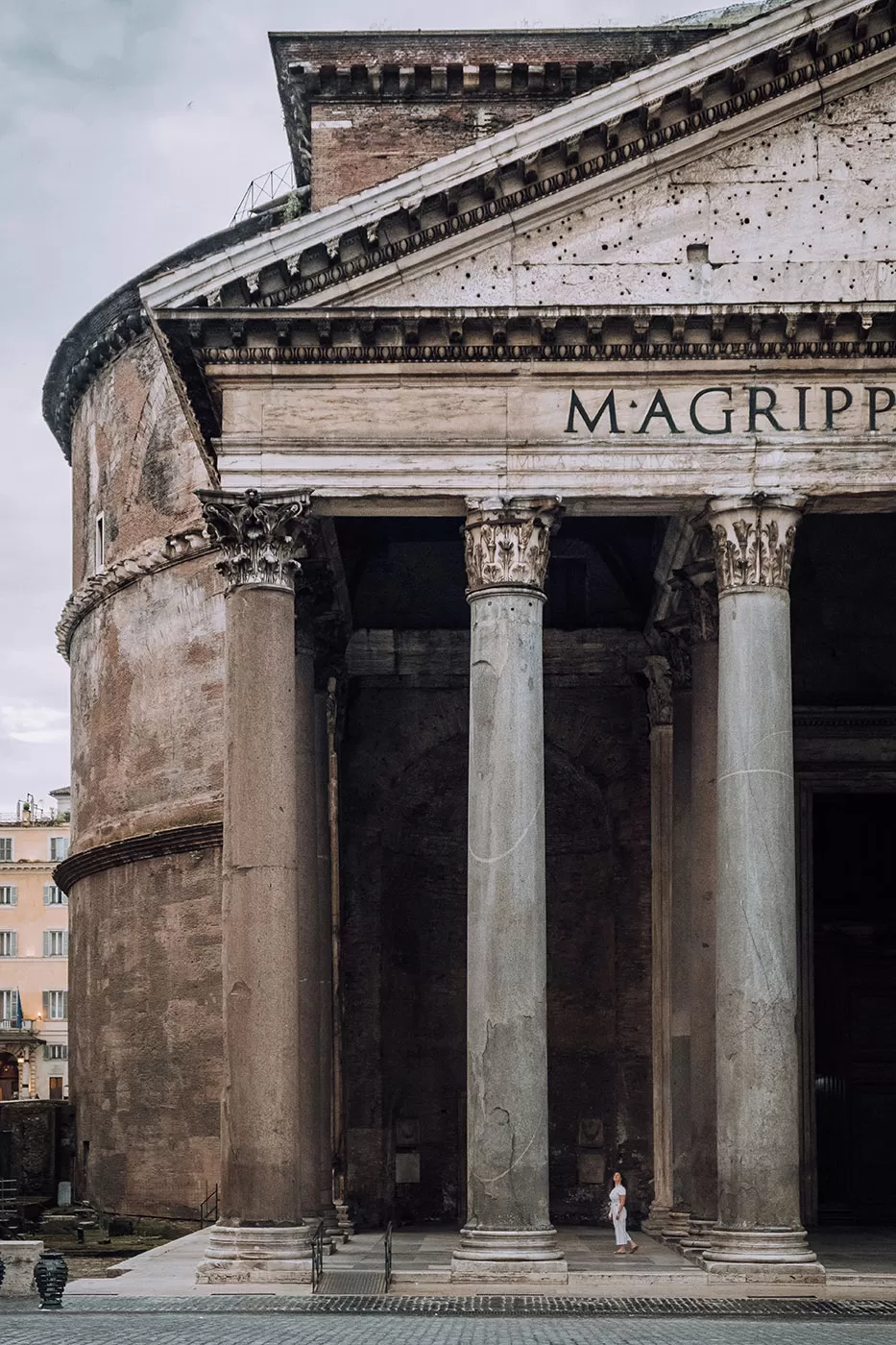
Here are 9 things you might not know about this extraordinary building.
It was designed by the remarkable Marcus Agrippa
Three-time Consul feted general, writer, and renowned architect Marcus Agrippa had a hand in many of Rome’s admired constructions. His finest work is the Pantheon. A marvel of ancient architecture that has evidently stood the test of time.
Agrippa’s legacy was set in stone
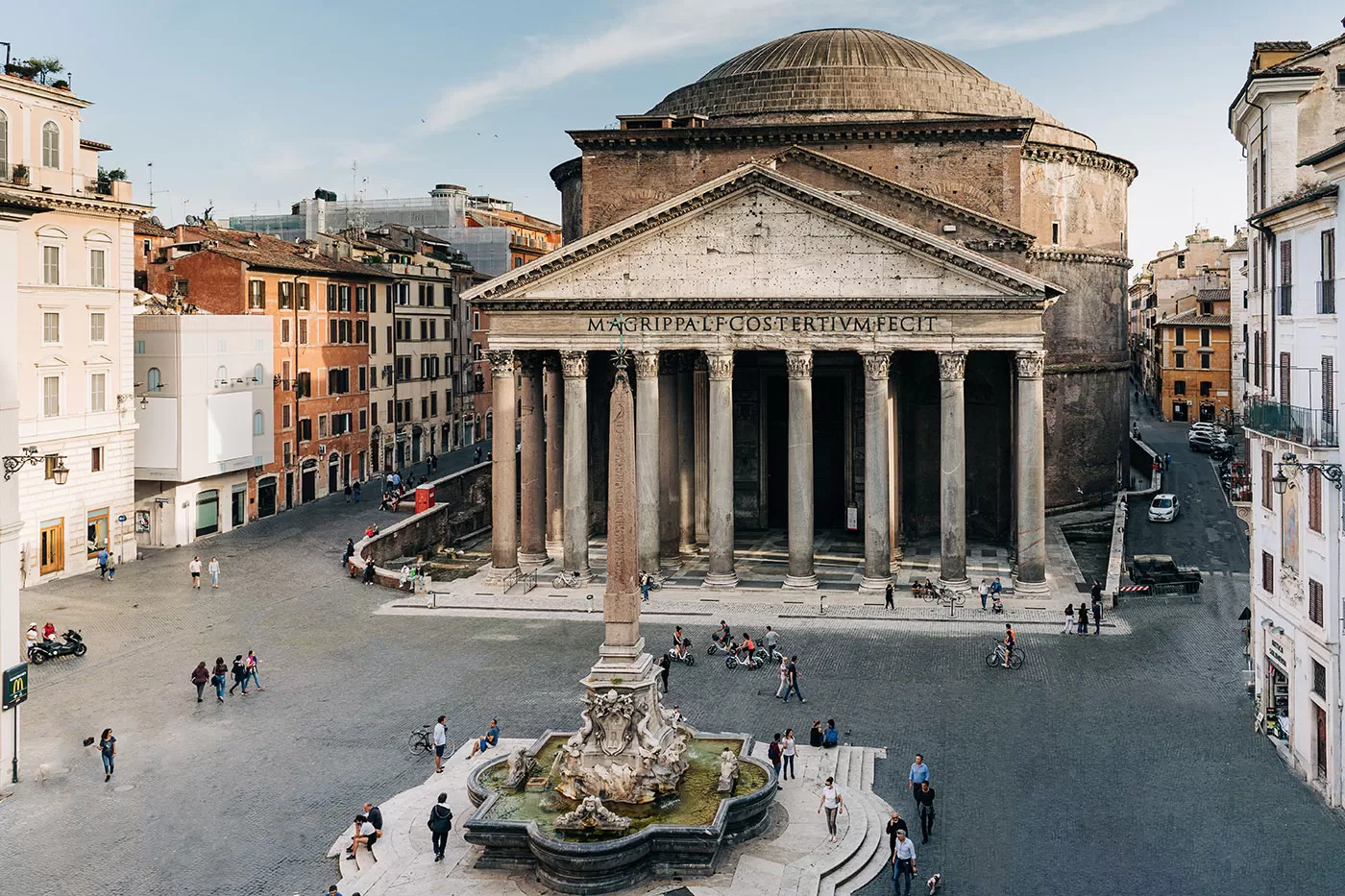
What’s remarkable is the temple was built under the reign of Emperor Hadrian. Hadrian, unlike his predecessors, left his name off public works (except for a temple in honor of his father, Trajan.)
Hadrian allowed the inscription, which had previously appeared on an earlier Pantheon built by Agrippa but destroyed in the great fire of 80 AD. A prime example of the emperor’s fabled generosity, in stark contrast to his other notorious acts of cruelty.
The Pantheon is an exceptional feat of engineering
Michelangelo reportedly said the Pantheon was the work of angels, not humans. The Pantheon dome is made with unreinforced concrete. 142 ft (43.3 m) tall and is the world’s largest unsupported dome. For 1,300 years, it was the largest dome of any kind.
The most striking feature is the oculus, the temple’s light source. Light pours through the eye in the ceiling, and, timed right, an emperor would be bathed in light. A piece of showmanship that would surely impress today.
The towering columns were ‘Made in Egypt’
16 Corinthian columns support the portico, each weighing 60 tons and measuring 39 feet (11.8 m) tall. Remarkably, they all made the journey from Egypt, traveling down the Nile and across the Mediterranean before heading up the Tiber River. Another feat illustrating the power of Rome at its zenith.
The Temple has been a Catholic church since 609 AD
Somehow evading destruction from the barbarian hordes, the Pantheon (meaning ‘all the gods’) was converted in 609 AD into the Basilica of Santa Maria and Martyres (St. Mary of the Martyrs.) Everybody ignores this and simply calls it the Pantheon. However, the consecration is sometimes credited with ensuring the building was preserved, so maybe the pagan Marcus Agrippa would have approved. It is reportedly the oldest building in the world in continuous service.
Rainy days are good days to visit
You won’t see this sentence too often in travel guides, but if you get lucky it will be raining when you visit. Rainwater pouring through the oculus is a sight to behold, worthy of altering your plans if the skies open up.
Will you get wet? Probably. But it’s much more rewarding than getting soaked elsewhere. And you can marvel at how quickly the floor drains through holes in the imperceptibly concave floor. It’s a testament to the brilliance of Roman engineering that the rain has done little damage to the marble floors or statues lining the walls.
Experience a shower of rose petals during Pentecost
If you visit during the Christian celebration of Pentecost (the 50th day after Easter,) you can participate in one of the most unique things to do in Rome. Pentecost is celebrated in the Pantheon by releasing rose petals through the oculus. The event possibly dates back to when the temple became a church in 609 AD. You will not be alone for this special celebration. But if you can be there, you are assured of an unforgettable experience.
Illustrious figures are buried there
No ordinary church, only the biggest names in Italian history can be laid to rest in the Pantheon. Renaissance master Raphael was laid to rest there, along with the Italian kings Vittorio Emanuele II and Umberto I.
Fountain fans, there’s good news – there’s another gem outside the entrance
The appositely named Fontana del Pantheon (Fountain of the Pantheon) sits directly outside the temple. Designed by Giacomo Della Porta in 1575 and originally sculpted in marble (replicas now stand where the marbles were moved for preservation reasons), the fountain is understated yet still makes a big impression. It also adds an extra layer to selfies in front of the majestic Pantheon.
Distance from Piazza Navona: 0.19 miles / 4 mins walk
When to visit the Pantheon: Anytime is a good time, although it is generally quieter in the evening. For a truly unique way to experience the Pantheon is to visit when it rains as the floor is slightly convex which causes the water to flow into the centre of the space through a series of holes in the floor. Also, bear in mind that reservations are required on weekends and public holidays. Entry is still free. Book here.
The area around the Pantheon is one the best places to base yourself when choosing a place to stay in Rome. Read my guide to the best hotels and apartments near the Pantheon.
Don’t miss my complete guide to the best apartments and hotels near the Pantheon
16. See the cat sanctuary and where Julius Caesar was assassinated at Largo di Torre Argentina
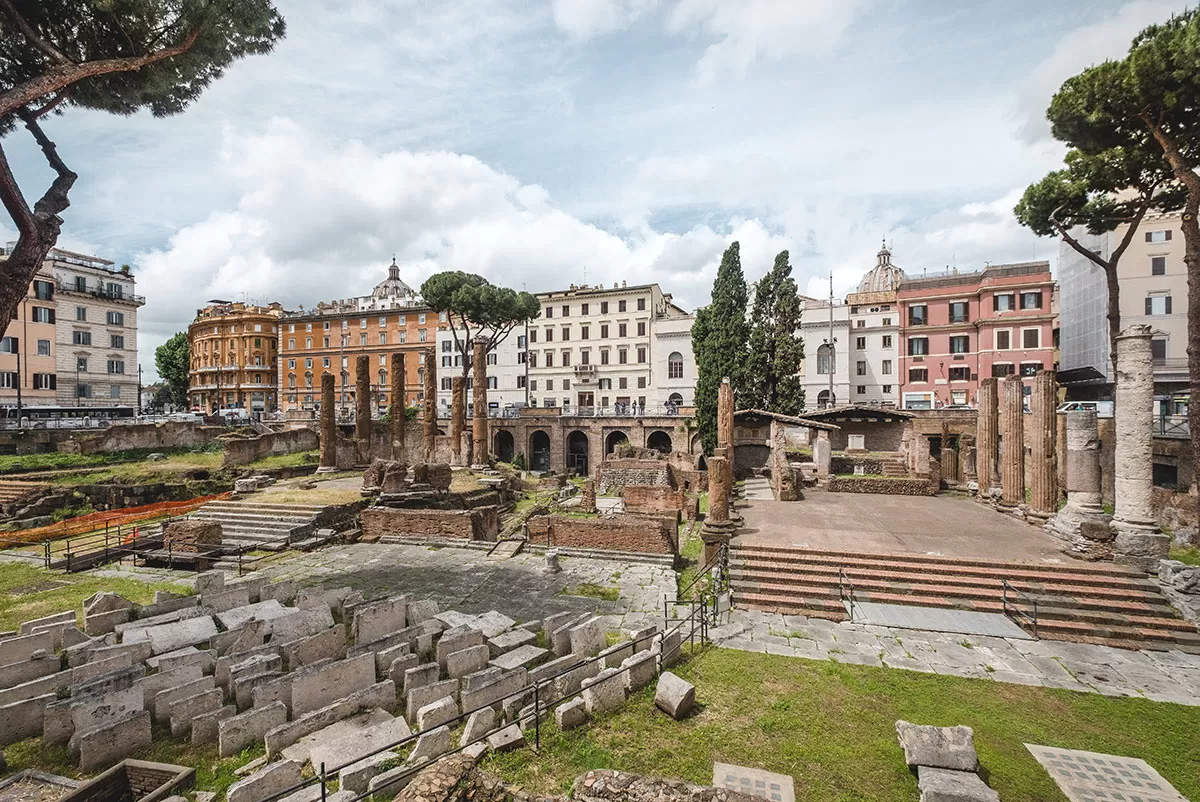
I love visiting this square, which is compact and brimming with ancient ruins. Amazingly, despite being one of the top things to do in Rome, the area is usually free from crowds.
I’ve selected 4 facts that might convince you to visit one of the underrated parts of Rome.
There are a lot of furry friends to be made
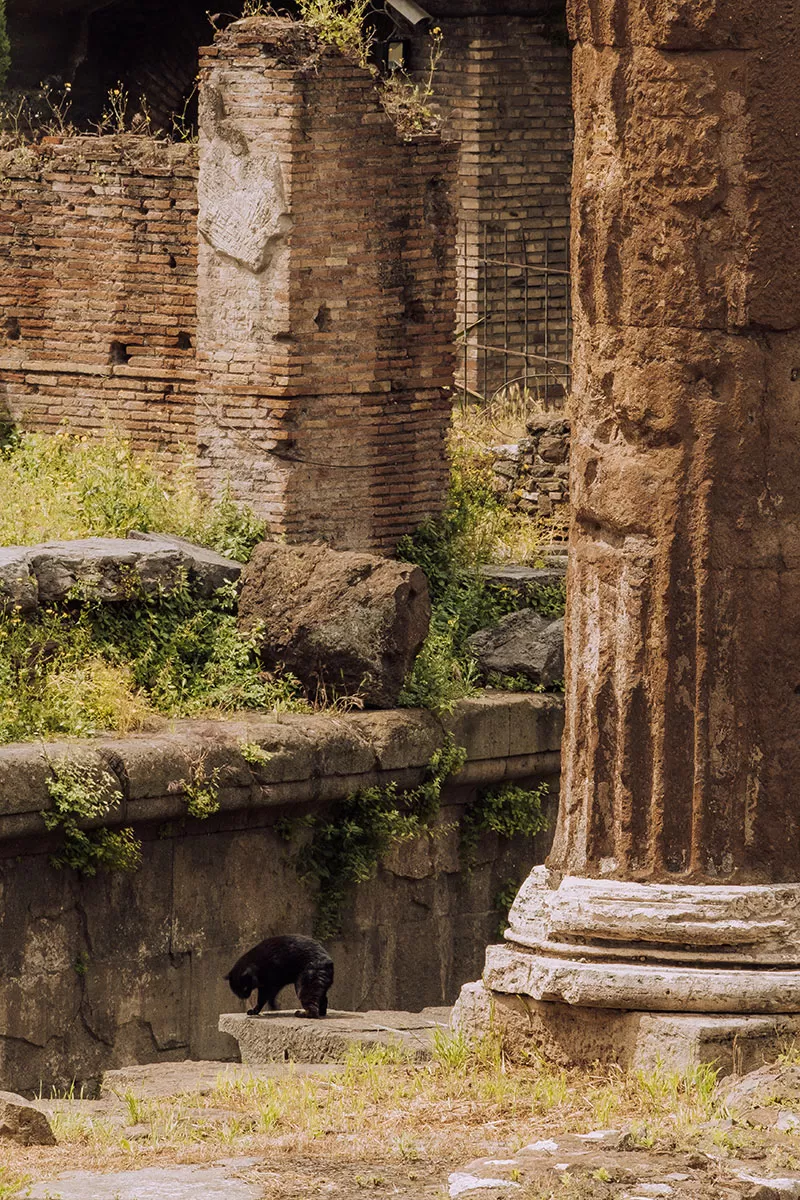
Julius Caesar met his demise here
On the Ides of March 44 BC, one of the striding figures of history was assassinated by Brutus. The over-emboldened dictator was killed at a Senate meeting in the Curia of Pompey in the Theatre of Pompey, whose ruins are still visible in Largo di Torre Argentina.
The square is a site of archaeological importance
Scheduled for demolition in 1927, Largo di Torre Argentina was saved after careful excavators unearthed an archeological treasure, tipping off city planners. The discovery of an immense marble statue prompted an exhaustive archaeological dig, revealing four temples and Pompey’s historically significant theatre.
Exploring the ruins is a new experience
If you had visited the Eternal City before 2019, you could only view the ruins in Largo di Torre Argentina from a distance. But if you plan to return and are searching for unique things to do in Rome, you will welcome the addition of walkways that have opened the square to visitors. Now you can get even closer to the spot where epochal events unfolded.
The square is named after Strasbourg, France, not Argentina
If you were doing the math in your head and wondering why Largo di Torre Argentina was named after a country that didn’t exist before 1816, worry not. It is believed the square was named after the Roman name for Strasbourg, Argentoratum. Should you ever find yourself on a quiz show then this info might prove invaluable!
Distance from the Pantheon: 0.25 miles / 5-7 mins walk
When to visit Largo di Torre Argentina: The square lacks the wow factor of other places to visit in Rome, so it is often quiet throughout the day. If you want to drop into the cat sanctuary, visit from midday onwards.
17. See Striking views from Rome’s traffic hub in Piazza Venezia
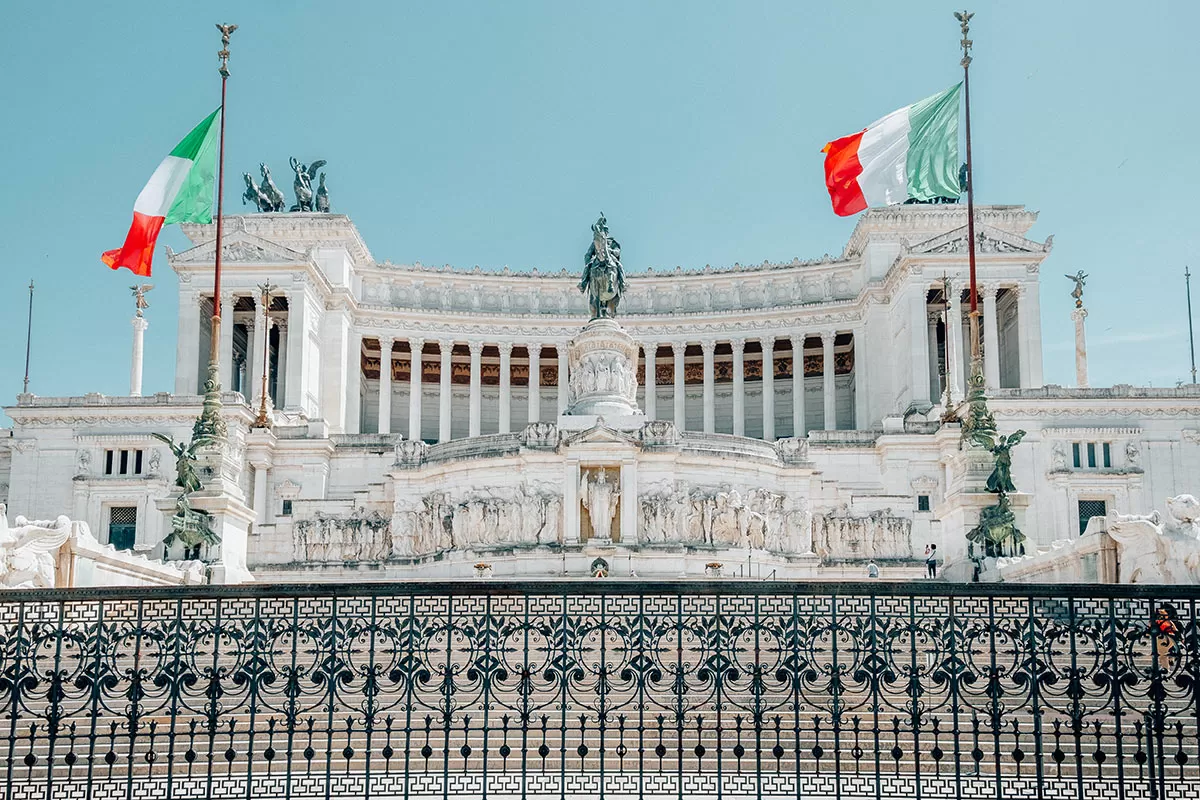
To admire the majestic Vittorio Emanuele II National Monument
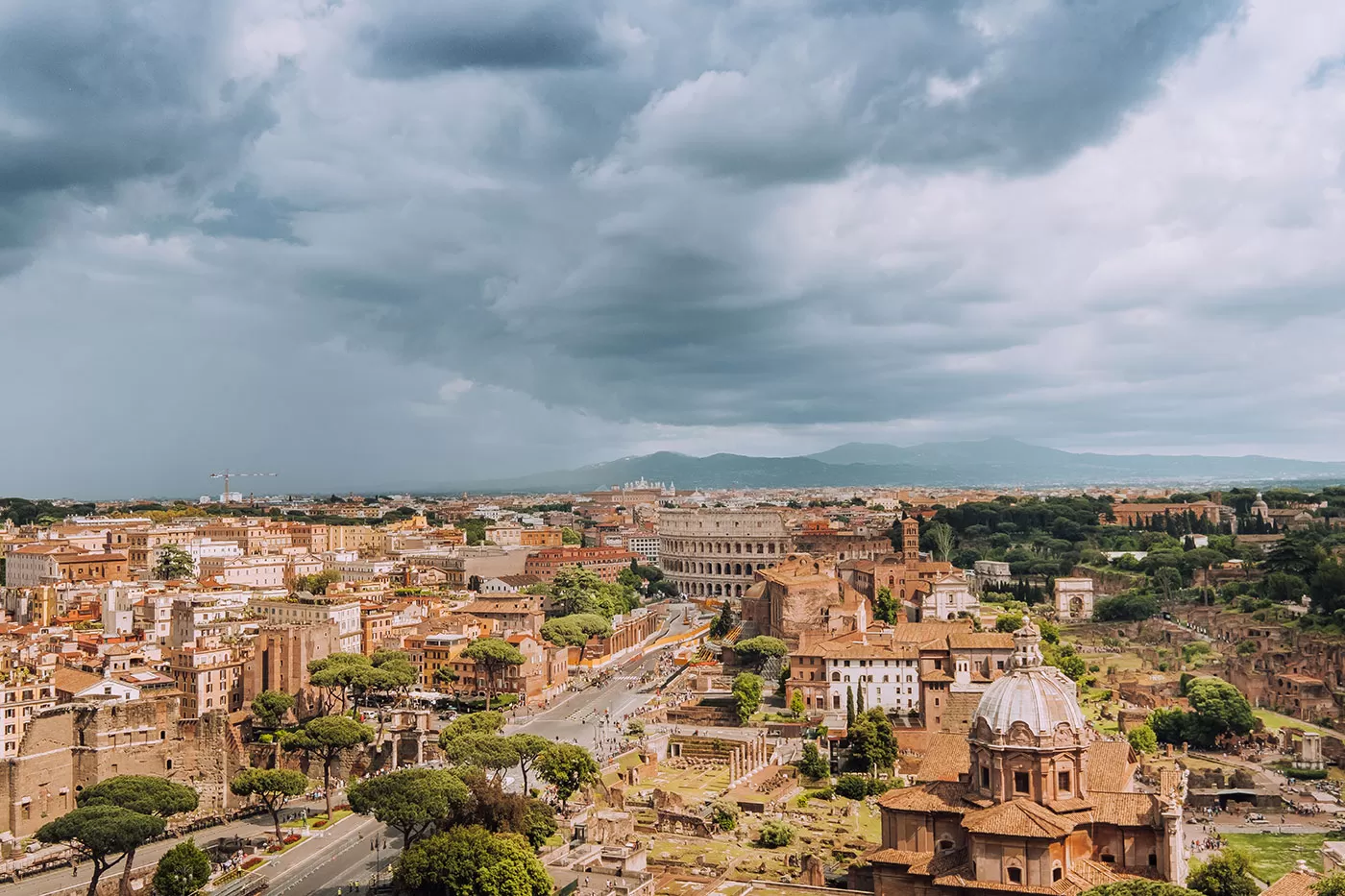
View of Roman Forum and Colosseum from Il Vittoriano
The Monumento Nazionale a Vittorio Emanuele II is an arresting sight for drivers hurtling around the Piazza Venezia. Starting in 1885 and finished in 1935, this imposing landmark was built to honour King Vittorio Emanuele II the first king to rule the newly unified Italy. A relatively modern edifice, it fits right into the Roman cityscape.
A soaring portico supported by 16 Corinthian columns, each 15 m tall, supports a building adorned with allegorical statues. It is always worth a few photos.
But it’s the views from the top of the monument that make it one of the best things to do in Rome. For €12 or less, you can enjoy a rewarding panorama.
The monument honours Italy’s war dead
The monument to Italy’s first king is better known as Altare Della Patria, which means Altar of the Fatherland. The name refers to an altar to the goddess Rome that is now also a shrine to the Tomb of the Unknown Soldier.
Remnants of Trajan’s Forum can be seen close to Piazza Venezia
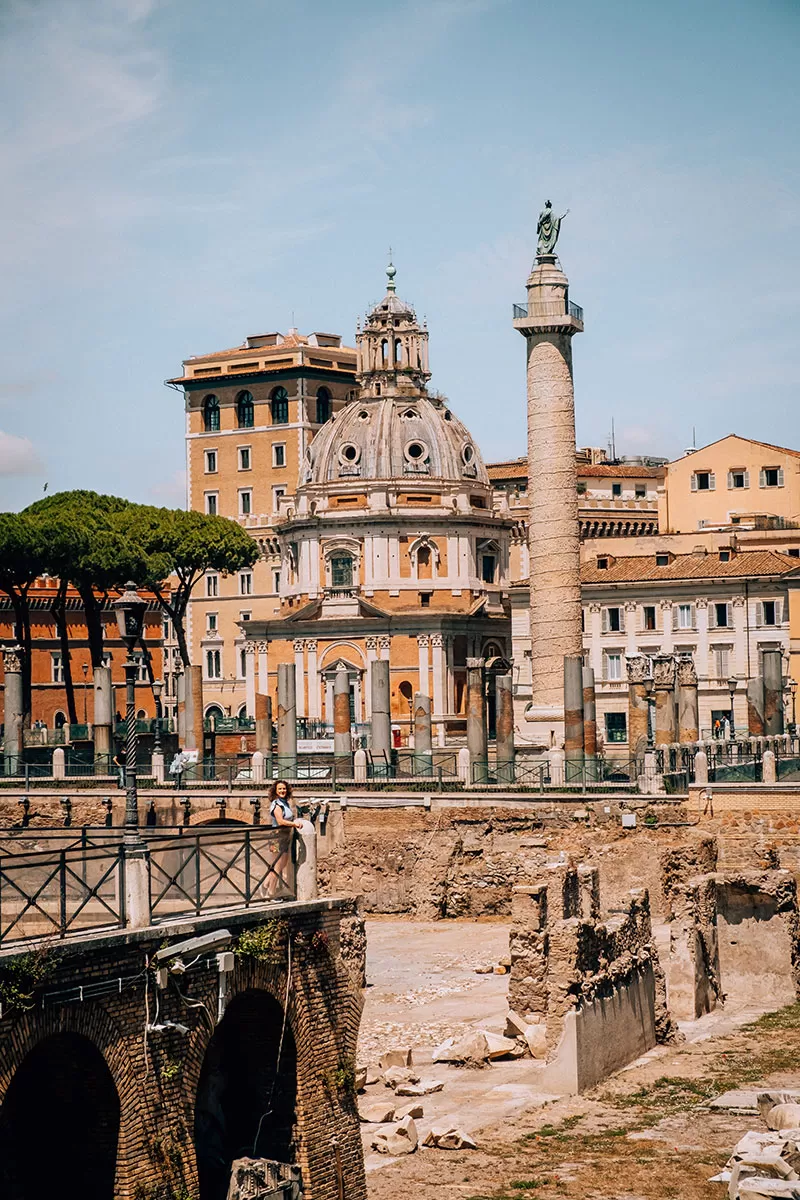
Trajans Market (Mercati di Traiano Museo dei Fori Imperiali)
Trajan was the emperor who pushed the borders of the Roman Empire to their peak. He is remembered as one of the most accomplished Roman leaders, widely respected even in his day.
Little remains of his forum, but recovered columns have been re-erected. If you have even a passing interest in Roman history, you will want to see the forum where one of ancient Rome’s greats once invested his war spoils.
One of Rome’s most important archaeological discoveries of recent times was made here
Rome is a challenging place to build sizeable public works. Every time a hole is dug, another historic building is unearthed. Illustrating the point, Emperor Hadrian’s Athenaeum, an art center, was discovered while digging a new underground metro line under the piazza.
Uncovered in 2009, it was described as one of the most important finds for 80 years. Improbably situated in the center of the busiest roundabouts in Rome, it is largely inaccessible to the general public.
Distance from the Largo di Torre Argentina: 0.37 miles / 8 mins walk
When to visit Piazza Venezia: Unless you can visit when Rome sleeps, this area is always busy.
18. Be the first to visit the Sistine Chapel at Vatican Musuems with exclusive early access
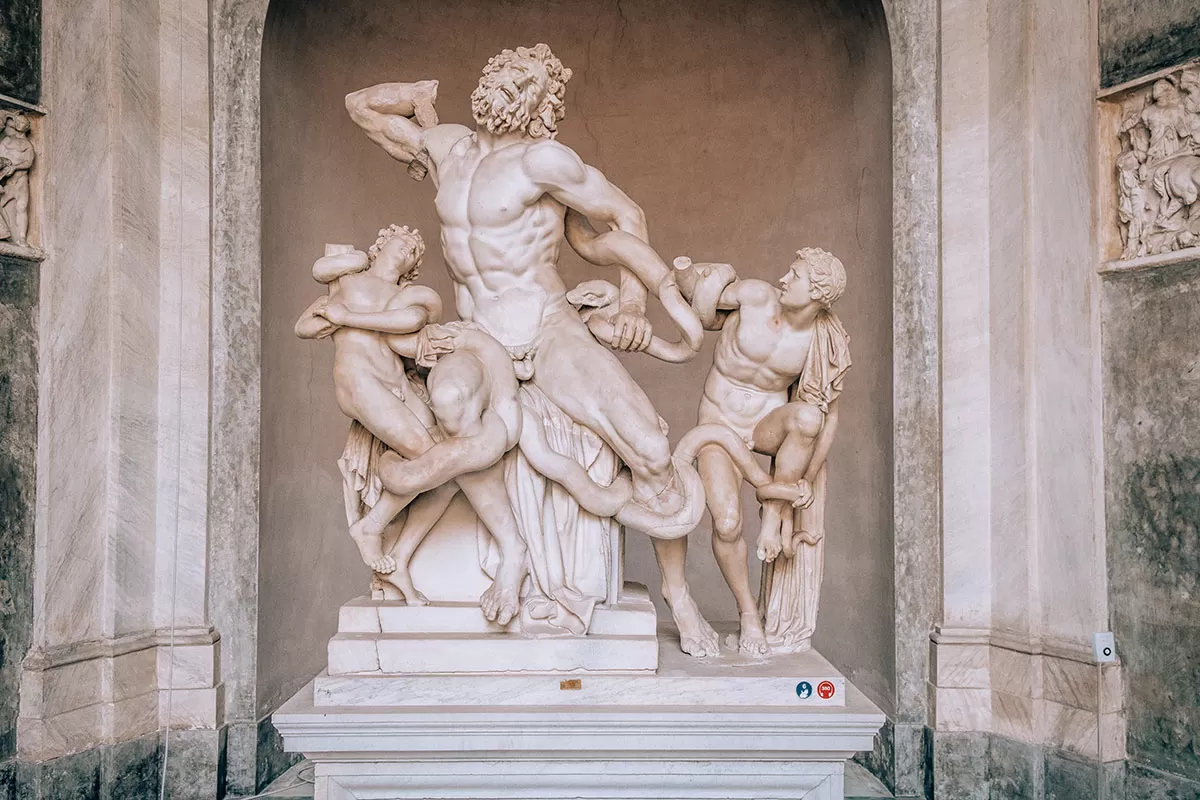
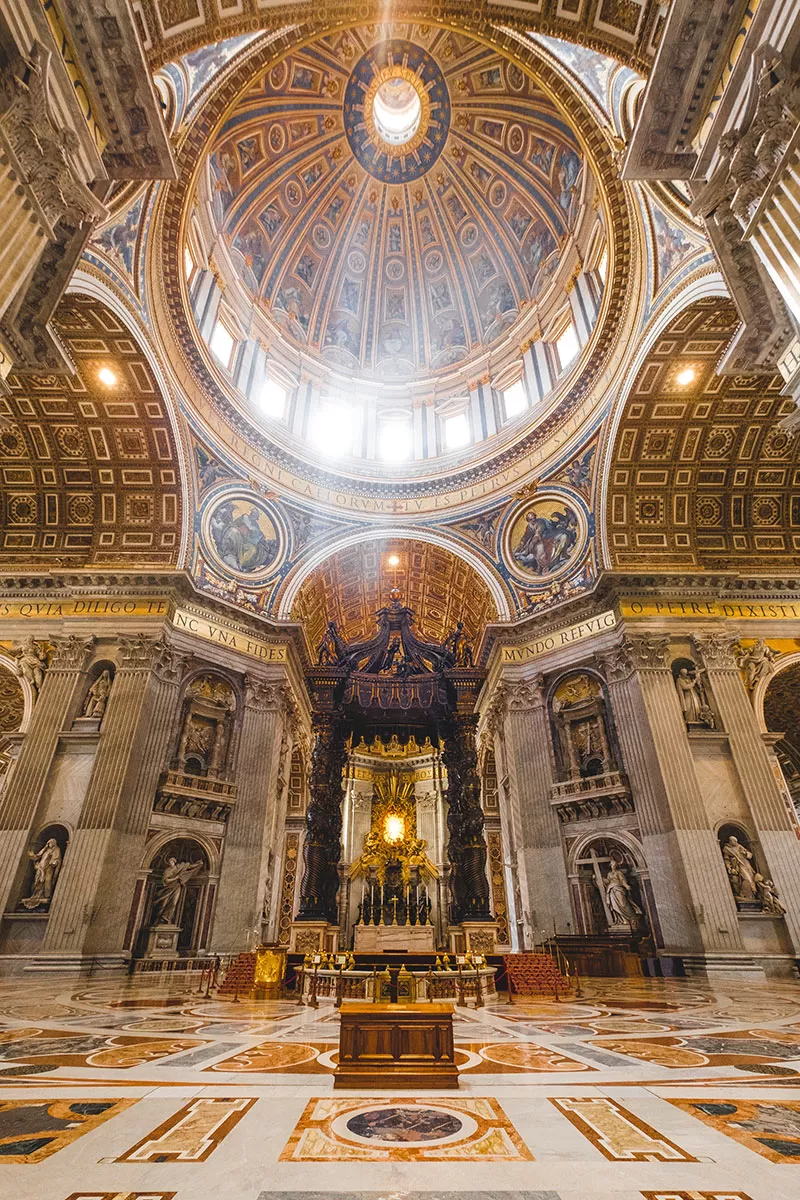
The best way to experience the Sistine Chapel without the crowds is with this early access private guided tour where you’ll get entry to both the Vatican Museums and Sistine Chapel and have the opportunity to visit the famous Vatican galleries and the Sistine Chapel before the usual opening. The tour ends inside an empty St. Peter’s Basilica.
It took 4 years for Michelangelo to finish his world-famous frescos
It is claimed that Michelangelo was hesitant to paint Pope Sixtus IV’s chapel, built between 1473 and 1481. Thankfully, he had a rethink. The ceiling frescos are probably the most feted makeover in history. And all it took was four years to cover a ceiling measuring 131 ft (40 m) by 46 ft (14 m.)
The nudity was too much for one pope
Michelangelo’s frescos included 6 images of God and are considered one of the earliest drawings to depict him in that form. Yet it was the nudes that caused the biggest stir. Living up to his name, Pope Pius IV demanded the nudes be covered with fig leaves and loin clothes in the 1560s. The scandal has never gone away, with modern scholars lamenting the censorship.
The Sistine Chapel is the pope’s personal place of worship
The building was built as a personal chapel for the pope. It has been used for that purpose ever since. A lot of popes have prayed there!
New Popes are chosen in the Sistine Chapel
The Papal Conclave decides who will be the next pope. They meet beneath Michelangelo’s extraordinary art before releasing smoke to let the world know who will lead the catholic church.
Distance from the Piazza Venezia: 2 miles / 40 mins walk
Metro stops nearby: Line A (orange) – Cipro-Musei Vaticani
When to visit the Sistine Chapel: Opening time and visitor numbers are strictly controlled. For the best experience, join this tour.
Be aware that there is a dress code – shorts and sleeveless shorts are a big no no.
19. Head to San Luigi dei Francesi to see Caravaggio paintings
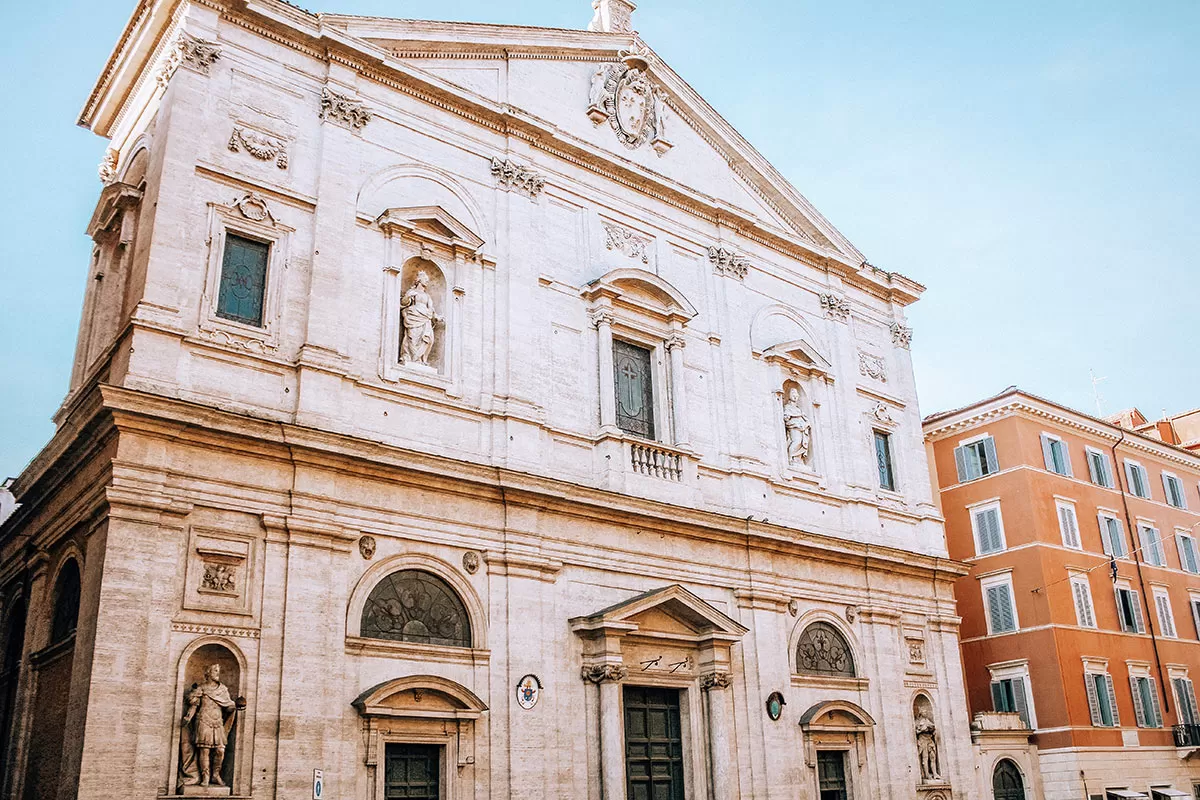
The same architect worked on St Peter’s Basilica and San Luigi dei Francesi
Giacomo della Porta is a celebrated Italian architect. Born in Genoa yet responsible for many notable works in Rome — including the dome in St Peter’s Basilica and many of the city’s fountains — he also designed this beautiful church.
Three paintings by Caravaggio, each a masterpiece
The interior of San Luigi dei Francesi is stunning. It is the perfect companion to the Sistine Chapel. Arresting art adorns the wall and ceiling, although star billing goes to the ‘cycle’ of paintings by Caravaggio, which are considered some of his finest works.
Above the altar sits The Inspiration of Saint Matthew, while on opposing walls is The Calling of St Matthew and The Martyrdom of Saint Matthew. All three are highly regarded by art connoisseurs.
It is free to visit San Luigi dei Francesi!
Unlike the Sistine Chapel, there is no charge to enter this spellbinding church. There is even a free 20-minute English audio guide to help you appreciate the art. Easily one of the best things to do in Rome for free.
The Church of St. Louis of the French is an oasis of tranquillity
The good thing about discovering unique things to do in Rome is the possibility to dodge crowds. I can’t recommend this church enough if you want to escape the bustle while experiencing the very essence of Rome.
Distance from the Villa Borghese: 1.5 miles / 30 mins walk (this brings you full circle back to the area around Piazza Navona)
When to visit San Luigi dei Francesi: Opening hours are limited to mornings and afternoons. Closed for lunch. Check the times here.
Looking for a place to stay in Rome?
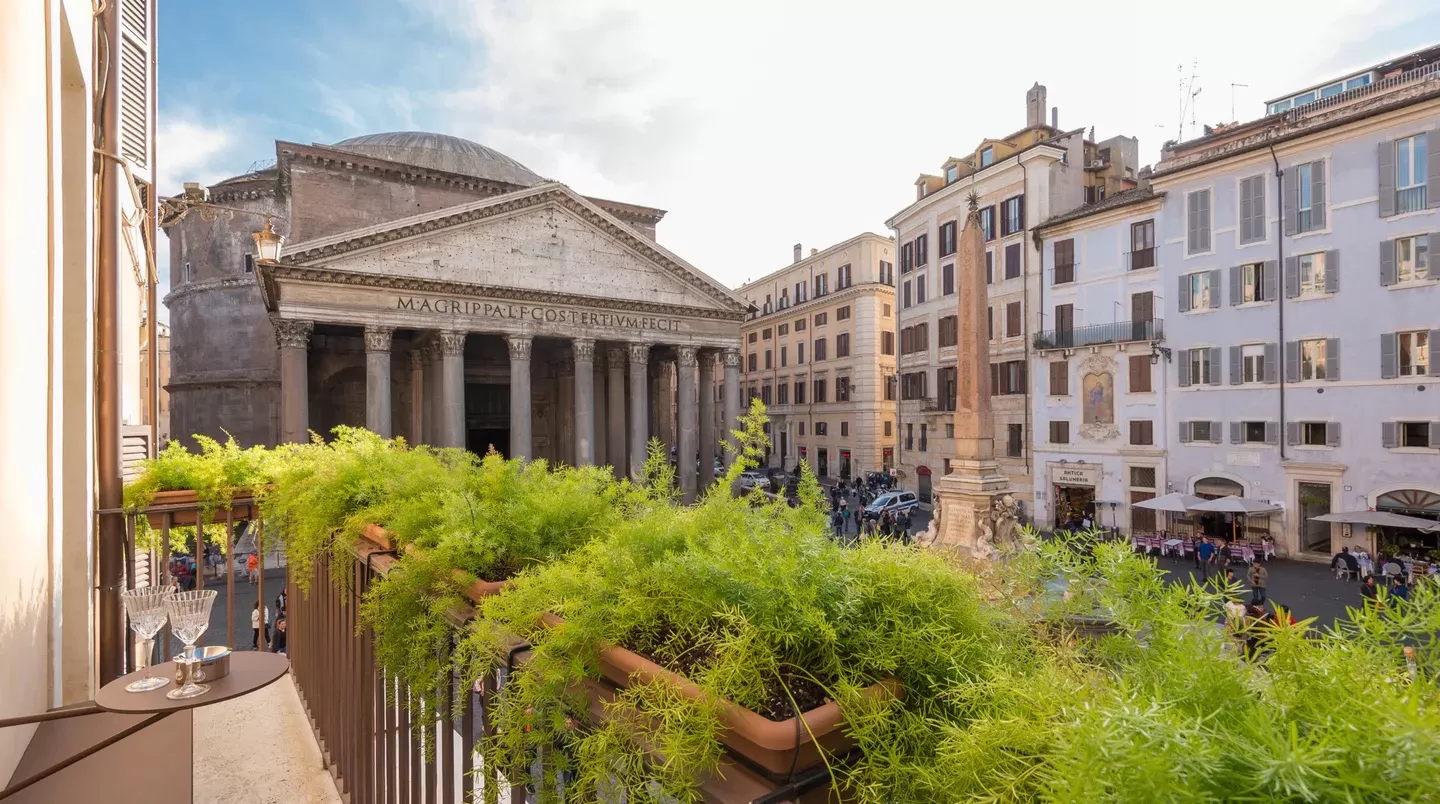
Got more time? Join these tours
- Private Helicopter Tour over Rome
- Skip the Line: Crypts and Roman Catacombs Small-Group Walking Tour
- The Roman Food tour in Trastevere
- Skip the Line: Borghese Gallery and Gardens Walking Tour
- Papal Audience Tickets and Presentation
- Rome Street Food Tour with Local Guide
- Early Access: Sistine Chapel and Vatican Museums Ticket
- Roman Gladiator School: Learn How to Become a Gladiator
- Pompei Day trip from Rome
- Small-Group Pompeii with Amalfi Coast Drive and Positano Stop from Rome
- Naples and Pompeii Day Trip from Rome
- Small-Group Rome Food Walking Tour: Trastevere, Campo de’ Fiori and Jewish Ghetto
- 4-Day Tuscany and Cinque Terre Tour from Rome
- Exclusive Catacombs After Closing and Bone Chapel Tour
- Tivoli Day Trip from Rome: Villa d’Este and Hadrian’s Villa
- Florence Day Trip from Rome
- Venice Independent Day Trip from Rome by High-Speed Train
For more inspiration, check out my guide to 29 amazing day trips from Rome.
Don’t miss my other travel guides to Rome and beyond
- Top 7 Authentic Tours and Experiences in Rome [Run by Locals]
- Domus Aurea: Why You Should Visit Rome’s Secret Hidden Palace
- Rome Tips and Tricks: 27 Things You Should Know Before You Go to Rome
- Top 10 Absolute Best Views of Rome That Will Blow Your Mind
- Self-Guided Trastevere Walking Tour: Where to See Rome’s Most Beautiful Streets
- 29 Amazing Day Trips from Rome By Train, Car & Guided Tour
- 26 Absolute Best Things to do in Verona, Italy
- Where to Stay in Verona: Best Hotels in Verona Neighbourhoods
- Lakes, Mountains & Castles: 21 Best Things to do in Trento, Italy
- 21 Unique Things to Do in Venice You Should Try at Least Once
- 12 BEST Things to do in Burano, Italy (Tips from a Local Guide)
- Best Time to Visit Italy // PLUS Tips to Avoid Crowds and SAVE $$$
- 36 Wonderful Things to do in Umbria, Italy (PLUS Map of Umbria)
- TOP 20 BEST Hotels in Trastevere Rome For Every Budget
- 20 Best Hotels in Rome Near the Spanish Steps for Every Budget
- 20 Top Hotels Near the Pantheon in Rome for Every Budget
- 20 Best Hotels Near Termini Station in Rome for Every Budget
- 20 Top Hotels the Trevi Fountain in Rome for Every Budget
- 20 BEST Hotels Near The Vatican in Rome for Every Budget
Planning a trip and need travel insurance? Get a free quote from World Nomads here.
Don’t be treated like a tourist. Learn Italian with my 80/20 method
Travelling to Italy? Don’t be treated like a tourist! Live your best travel experiences and learn Italian for less than the cost of eating at a tourist trap restaurant or a taxi driver who has “taken you for a ride”. I’ve made it easy for you to master the Italian language so you can create lifelong memories as you mingle with locals, get local tips, avoid tourist traps, and make new friends. Who knows, you may even be invited over for afternoon tea by a lovely Sicilian family like I was! Read all about how speaking Italian changed my life and check out my online Italian video course here.
Here’s what my students are saying:
I really enjoyed the Intrepid Italian course, it certainly exceeded my expectations. The learning methodology is great, and easy to follow and found that I progressed much faster in the last 4 weeks than I ever did on my own or using other language apps. Grazie mille Michele, I can’t wait until I can put my new skills into action! – Roma Small
Click here for instant access!
Like it? Pin it for later!
Over to you!
Have you visited any of these places? What other top things to do in Rome would you recommend?
Let me know using the comments section below or join me on social media to start a conversation.
Thanks for reading and I hope you enjoyed this post.
Like what you see? Subscribe using the form below to have all of my posts delivered directly to your email.

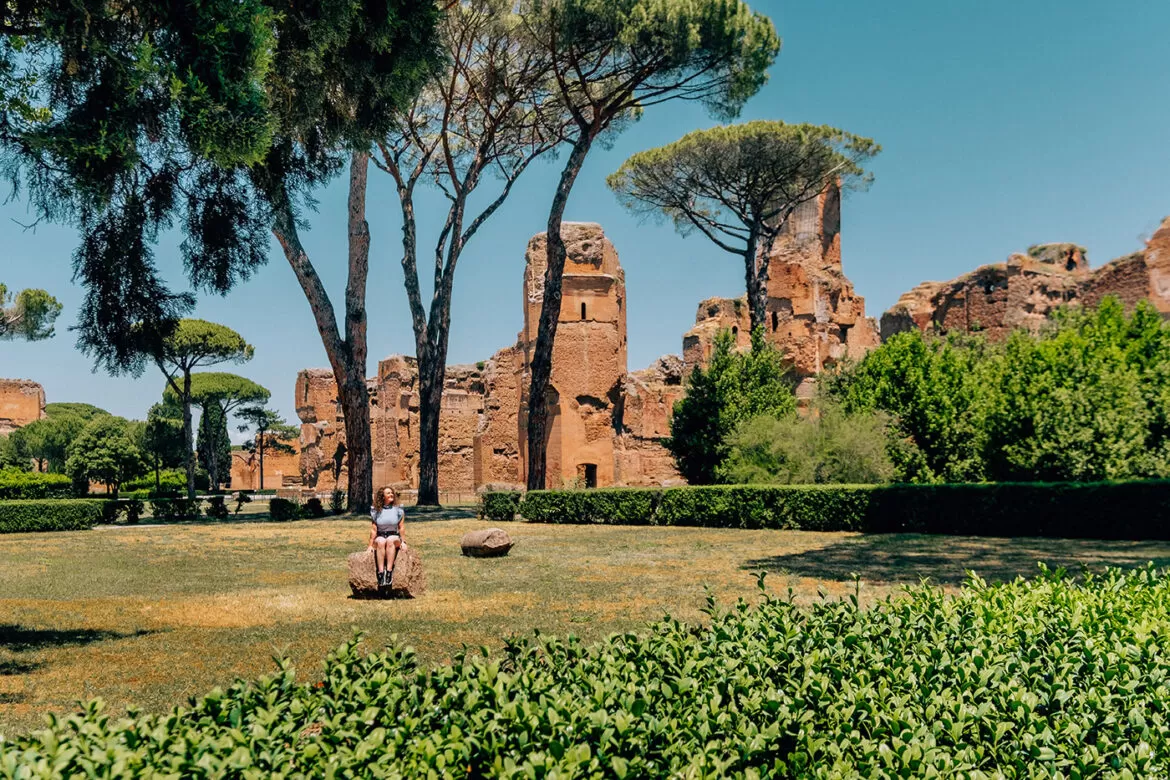
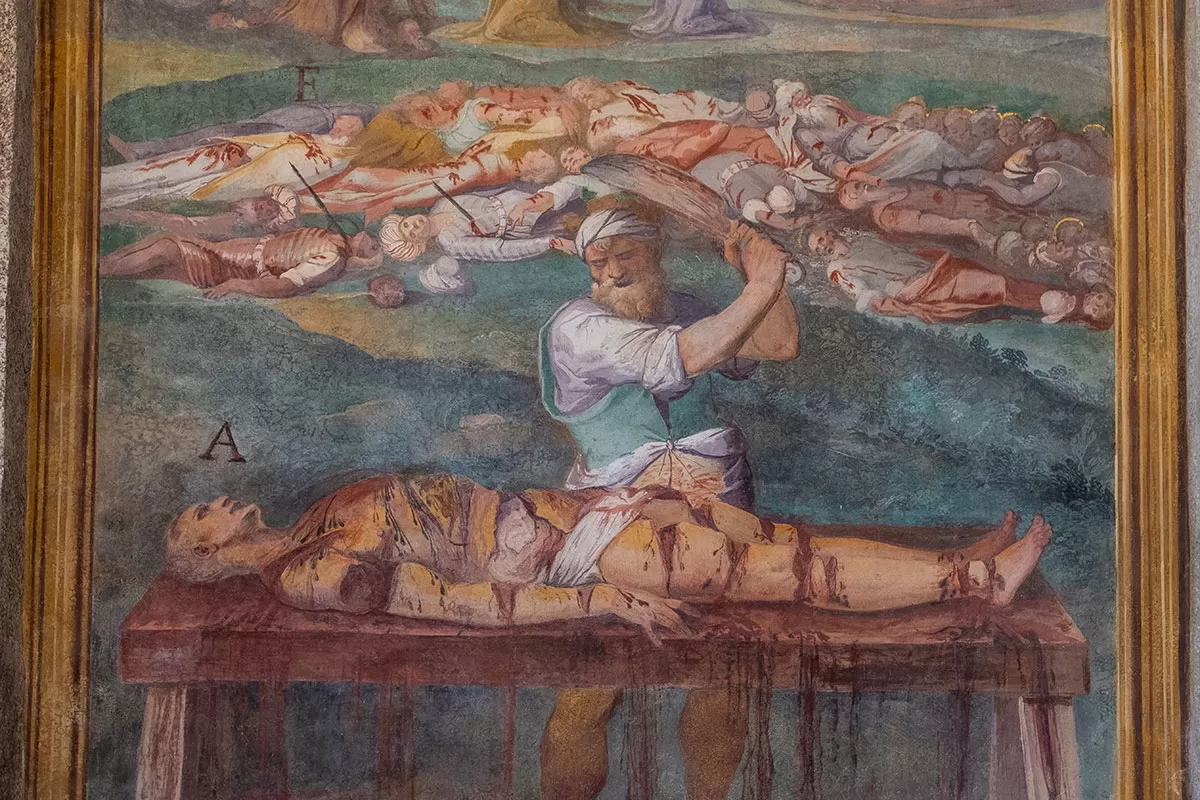
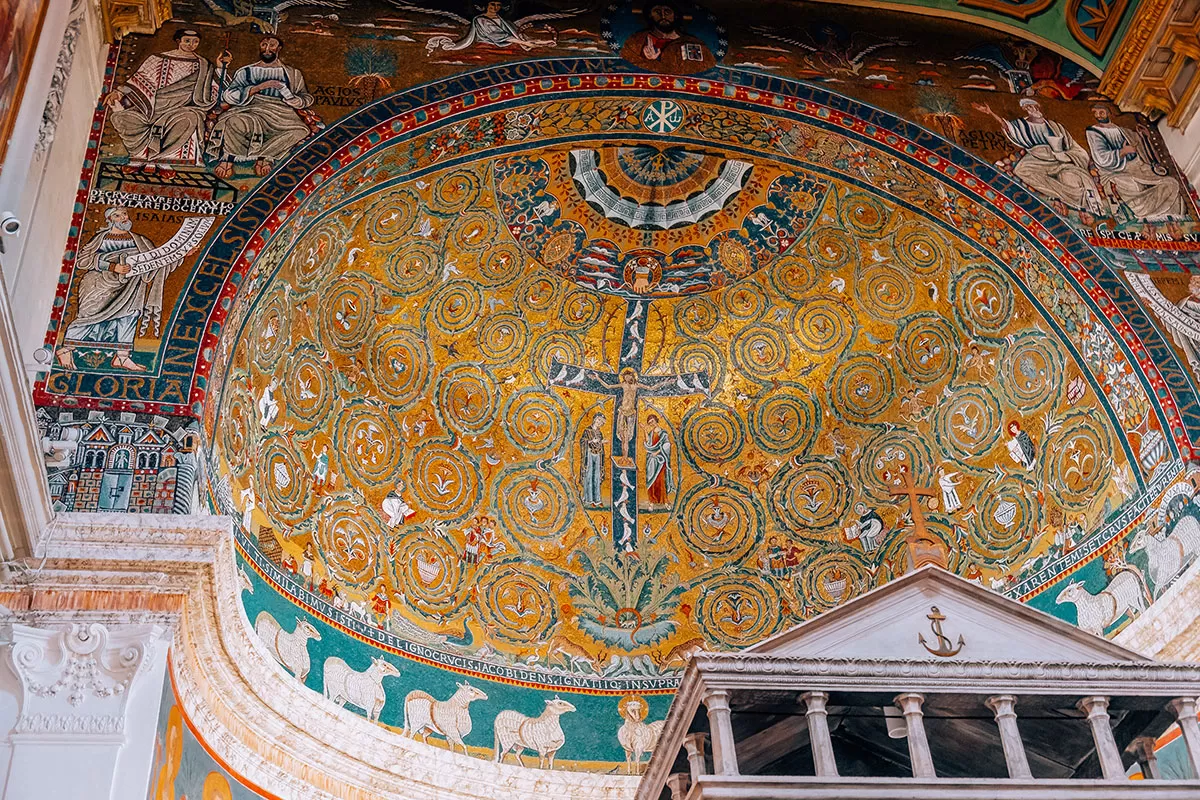
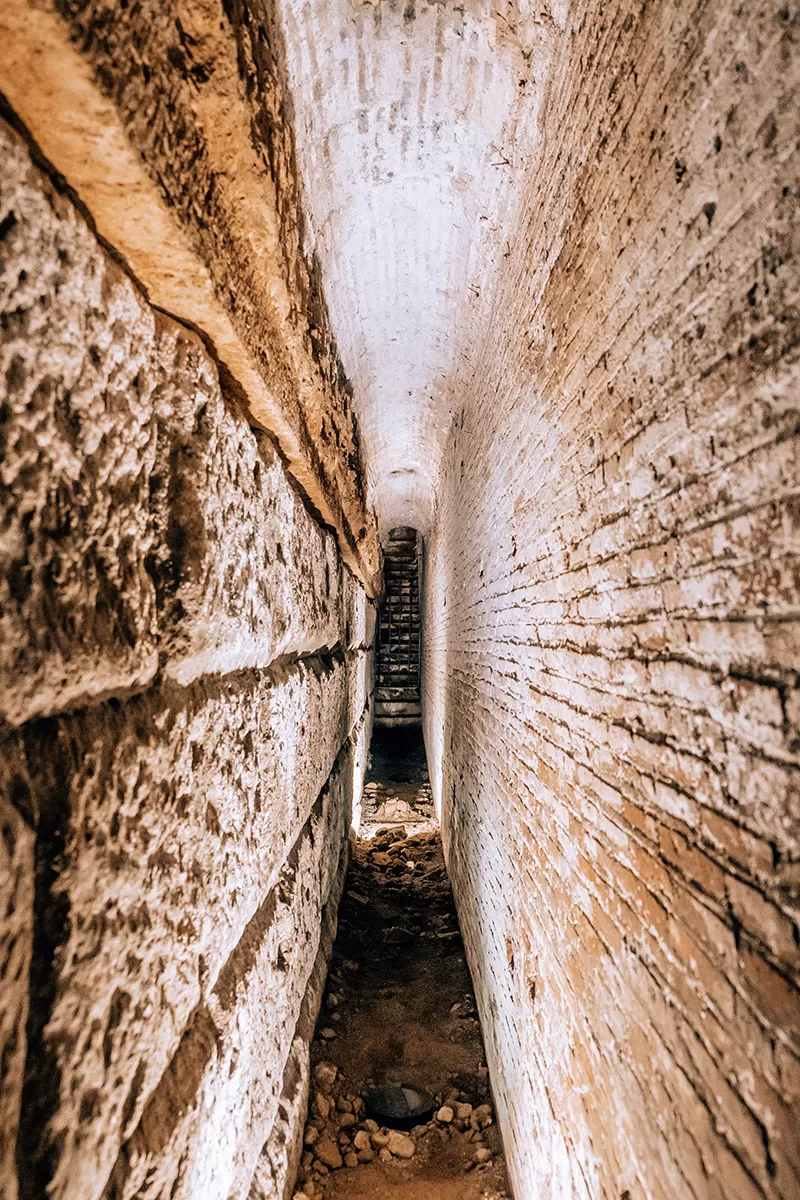
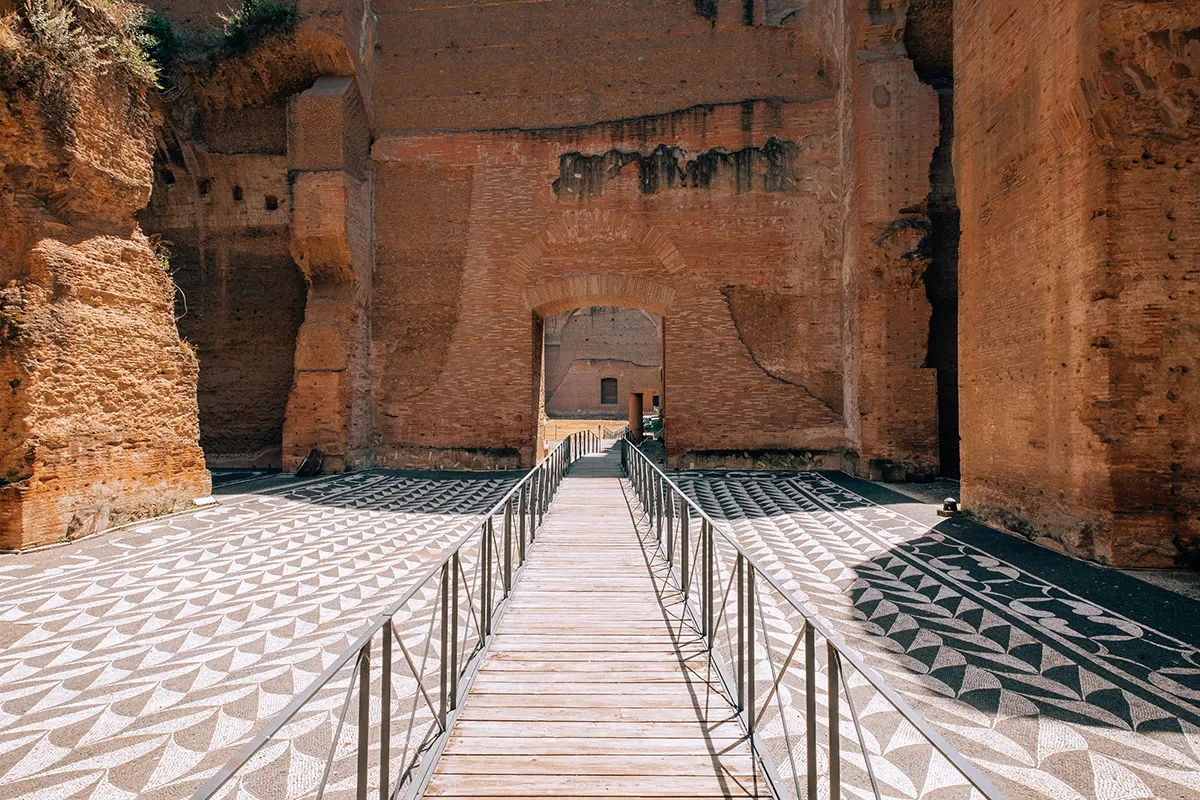
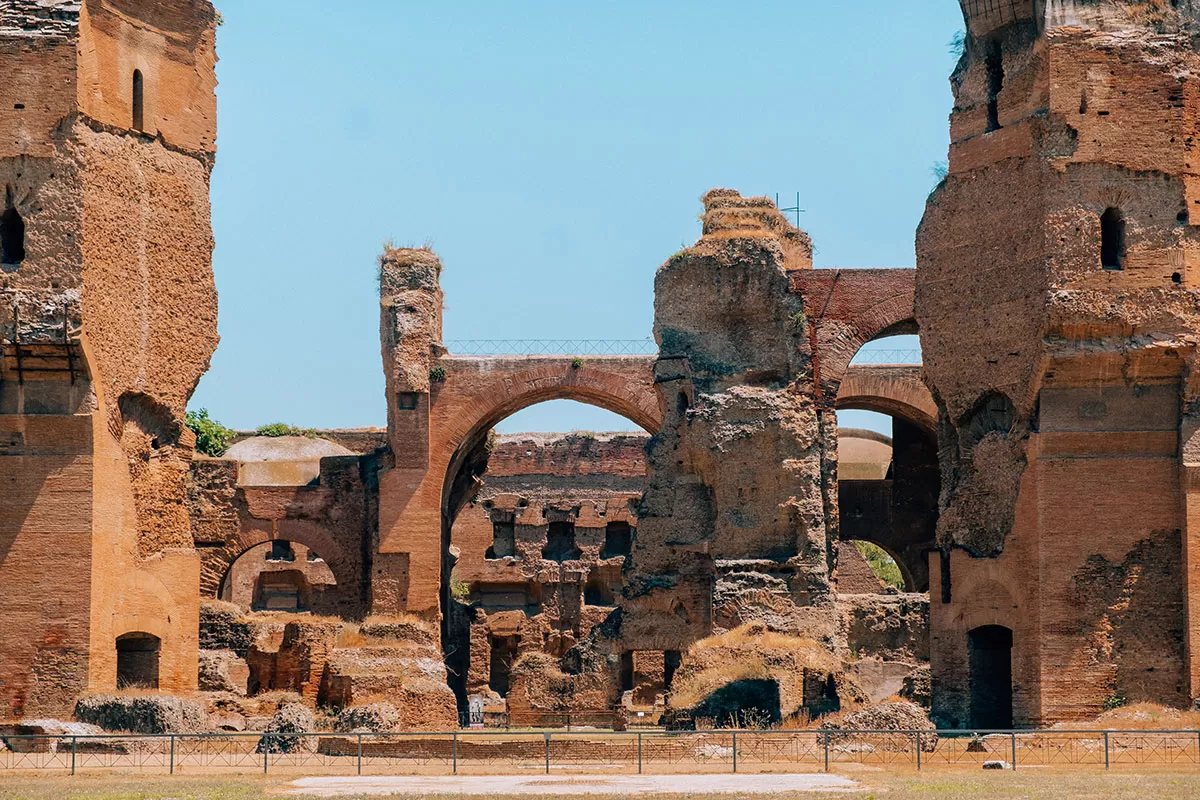
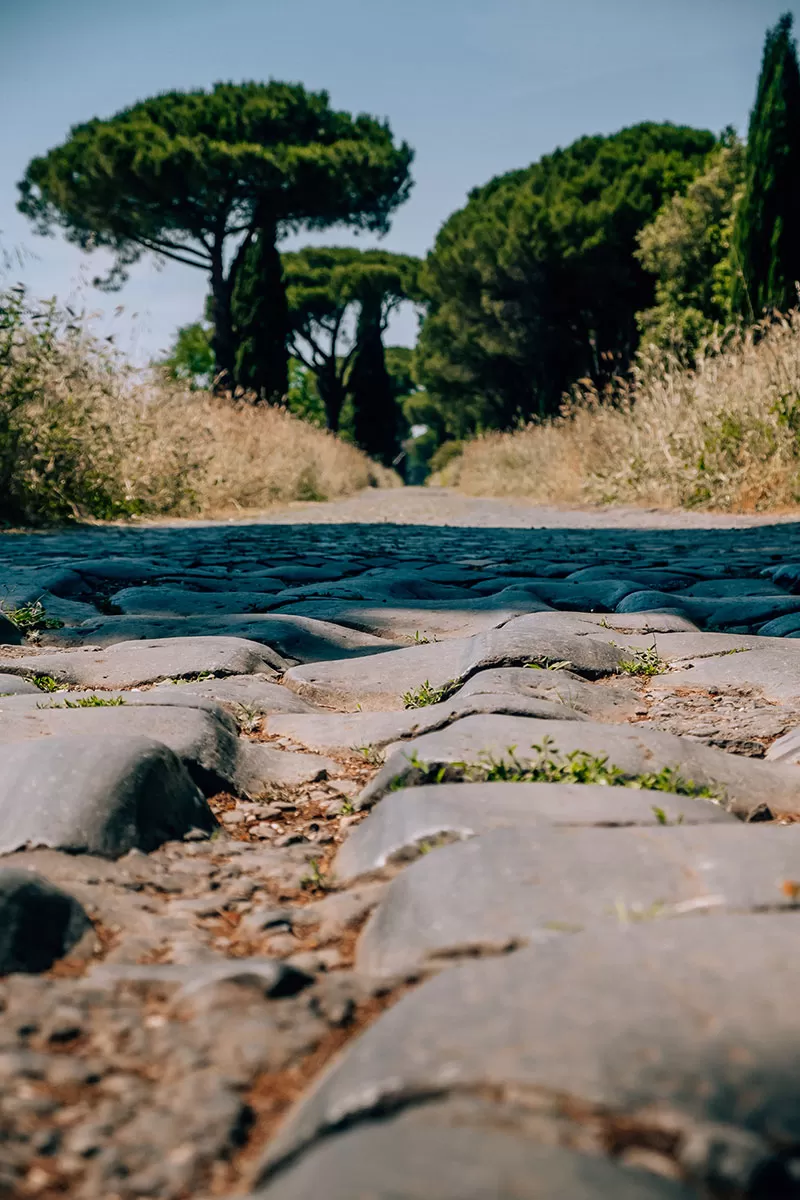
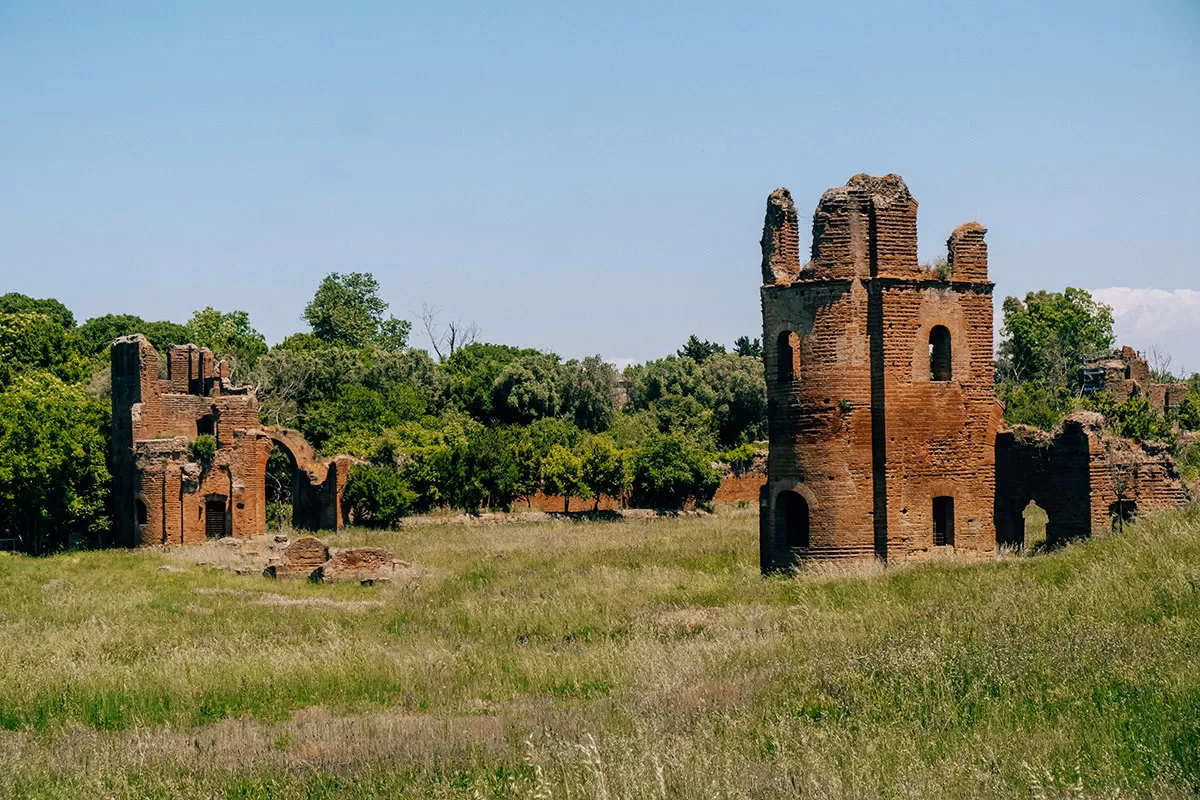
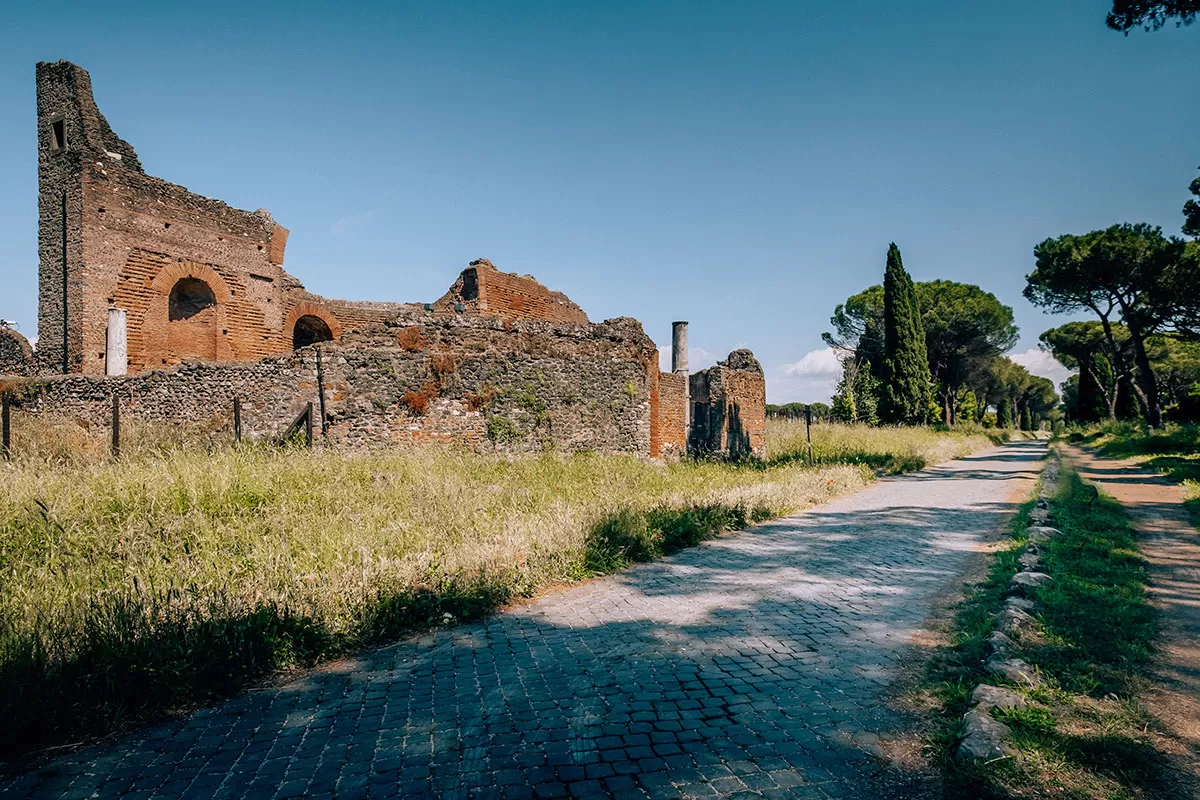
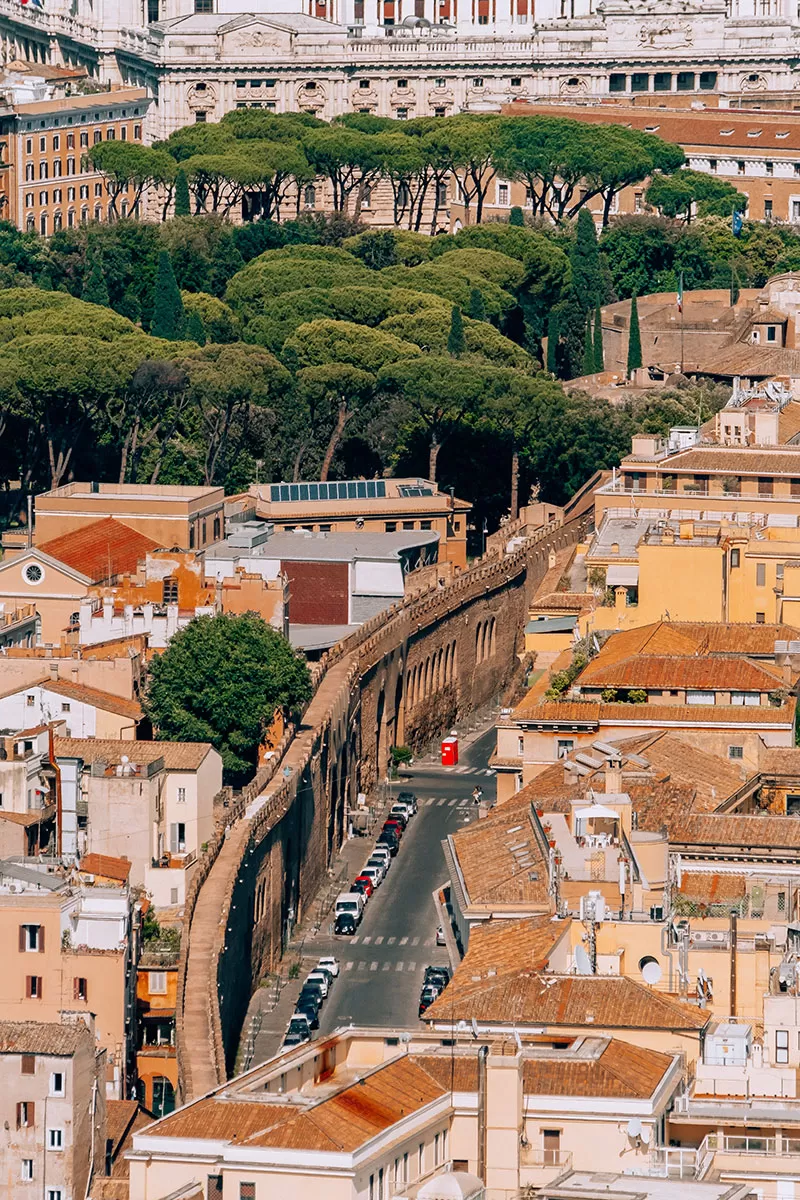
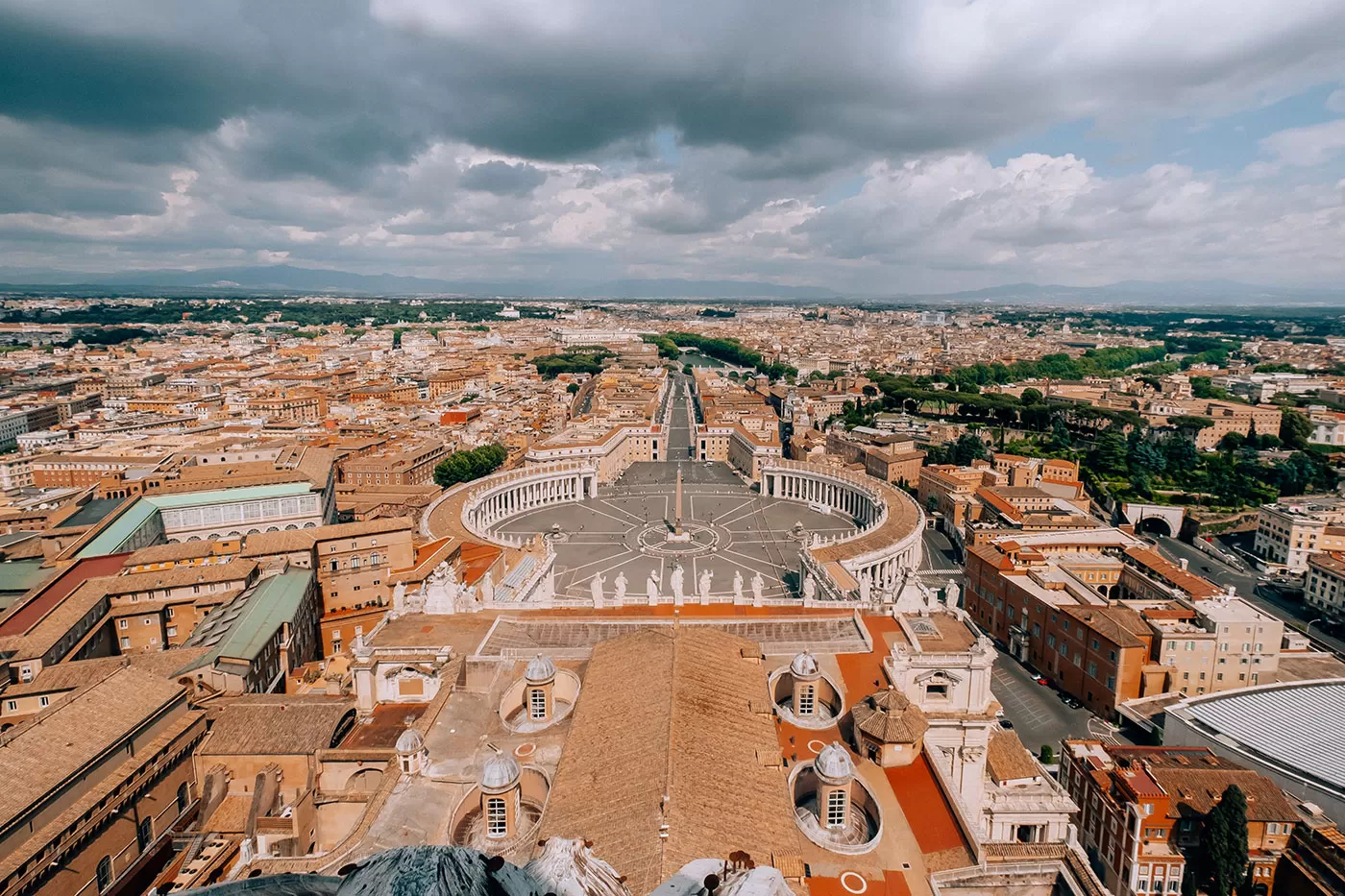
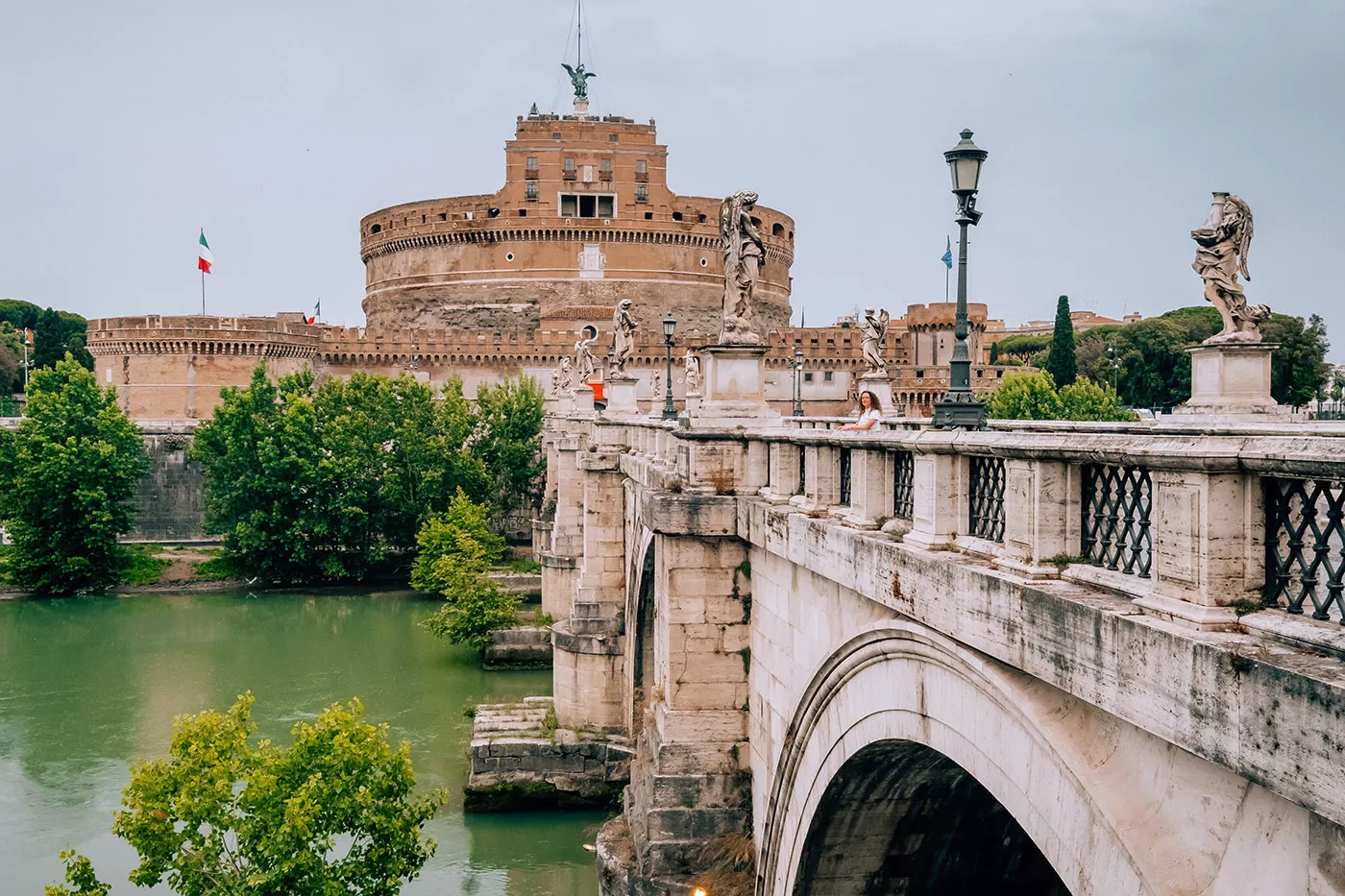
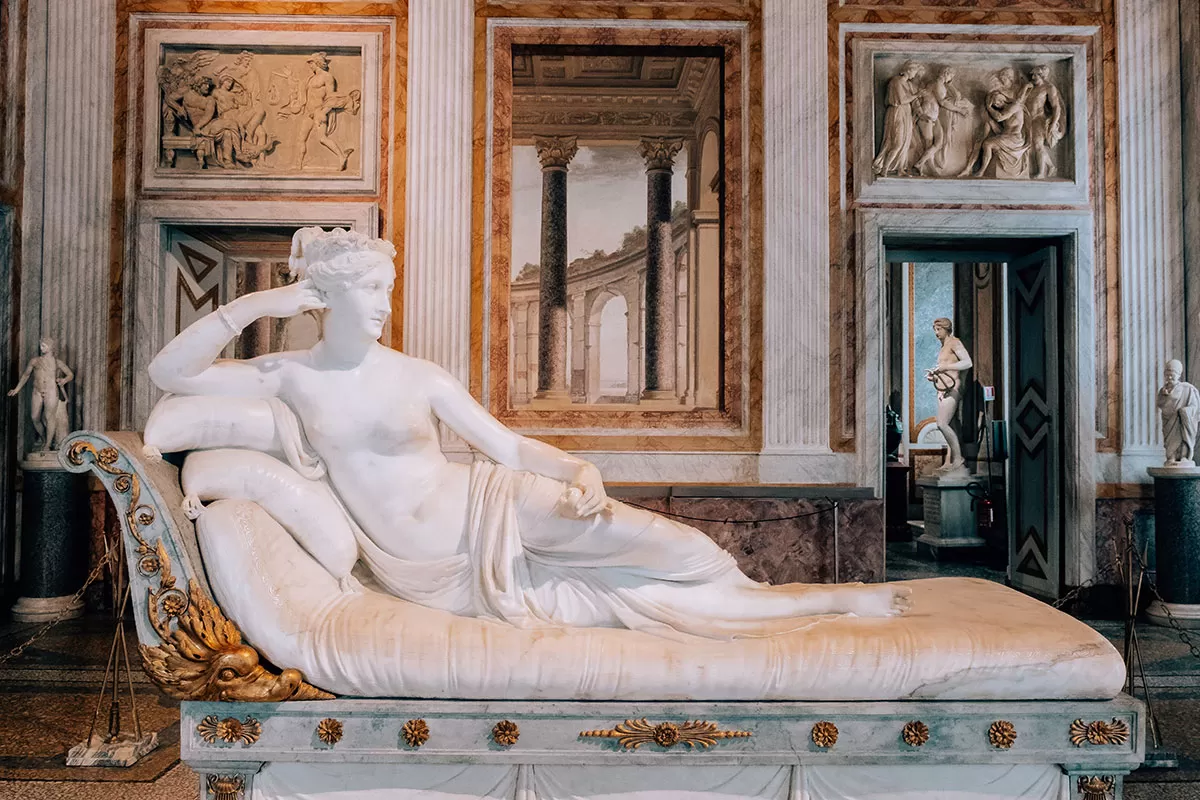
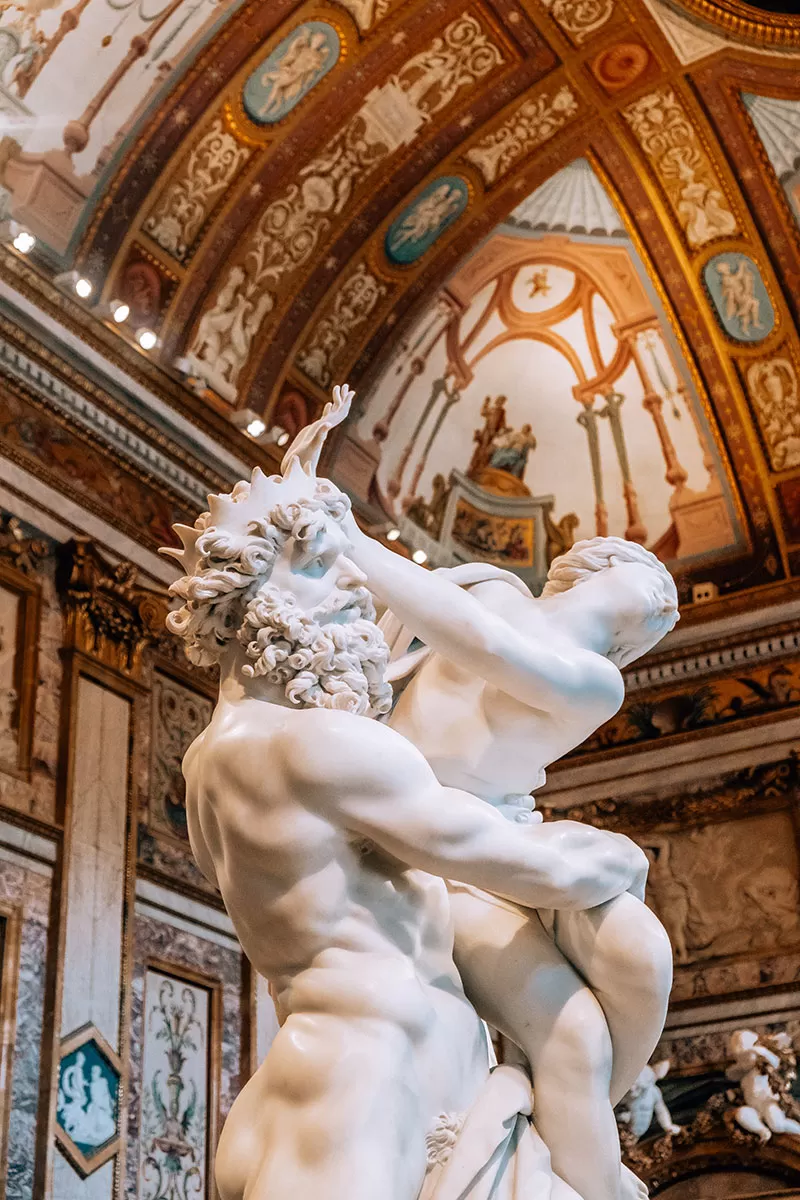
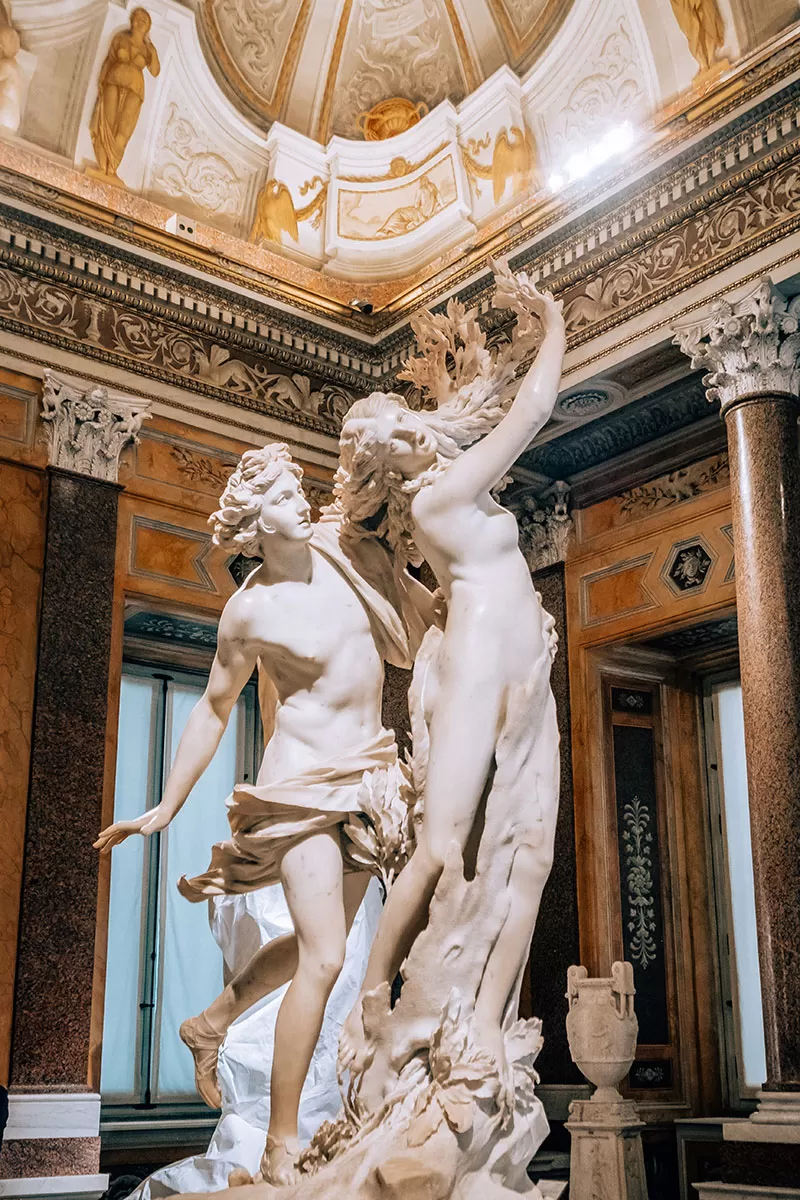
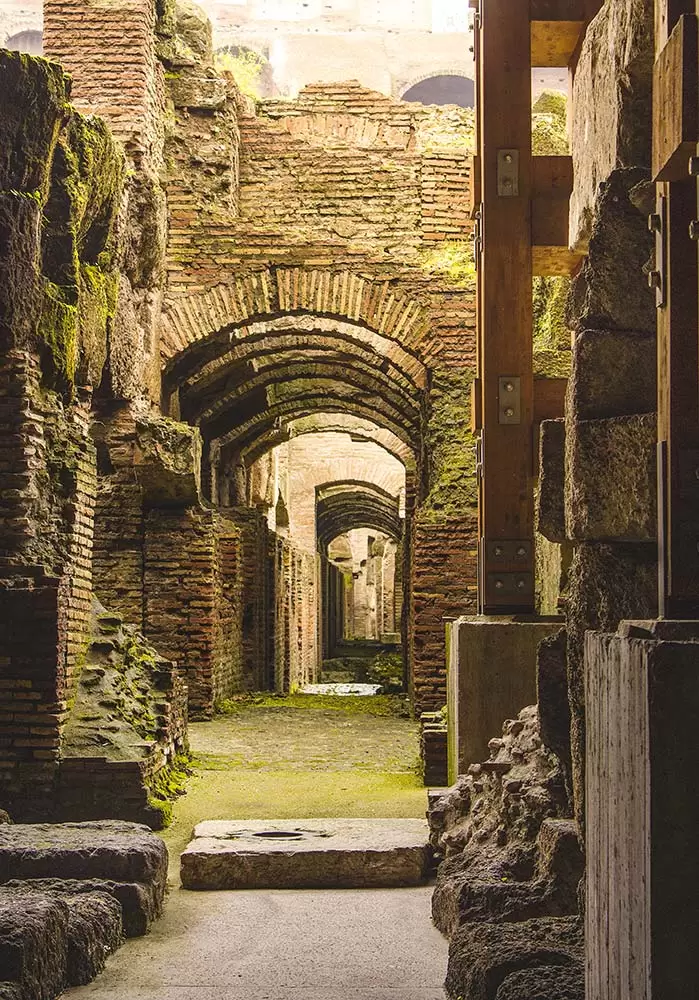
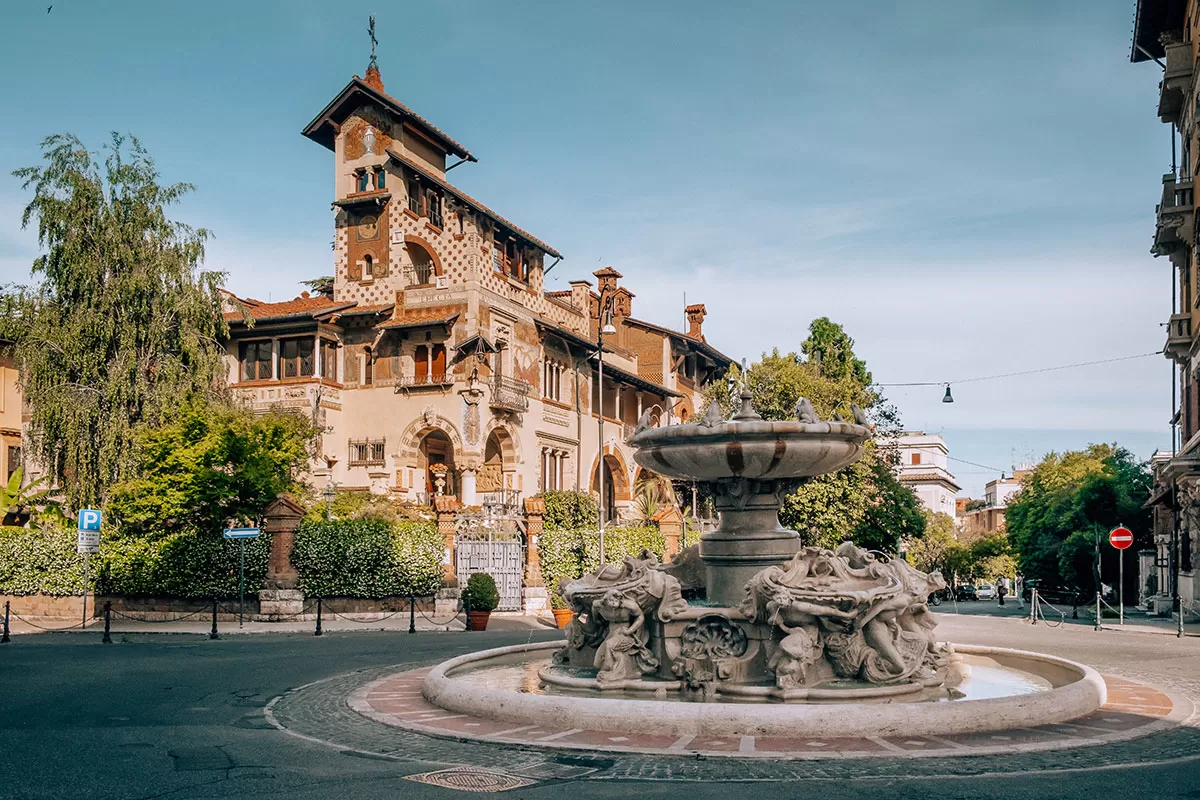
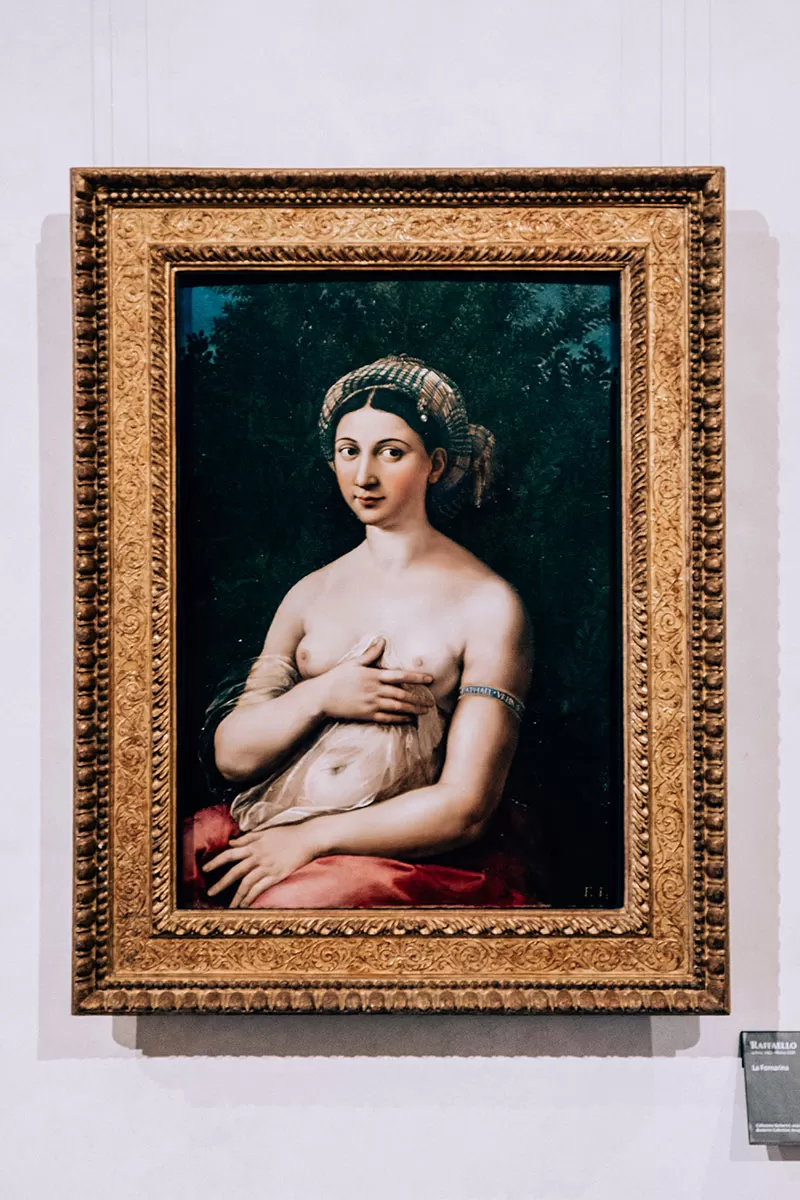
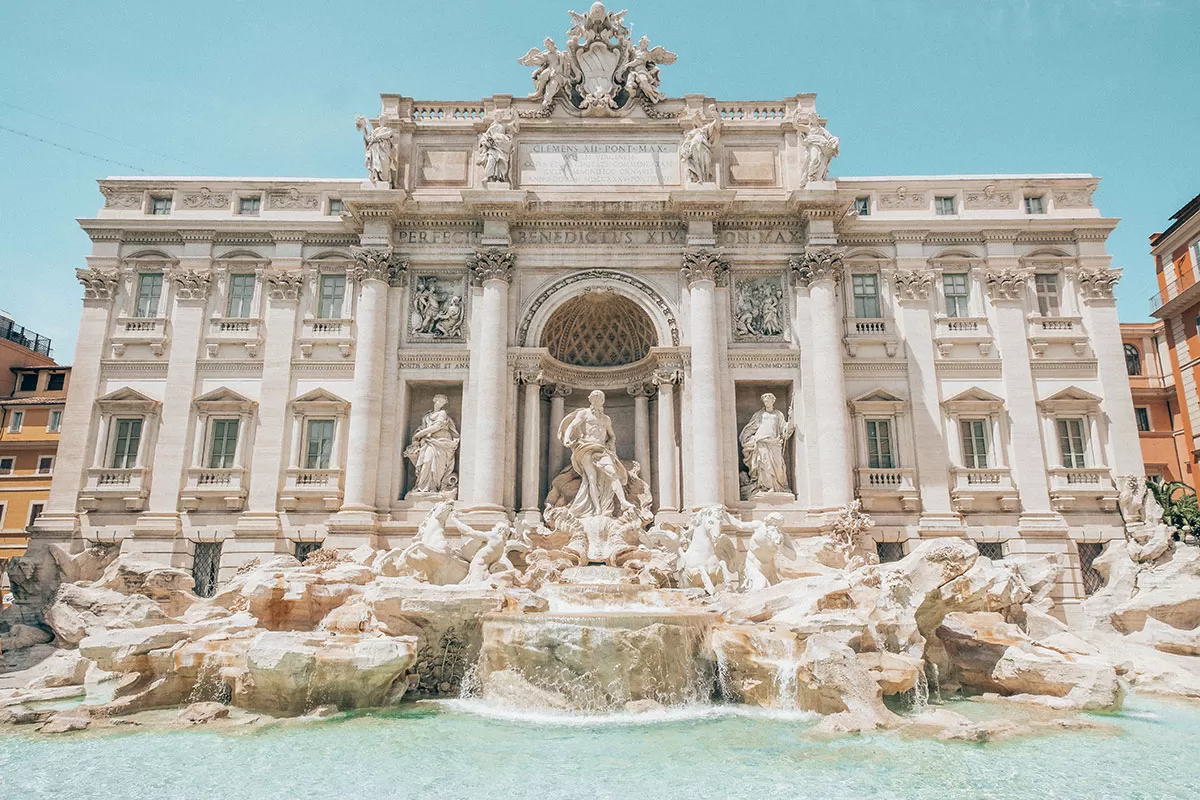
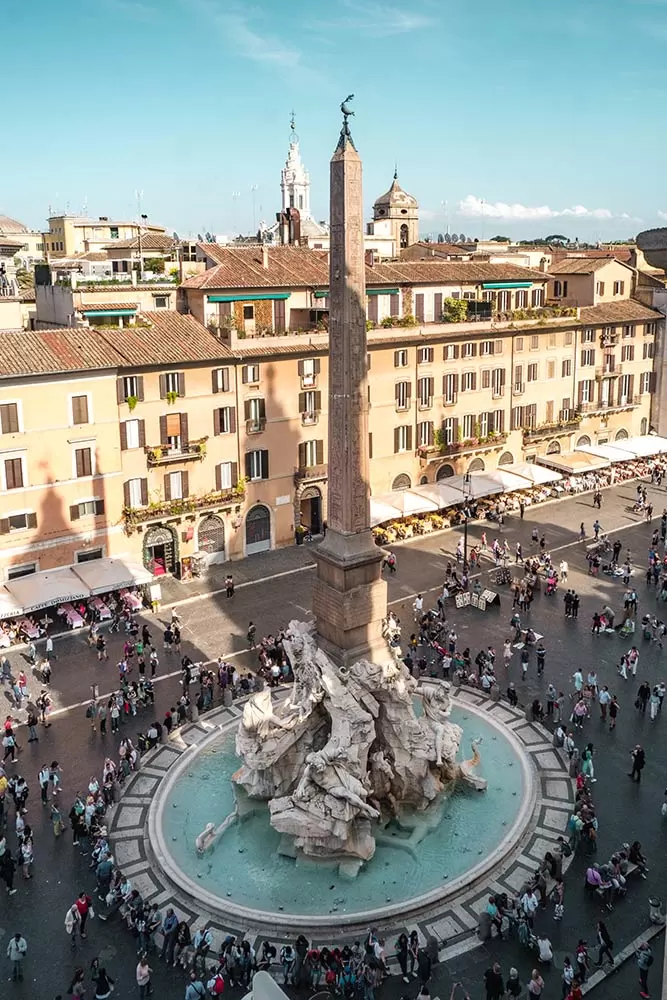
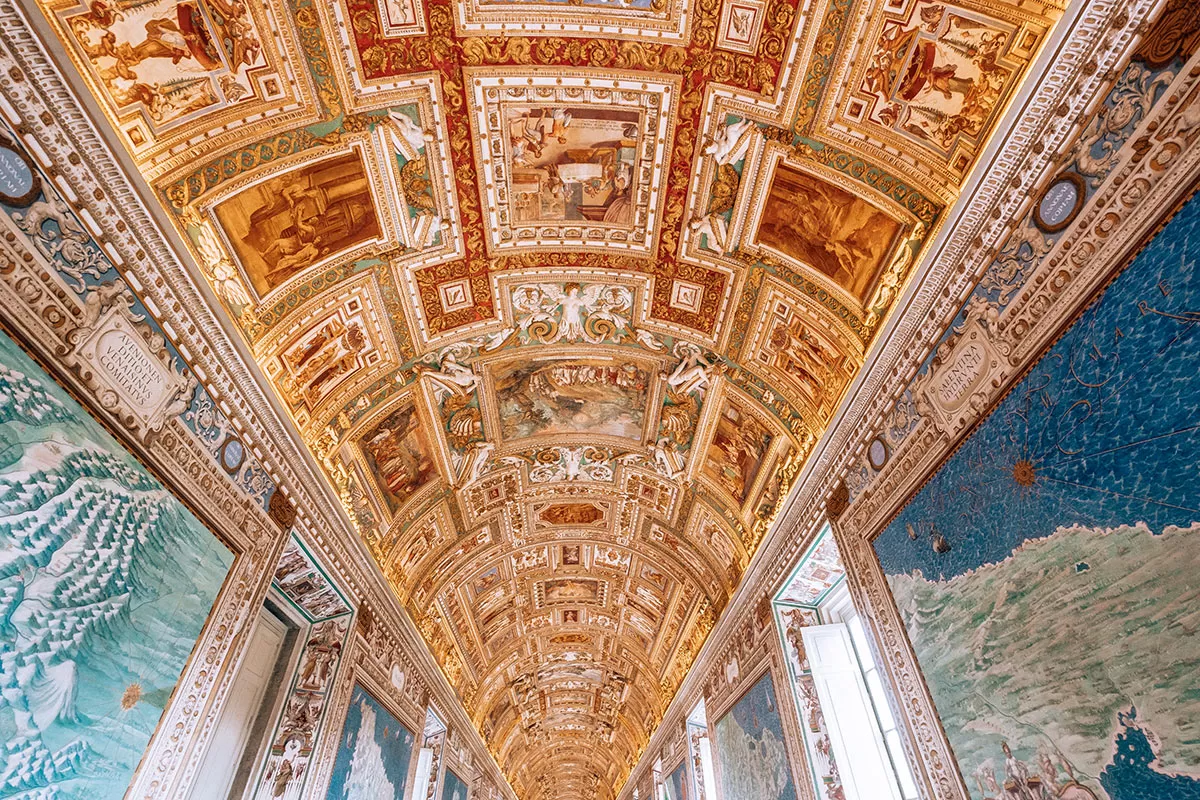
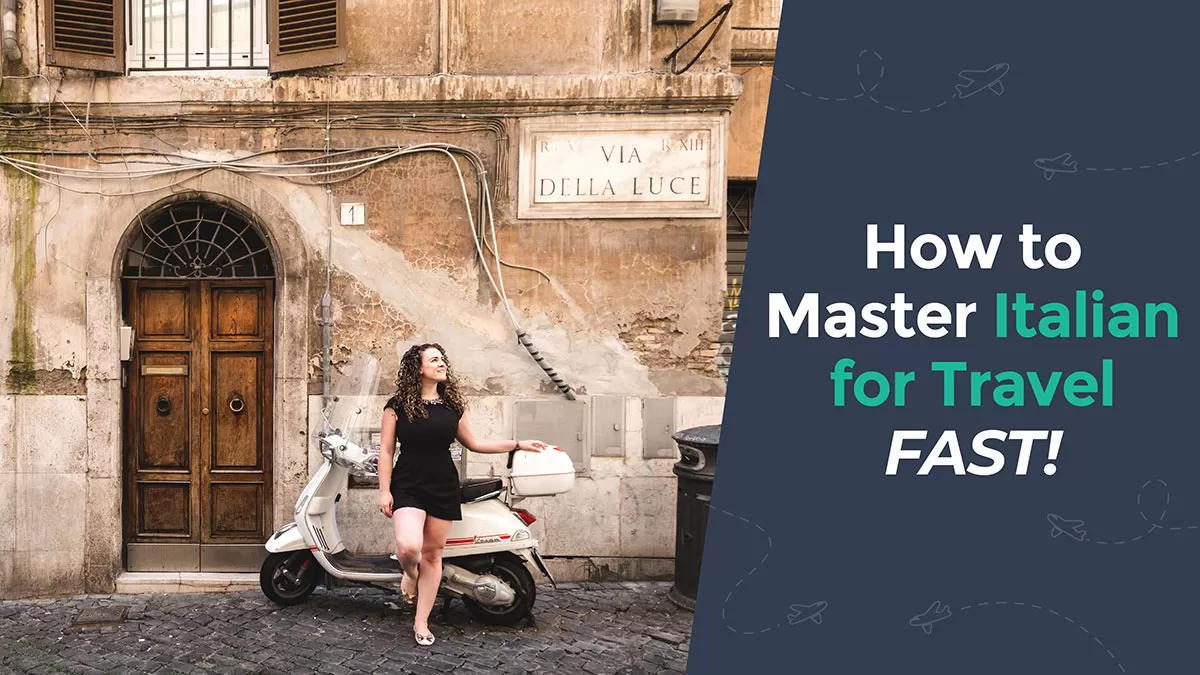

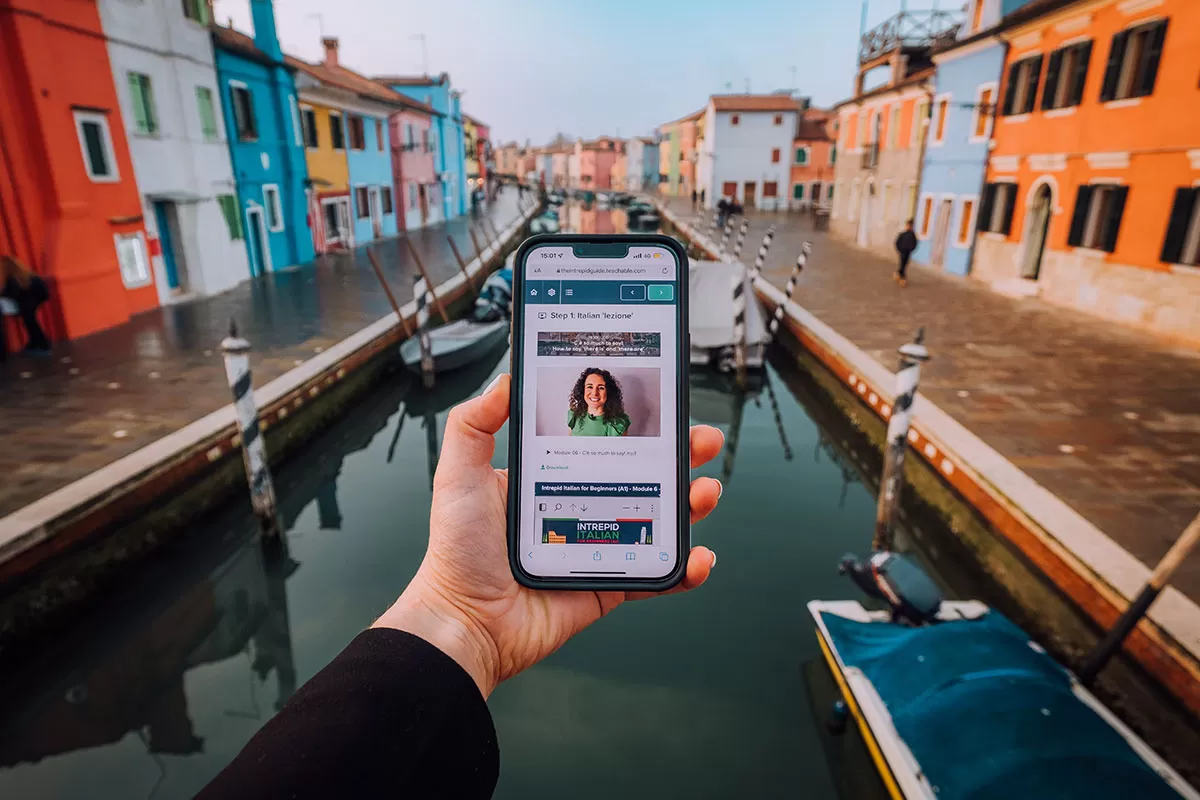
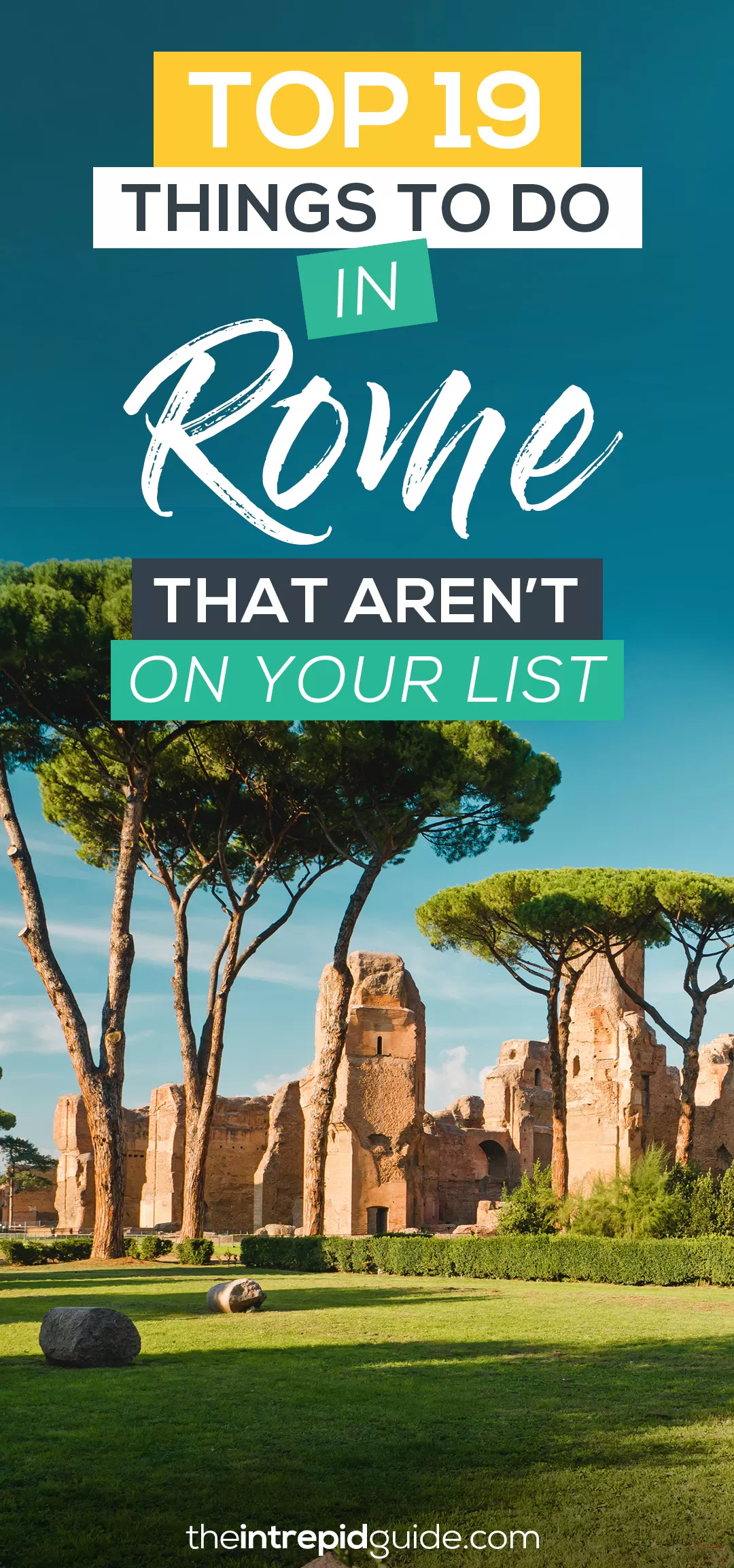
4 comments
merci pour toutes les infos, je n’ai plus qu’à y être 🙂
Merci a toi aussi, Hugo
Thank you for these ideas! I can’t wait to incorporate these into my upcoming trip to Rome. I’m always on the lookout for local adventures (in addition to the more touristy classics).. 🙂
My absolute pleasure, Bonnie. So happy that you found it useful 🙂